MAY/JUNE 2024
NOA TISHBY
The Hollywood insider uses her platform to advocate for Israel


TREATING TRAUMA
Our mental health post-October 7

The Hollywood insider uses her platform to advocate for Israel


Our mental health post-October 7
Enjoy only-in-Vegas experiences, hear from top-tier speakers, learn about Hadassah’s latest impact and network with Hadassah leaders and members.
We’re holding National Assembly, Board and Associates meetings, plenaries, workshops and something new — Freestyle Events, with the flexibility of à la carte scheduling. Choose what you want to attend. There’s something for everyone!
Visit hadassah.org/Vegas2024 for more information and to register. Invite friends and family!
Questions?
Contact meetingsandtravel@hadassah.org.


Show your support for Israel and its people — at a time when it’s so critically needed — by joining Hadassah on our Stand with Israel from North to South mission.

Check out our trips in September: Israel at Our Pace and From Poland to Israel — Stepping Into Our Future. TAKE YOUR LOVE OF ISRAEL ONE STEP FURTHER. Stand
• Meet with the families of the hostages in Hostages Square in Tel Aviv.
• Visit the site of the Nova Music Festival for a special memorial ceremony.
• Learn how Hadassah hospitals are making an impact in the war effort.
• And more.
June 2-June 7
Led by Dale Marcus Book now at go.hadassah.org/travel2024
©2024 Hadassah, The Women’s Zionist Organization of America, Inc. Hadassah®, the H logo, and Hadassah the Power of Women Who Do are registered trademarks of Hadassah, The Women’s Zionist Organization of America, Inc.
Join an unforgettable Jewish Journey through Including the secret story of the Chuetas revealed on the island of Majorca
November 4 – 15, 2024
Led by Yale Strom, Elizabeth Schwartz & Dani Rotstein
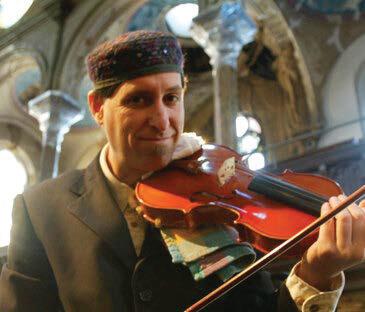


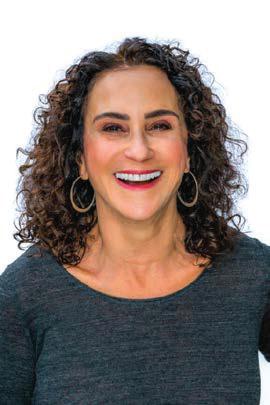

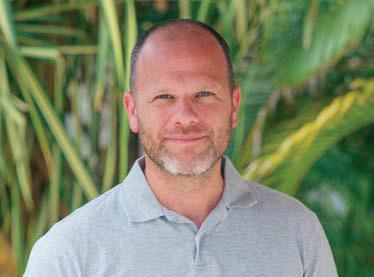










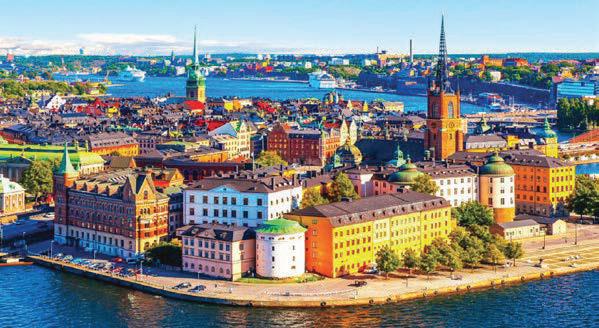



Rehabilitation is a long journey, often lasting months to years, a period often paired with essential mental health support. As the largest rehabilitation service provider in the Jerusalem area, Hadassah’s nearly completed, 323,000-square-foot Gandel Rehabilitation Center will be uniquely positioned to meet Israel’s expanding need for rehabilitation care. With the outbreak of war in 2023, the need for rehabilitation services intensified, leading us to open part of the Center ahead of schedule to care for wounded civilians and IDF soldiers.
Once fully open, our experts will serve 10,000 patients annually in the departments of physiotherapy, occupational therapy, neurologic and orthopedic rehabilitation and hydrotherap — offering a personal, holistic treatment program for each patient.

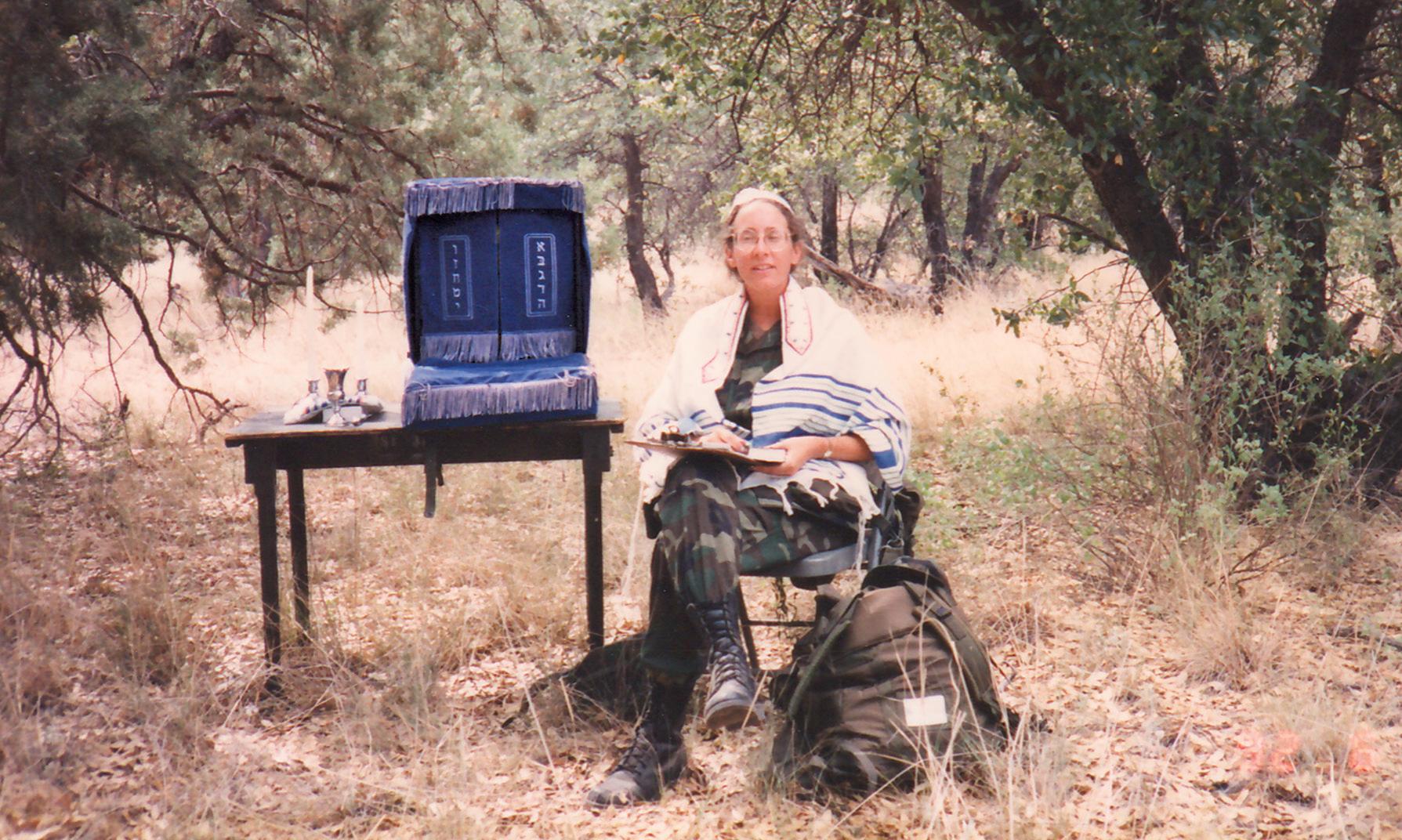

12 COMMENTARY
Memorial Day dawns in Israel
14 ESSAY
When Mom isn’t like other mothers
34 TRAVEL
Sunny, charming Provence


facebook.com/hadassahmag
@HadassahMag

Jillian, the first baby born via a gestational surrogate, is now 38, married with three young children, and she has a successful career as a marketing executive. When her mother looks into her eyes, she remembers the heartache it took to have her. But most of all, she sees joy and hope. And what can be accomplished with science, belief and love.
As a prominent face and voice of Israel and the Jewish people, Tishby is seemingly omnipresent: in both traditional and digital media, at nonprofit fundraisers and alongside Jewish leaders, celebrities and influencers speaking out against antisemitism and in support of the hostages kidnapped by Hamas and held in Gaza.
For Jews of every age, the global conflagration of anti-Jewish hate has been a triggering event, touching off the kind of unsettling thoughts that disrupt sleep and erode social and professional relationships. Then there’s the postOctober 7 trauma being experienced by Israelis and treated at the Hadassah Medical Organization in Jerusalem (page 26).
Through a host of events, calls to action and other initiatives, Hadassah’s End the Silence global campaign is raising awareness about Hamas’s weaponization of sexual violence against women. At the same time, Hadassah is once again honoring 18 Zionist women who represent the diversity and vibrancy of Israel’s supporters. They are Jewish and Christian, Ashkenazi and Sephardi, journalists, entertainers, public policy experts and campus activists (page 28).
38 FOOD
Joan Nathan’s life through her recipes
42 ARTS
• D.C.’s American Jewish military museum
• Rediscovering Bella Abzug
46 BOOKS
• Jewish poetry’s renaissance
• Lisa Barr’s ‘The Goddess of Warsaw’

38
The hadassah medical organization is busy 24 hours a day, and sometimes our staff members start working even before they walk through the doors. One recent day, in the middle of rush-hour congestion, terrorists opened fire on the outskirts of Jerusalem, killing one person and injuring five. Stuck in that same traffic jam were three nurses and one doctor from Hadassah Hospital Mount Scopus on their way to work. They left their cars to help injured commuters until ambulances arrived.
As patients and staff enter our Ein Kerem and Mount Scopus buildings these days, they pass photos of recent victims of terror and war, reminding all who enter of those who have fallen since October 7.
Jewish history and Jewish life today are heroic and tragic. We live in the modern world of wonders and in an endless cycle of calm and violence. As May begins, Hadassah looks forward in America to Women’s Health Month and National Nurses Week, highlighting two hallmarks of our advocacy. In May, we also observe Yom Hashoah, Yom Hazikaron and Yom Ha’atzmaut, this year all weighted with fresh meaning and raw memory.
I comfort myself with a combination of Ecclesiastes and Les Misérables: A time to laugh, a time to mourn…. And in too many Israeli homes, empty chairs. And in some communities, empty tables.
Hadassah wasn’t founded because the world was kind to the Jewish people. Or because women were free to do anything their talents would allow. But what we have accomplished since Henrietta Szold called the first meeting to order 112 years ago is astonishing.
Those nurses and doctor who helped injured commuters are—like all of us—part of the organization that built Israel’s health care infrastructure. Our medical center in Jerusalem is renowned the world over for treating the heterogeneous population of the Jewish state and its surroundings. And HMO was included in Newsweek’s 2024 list of the world’s best hospitals for its oncology and cardiology specialties.
In our schools of medicine, nursing, dentistry and public health, Hadassah has helped train generations of doctors, nurses and other health professionals. We have also worked to absorb thousands of refugees and immigrants and nurtured at-risk students in our Youth Aliyah villages. One of the heroes we mourn is Israel Defense Forces Staff Sgt. Simon Shlomov, a lone soldier from Kazakhstan and a graduate of our Meir Shfeyah youth village, who died in Gaza on February 18.
Hadassah transformed the role of Jewish women. We have been a force for women’s empowerment, reproductive rights and gender equity in

medical treatment and research, in both America and Israel. We have been outspoken in the corridors of power—in Congress and with the United Nations and the International Committee of the Red Cross—regarding the horrific violence against women perpetrated by Hamas.
We do all our work under the Zionist banner. Far from the warped image held by many of Israel’s critics, Zionism—the Jewish national liberation movement—is the antithesis of colonialism. Ancient Israel itself was colonized, first by the Greeks, then the Romans. We have the holidays to prove it.
Zionism has done more than restore Jewish sovereignty. It has allowed us to know ourselves. With the ingathering of exiles in Israel and increased Jewish unity in Diaspora communities, we have learned to appreciate our rich diversity.
Last year, to mark the 75th anniversary of Israel’s independence, Hadassah honored an inaugural list of 18 “Zionist Women You Should Know,” those who are making a difference and who represent the Jewish spectrum. Among the honorees were a Hispanic American journalist, an Iranian American attorney, a Chinese American educator and a Ukrainian American entrepreneur. I couldn’t be more excited by our 2024 list of American and Israeli Zionist women (see story, page 28).
For Hadassah, Zionism means building the Jewish nation, advancing humanity and never forgetting those empty chairs and tables.

Hadassah shaped the field of medicine in pre-State Israel. Today, Hadassah hospitals are counted among the very best in the world.
From its earliest days, Hadassah's public health initiatives have focused on education, prevention and innovation. Today, Hadassah Medical Organization experts publish research in prestigious journals, train medical professionals and teach public health students from around the globe. We’ve earned praise for breakthroughs in every discipline of our work, as well as for exemplifying what it means to be a good citizen of the world — in peacetime and wartime.
The Hadassah Medical Organization is bringing Hadassah healing into the future, modernizing its facilities — and health care in Israel.
Hadassah heals our world. Play an important role. Please donate at hadassah.org/donate.
CHAIR Ellen Hershkin
EXECUTIVE EDITOR Lisa Hostein
DEPUTY EDITOR Libby Barnea
SENIOR EDITOR Leah Finkelshteyn
DIGITAL EDITOR Arielle Kaplan
EDITOR EMERITUS Alan M. Tigay
DESIGN/PRODUCTION Samantha Marsh
EDITORIAL BOARD
Roselyn Bell
Ruth G. Cole
Nancy Falchuk
Gloria Goldreich
Blu Greenberg
Dara Horn
Ruth B Hurwitz
Francine Klagsbrun
Anne Lapidus Lerner
Curt Leviant
Joy Levitt
Bonnie Lipton
Marcie Natan
Nessa Rapoport
Sima Schuster
Susan S. Smirnoff
Barbara Topol
HADASSAH NATIONAL PRESIDENT Carol Ann Schwartz
ADVERTISING
Celia Weintrob, Advertising and Marketing Manager
Phone: (212) 451-6283
Email: cweintrob@hadassah.org
Randi O’Connor, Advertising Sales Associate
Phone: (212) 451-6221
Email: roconnor@hadassah.org
Sara Ruderman, Ad Sales Representative
Phone: (585) 233-2050
Email: adsales.hadassah@gmail.com
Navigating these difficult times | By Lisa Hostein
Iwas supposed to be writing this column from Israel. But Iran’s brazen missile assault on the country on April 13 forced the postponement of my trip. I was to be representing Hadassah and Hadassah Magazine among a delegation of highpowered women under the banner “I Believe Israeli Women.” We were going to bear witness and to demand that rape must not be used as a weapon of war, as Hamas so violently did on October 7 and beyond.
Now more than ever, as Iran and its Hamas and Hezbollah proxies continue to threaten the safety of all Israelis, silence on these issues is not an option.
Hadassah has been in the forefront of sounding the alarm about sexual violence with its global #EndTheSilence campaign—from a petition to, and events at, the United Nations to public demonstrations and displays of red shoes and yellow fingernails (page 32).


Noa Tishby also has been far from silent. As our cover profile shows, the Israeli-born Hollywood activist is using her platform to advocate for Israel and to fight antisemitism (page 18). Debra Messing is another actor not afraid to speak out. She is one of “18 Voices for Israel” being honored by Hadassah this year for making Zionism part of their personal and professional lives (page 28).
This issue is filled with Jewish women who proudly melded their Jewish and professional selves, including Joan Nathan, the grande

dame of Jewish cooking in America (page 38); Bella Abzug, the congresswoman and feminist activist (page 43); and Rabbi Bonnie Koppell, the first Jewish female military chaplain, one of several servicewomen featured in the National Museum of American Jewish Military History (page 42).
As we navigate these difficult times, mental health needs are more pressing than ever. Learn how the Hadassah Medical Organization is treating the psychological fallout among Israelis post-October 7 (page 26) and how American Jews of all ages are feeling the impact of the rise of antisemitism (page 22).
Even Jewish poets, as we report in a piece on the renaissance of Jewish poetry, are feeling isolated these days. They are among the targets of a growing hostility toward Jewish writers in general (page 46).
In honor of Mother’s Day, read the poignant story of a woman whose mother suffered from mental illness at a time when there was no name or treatment for it (page 14) as well as the joyous story by a mother whose daughter was the first baby in history born from a gestational surrogacy (page 16).
With the spring holiday season upon us, let us all focus on the triumph and resilience of our people. As we observe Yom Hashoah (May 6), Mother’s Day (May 12), Yom Hazikaron (May 13), Yom Ha’atzmaut (May 14), Memorial Day (May 27) and Shavuot (June 12-13), we have much to mourn but also much to celebrate. Am Yisrael Chai.

Share this puzzle of Zionist women with family and friends along with a gift to benefit your favorite magazine.



As the daughter of Holocaust survivors, I was eager to read “Teaching the Holocaust” in the March/April 2024 issue. My parents lived their lives dedicated to “Never Again.” They spoke to comparative religion classes at my children’s high school. Years later, I have been able to do the same in my community by speaking about my parents’ experiences.
However, it is never enough. I was especially disappointed to see by the map included in the article that my grandchildren’s home state of Maryland has no mandate for Holocaust education.
Doris Goldsmith Melnick Newport Coast, Calif.I suggest that educators prioritize survivor testimonies and take advantage of the many histories that were recorded through the USC Shoah Foundation and, here in Florida, by the Holocaust Documentation and Education Center.
I remember when my parents, both Holocaust survivors, met with a trained interviewer and spoke about their lives before, during and after the war. They did it for future generations, when they would be not around. These interviews are precious.
At the David Posnack JCC in Davie, Fla., the state-of-the-art Mania and Max Nudel Holocaust Learning Center was created using, among other sources, survivor testimonies. The center also launched a program that connects the second generation with high school students to tell our parents’ stories. As a recent participant, I can say that it was a very meaningful opportunity for the students as well as for me.
Lorraine Solomon Glass Hollywood, Fla.
As the author writes in the last paragraph of the article, “Students need to understand that it begins with words and discrimination and ideology.” This is also true for bigotry, racism, Christian white nationalism and the myriad conspiracy theories floating about. We need to discuss these subjects not only in schools but also with parents, relatives and friends to bring about greater democracy throughout our great nation and the world.
Hal Rothberg Calabasas, Calif.When the March/April issue hit mailboxes, I got calls from supporters of the New Mexico Holocaust & Intolerance Museum and Gellert Center for Education, where I serve as board secretary, questioning the article’s map titled “Holocaust Education State by State.” While it’s true that the phrase “Holocaust education” appears in our state’s constitution, as the map shows, New Mexico does not mandate Holocaust education.
But that has not stopped the museum from having robust programs. We work with teachers and offer lessons translated into Spanish. We provide free museum tours and Holocaust survivor speaking events to all New Mexico schools.
Through our accreditation as a Community of Holocaust Education Centers partner, we share content from the United States Holocaust Memorial Museum. And we have participated in the Olga Lengyel Institute for Holocaust Studies and Human Rights program for teachers throughout our state for almost 20 years.
Jennie
L. Negin Albuquerque, N.M.As a member of the Barbados Jewish community, I was thrilled to read “Barbados and Its Jews” in the March/April issue. The 350-year history of the Sephardi community shows the importance of Jews in the development of the island’s industry. However, I was disappointed that only a brief mention was made of the 100-year-old Ashkenazi community. For anyone interested in our current community, I recommend Peddlers All: Stories of the First Ashkenazi Jewish Settlers in Barbados edited by Simon Kreindler.
And two corrections: The community does not bring in a rabbi from the United States for the holidays but instead relies on a lay person. And Portuguese, not Ladino, appears on some of the tombstones in the Jewish cemetery.
Gilda Oran Hollywood, Fla., and BarbadosWe received many more letters in response to “Teaching the Holocaust” (March/April 2024 issue) than we are able to publish here. Visit hadassahmagazine. org to read more. And email your letters to the editor to letters@hadassah.org
WE OFFER A MIXED ENVIRONMENT FOR RELIGIOUS AND SECULAR, FOR NEW IMMIGRANTS AND NATIVE ISRAELIS
Nofei Yerushalayim has a variety of interesting social & cultural activities. Both in English and Hebrew
Nofei Yerushalayim provides residents with 24 hour medical care and supervision. There is also a nursing wing in the building
There are a number of options which are tailored to the needs and financial abilities of each potential resident: Monthly rental, Single Payment Entry Fee or Deposit
Come visit us or call for further information: +972-2-6751-311
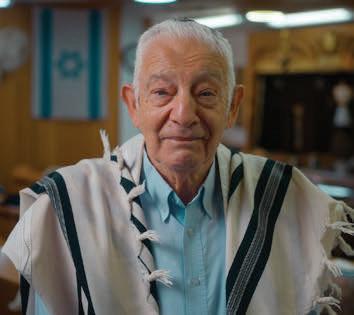



“We will dance again” reads the tattoo now inked on the left forearm of Mia Schem, a French Israeli tattoo artist who was kidnapped by Hamas terrorists at the Nova music festival on October 7 and was among those released in November. She is one of the growing number of Israelis and Jews around the world getting tattoos, traditionally considered taboo in Judaism, as a form of commemoration of the atrocities. Most, like Schem, arranged their tattoos privately, but hundreds of others have taken advantage of a new initiative that is offering free inking.
Artists4Israel, a nonprofit that sponsors global art campaigns to counter anti-Israel hate, first created the Healing Ink project in 2016 to provide free tattoos to survivors of terror, injured Israel Defense Forces soldiers and families of terror victims. In response to the Hamas attacks, the group launched Healing Ink 10.7, which involves a series of ongoing group tattooing events in Israel and the United States, as “an immediate answer to the needs of the moment,” said Craig Dershowitz, CEO of Artists4Israel. “Tattoos are a way of reclaiming their body and moving the healing process forward,” he said of the thinking of some of the Israelis who are getting tattoos. “For most, the idea of taking agency over their body and actions is a way of finding power and strength in the


midst of a terrible situation.”
According to Dershowitz, popular tattoo choices include images that had already been inked on murdered loves ones, memorial designs that incorporate names and dates, and “lots of broken hearts.” One concept has been the words “we will dance again”— similar to Schem’s tattoo—with the date 1072023 written like the serial numbers that prisoners received at Auschwitz, he said.
Sarah Tuttle-Singer, the new media editor at The Times of Israel, said that after the attacks, she visited a Jerusalem tattoo parlor to get a dragonfly inked on her right shoulder to “represent resilience and transformation. Despite their delicate beauty, they have grit.”
The dragonfly design is the work of German Israeli influencer and tattoo artist Shani Louk, who was kidnapped at the Nova festival and whose death was confirmed by Israel on October 30. Since news of her murder, the Louk family has encouraged people to download her designs and use them for their own tattoos, as a way of honoring her, Tuttle-Singer said.
“Like the dragonfly, we found the strength to adapt, to rise above and to seek the light,
always,” she said about the strength of Israelis. “That’s what we do.”
Working out of her home in Woodland Hills, Calif., professional genealogist Ann Gleich Harris pores over the Yiddish and Hebrew text from a scanned 500-page Yizkor book memorializing the Ukrainian shtetl of Zborov. Amid a renewed interest in these memorial books thanks largely to the burgeoning field of Jewish genealogy, Harris is one of hundreds of dedicated volunteer translators and editors worldwide who spend untold hours making these works accessible to English speakers. Yizkor books were compiled by survivors after World War II in an effort to document Jewish life before the war as well as provide firsthand accounts of the Holocaust and its aftermath. Most were printed by small associations and committees of survivors, partly for
COURTESY OF SARAH TUTTLE-SINGER (TOP, CENTER); COURTESY OF ARTISTS4ISRAEL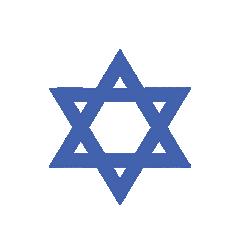
Activist and Hollywood insider Noa Tishby promised. So did the comedian Modi Rosenfeld, Rabbi David Wolpe, pro-Israel social media star Lizzy Savetzky and Bernie Marcus, co-founder of The Home Depot.
They are just a few of the nearly 50,000 famous and not-so famous people who have signed the Jewish Future Promise (JFP). Previously known as the Jewish Future Pledge, the campaign encourages Jews to promise that at least half of what they bequeath to charity will be earmarked to build a Jewish future. Signers either stipulate in their wills which Jewish causes to support or leave it to their heirs to choose.
None of the funds go to JFP but instead flow to the organizations directly, anything from groups that fight antisemitism, support Israel or create a sense of community, like Jewish women’s organizations, summer camps or educational programs.
“It’s about not making a promise to a single organization, but to the


their own use in reciting Kaddish for their murdered landsmen. Vital records perished in most of these communities, so Jewish genealogists today have come to rely on Yizkor books to fill in important details, such as familial names and relationships.
There are approximately 1,500 physical
Jewish people,” said Mike Leven, a philanthropist and hotel and casino executive who co-founded JFP in 2020 with Amy Holtz, a strategist and longtime Jewish nonprofit executive.
Leven and Holtz were inspired in part by Bill Gates and Warren Buffet’s The Giving Pledge, a campaign that urges the world’s wealthiest to commit a majority of their estate to philanthropy, as well as a 2017 study that showed that only about 11 percent of donations from top Jewish benefactors were invested in Jewish causes. To date, the group has secured over $2.75 billion in commitments through an alliance of indi viduals, families and philanthropic foundations, according to JFP.
On the occasion of the JFP rebranding earlier this year, prominent lawyer and author Alan Dershowitz said he priori tized his giving to grassroots initiatives like CAMERA, StandWithUs, United Hatzalah and Chabad.
“It’s a show of strength,” the Harvard Law School professor emeritus said. “It’s a chance to use our hard-earned wealth to give back to Israel and the Jewish commu nity. Jewish people have always stood for other people and now is the time to stand also for our people.”
Cathryn J. Prince
 Modi Rosenfeld
Modi Rosenfeld
copies of Yizkor books housed in libraries and collections in Israel and across the Diaspora. To date, about a quarter have been translated into English and are accessible online through organizations and institutions such as the Yiddish Book Center, the New York Public Library, Yad Vashem and JewishGen.
Harris’s task is a labor of love. Her paternal relatives once thrived in Zborov, where Jews were murdered en masse during the Holocaust by the Germans, with the assistance of locals. Nearly a century later, she serves as the project manager for translating the Zborov Yizkor book for JewishGen, one of the leading search engines and repositories for Jewish genealogical records.
“I undertook this work in order to honor and perpetuate the memory of the Jews of the shtetls and to raise a memorial to those who were brutally murdered by the Nazis,” Harris said. “It is also my way of honoring my own ancestors.”
Harris is uniquely qualified for the task. She reads Hebrew and Yiddish, and her expertise in genealogy has led her to uncover distant branches on her own family tree as well as those of others.
As project manager, Harris edits and proofreads the work of three translators. She also focuses on translating names and places in addition to working on necrologies, which in Yizkor books are lists of townsfolk killed in the Holocaust.
“In doing this work, I honor the lives of families who tragically are no longer alive,” she said. “It is gratifying to have a profound effect on others who are looking for their own roots— people I may never meet or even know about.”
Sherrill Kushner Memory The frontispiece (right) of the Zborov Yizkor book; a rare 1910 image of the onetime synagogue of Zborov shows the Heiman family, ancestors of Ann Gleich Harris.
Last year, we commemorated Israel’s 75th birthday as a national milestone. And yet, despite the accolades and events organized, it wasn’t the easiest moment to celebrate.
At the time, the country was several months into a stormy, complicated protest movement after having voted in one of the most right-wing governments in Israel’s history. The ruling coalition’s plan to overhaul the judicial system was met with some of the country’s largest-ever demonstrations as Israelis took to the streets to rally against what many saw as a move toward authoritarianism.
I was at those protests in my hometown of Jerusalem. My husband and I headed out every Saturday night, taking the furled Israeli flag

Join us on Thursday, May 23 at 12:30 PM ET when we welcome journalists
Ruth Marks Eglash, Uriel Heilman and Jessica Steinberg to discuss their experiences living in and covering Israel post-October 7. Register using this QR code or online at hadassahmagazine.org.
attached to a bamboo pole from its space by the front hall closet. At the end of each demonstration, we sang “Hatikvah” with our flags held aloft, feeling, perhaps, that Israel’s national anthem represented a sense of hope that things could change.
As we observed Yom Hazikaron and Yom Ha’atzmaut, Israel’s Memorial Day and Independence Day, last May, we mourned and celebrated, never imagining that greater sadness, tension and madness lay ahead.
Following the terrifying Hamas attacks of October 7, when 1,200 people were killed and hundreds taken hostage, Israelis were in a state of shock. But it didn’t take long for many to begin gathering again, first in Tel Aviv in a public plaza that became known as Hostages Square. Every Saturday night, protesters would rally there to call attention to the plight of the hostages.
Those rallies spread across the country, as family members got up on stages to tell the crowds about their kidnapped loved ones, showing incredible strength in the face of an impossible situation.
By December, Israelis who remained frustrated with the government resumed their protests. They began calling for fresh leadership
to help guide the country out of the morass of mourning and war. In April, according to a poll conducted by Israel’s Kan public broadcasting corporation, a combined 71 percent of Israelis said that Prime Minister Benjamin Netanyahu should resign, either immediately (42 percent) or just after the war ends (29 percent).
Into April, those of us in Jerusalem who call for new elections would march slowly from the President’s Residence to Paris Square to attend a second rally for the hostages. There everyone would chant the names of the captives, alive or dead, and close the evening by again singing the national anthem.
What does “Hatikvah” mean now, in this time? To be, as the lyric claims, “a free people in our land, the land of Zion and Jerusalem”? Maybe. Or perhaps we’re singing just for the sake of the song’s name, for tikvah, a renewed sense of hope, especially after Israel and its allies successfully intercepted Iran’s missiles and drones launched at us during one early morning of fear in April.
As we approach the annual days of mourning and celebration for Israel’s independence, beginning with Yom Hazikaron on the evening of May 12, I’m anxiously anticipating the commemorations.
More than 600 soldiers have been killed since October 7, in addition to the 1,200 innocents massacred on that Black Saturday. That’s more than 1,800 families marking Yom Hazikaron at fresh gravesites in cemeteries all over Israel.
I recall the families I’ve interviewed for the far too many obituaries I’ve written, those whose loved ones were murdered at home in their kibbutz, shot while running for their lives at the Nova festival or killed trying to
defend their families on October 7.
I think about Julie Bausi, whose son, Itai Bausi, was shot in the back and killed at the Nova festival after heroically coming to the aid of others. I think about Yuval Haran, who was at another music festival in Eilat when his father was murdered and his mother, sister, brother-in-law, niece and nephew, and aunt and cousin, were kidnapped from Kibbutz Be’eri and taken hostage to Gaza. All were returned in the hostage deal last November except his brother-in-law. How will they get through Memorial Day?
The point of the proximity of Israel’s Memorial Day and Independence Day on the calendar is that one morphs into the next. We attend somber remembrance ceremonies before moving slowly, carefully to barbecues and parties.
I’m not part of a bereaved family. I’ve never had to navigate that transition from personal grief to revelry. Yet this year, I feel the dichotomy of emotion keenly. How should we celebrate?
We’ll mourn and protest and barbecue, because we do things that feel familiar. And I will recall the words written by Naomi Shemer in her song “Lu Yehi (May It Be),” her ode to the Yom Kippur War:
Within a small, shaded neighborhood
Is a small house with a red roof
All that we ask for, may it be
This is the end of summer, the end of the path
Allow them to return safely here
All that we seek, may it be.
Jessica Steinberg is the longtime arts and culture editor for The Times of Israel. She pivoted to coverage of the hostages taken captive to Gaza by Hamas on October 7, speaking to their families, to those who have been released and covering their stories in articles and The Times of Israel’s Daily Briefing podcasts.
AFTER
WE’RE STILL

In 1948, as Israel fought for its independence, the medics of Magen David Adom were there, treating wounded soldiers and civilians alike. Today, as Israel celebrates Yom HaAtzma’ut, MDA is still treating the injured — even under fire.
But for MDA to continue being there for Israel, we need to be there for MDA. Join the effort at afmda.org/give.

I’ve felt like a motherless child for a long time, even when my mother was alive. And even before my parents’ separation when, as a 7-year-old, I went to live with my father.
My family had no name for Mom’s erratic behavior back in the 1960s. She was unlike the other mothers on our tree-lined suburban street in Hartford, Conn., who answered the front door in the mornings with pink curlers in their hair. Those mommies were warm and fuzzy, just like their bathrobes.
I wished my mother was like that.
Mom would enter and exit our front door abruptly, without explanation. One time, she took my bike with training wheels and rode it up and down the block. I was deeply embarrassed and stepped away from the screen door, hoping my friends wouldn’t see.
Was “crazy” the right word to describe her? I didn’t know how to put her behavior and my feelings into
words, but I did learn to soldier on.
My friends’ mothers always welcomed me into their homes when I came to play. Although they were kind, they never spoke about Mom, or asked how I or my older sisters were doing. It seemed as if my mother was taboo to them, too.
My sisters and I rarely invited friends to our house because when you walked through our front door, you never knew what to expect from Mom, and my parents were not getting along. On the outside, I tried to appear normal, while my interior life spun out of control.
There were moments when Mom’s love poured through. When she bathed and lifted me out of the water, drying me off with a soft towel and kissing my bare skin, it felt warm and cozy. I wanted to hold onto that mom forever. But, before I knew it, a vacant look would return to her brown eyes.
Mom dressed haphazardly, sometimes frumpy, at other times outlandish. She didn’t seem to care how she
looked, except for her face powder and the deep red lipstick that she’d smear liberally over her mouth. When I was a teenager, Mom chided me for being pale. “You need some lipstick, Esther!” I didn’t listen to her and wore only eye shadow and mascara. I shied away from lipstick, especially red.
During my teen years, I could barely speak about Mom, even though I hadn’t lived with her in a while. But she continued to pop in and out of my life—sometimes for a planned visit, but at other times she just showed up.
Then, when i was around 19 and attending college in Manhattan, where Mom lived, she developed breast cancer. She had ignored a lump until it was too late. Her illness hit me hard. When I visited her in the hospital, Mom, who had lost a considerable amount of weight, looked small and vulnerable in those white sheets. When she saw how I was struggling to express myself, she found the words I couldn’t.
“It’s O.K., Esther,” she said. “Our hearts are together now.”
Mom needed to be medicated for her pain, a treatment that had a calming side effect. She grew less erratic and more present. Slowly, my guard came down. I let myself really see her, and what I discovered was a sweet and injured human being who had tried to do the best she could under difficult circumstances.
Mom lived during a time when it was harder to get an explanation for mental health conditions like hers, and when there were few good options for treatment. She never
received a diagnosis, and my family remains uncertain of precisely what affected her.
Throughout her cancer battle, Mom and I spent a couple of years packing in mother-daughter experiences, which would soon be only memories. We took long walks, spent afternoons at the movies and went shopping. Mom always loved to shop. On one of those outings, a salesperson remarked, “Your mother is so sweet!” That shocked me. I couldn’t recall anyone ever saying something positive about her.
Then one July morning when I was 22, I truly became motherless. I held her hand as the lines on her heart monitor went flat.
When I sat shiva, people told stories about a younger woman I had never known. How Mom had been smart and witty—a college graduate in an era when few women were. Oh, how I wished they had shared those nice stories when she was alive.






So many decades later, there is language that could have helped diagnose my mother’s mental health issues. In today’s world, presumably she could have taken medication and undergone therapy. Back then, there was mostly silence and stigma.
Now, people are discussing mental health challenges to push back against that stigma. Even though it’s not easy, I’m speaking and writing about my mother, about the brave woman she was, especially at the end. I’ll always wonder how our lives could have been different. It took a long time for me to open up, but here it is.
And these days, I’m enjoying wearing red lipstick, just like Mom.
PERPETUAL YAHRZEIT
Kaddish will be recited annually for your loved one in perpetuity in the Fannie and Maxwell Abbell Synagogue at Hadassah Medical Center beneath Marc Chagall’s iconic stained glass windows.
ENHANCED PERPETUAL YAHRZEIT
Kaddish will be recited for your loved one daily for 11 months after burial, after which Kaddish will be recited annually.
ADVANCE YAHRZEIT
A reservation to ensure Kaddish will be recited for you and your loved ones upon their death. Available in standard and Enhanced Perpetual Yahrzeit.



‘I see joy. I see hope’: Jillian stands between her mother and Dr. Wulf Utian, joined by her father, husband and children.
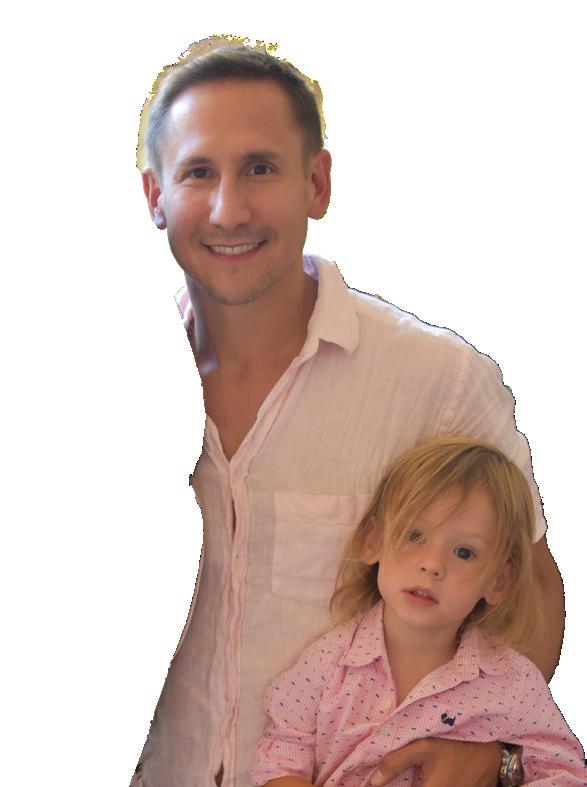
When elliot and i began our life together as husband and wife, we didn’t set out to change the world. We just wanted a baby. What neither of us could have anticipated were the abscesses on my fallopian tubes. But, as the old Yiddish saying goes, man plans and God laughs. Despite the losses and setbacks, over the next five years, we built our family in suburban New Jersey with our two adopted daughters, Robyn and Michelle.
We were happy, surrounded by the laughter of our beautiful girls. That, we thought, was that.
But then, in 1978, we learned that British gynecologist Dr. Patrick Steptoe and physiologist Robert Edwards had successfully achieved the birth of a child by bypassing the tubes through in vitro fertilization (IVF). This revolutionary breakthrough offered a new opportunity to infertile women. Fallopian tubes be damned. I could have a baby.
In 1982, Elliot and I traveled to Bourn Hall, the clinic in England founded by Dr. Steptoe and Edwards. It was filled with women from around the world. Many had been
there for months and were determined to stay until they became pregnant.
Miraculously, our first attempt at IVF was successful. I was pregnant! We returned to New Jersey with a new sense of hope. As my pregnancy progressed, I reveled in my growing belly and in the flutters of movement I felt within.
In the seventh month of my pregnancy, I experienced a dagger-like pain in my abdomen. My uterus had ruptured. After an emergency C-section and a devastating hysterectomy, our daughter Heather was born. She lived for 13 days.
How could God have given us such a beautiful miracle only to take her away? Why would God remove the chance for me to give birth to another child?
Several months later, elliot had an epiphany: “What if we created an embryo with IVF and had a surrogate carry the baby?” Honestly, it sounded crazy.
“What doctor would even attempt this?” I replied.
“It should be possible,” Elliot said. He had a renewed optimism that, with God’s help, we could create another
miracle. “We’ll find someone.”
Surrogacy was illegal in England, so Bourn Hall was out. We contacted the American College of Obstetricians and Gynecologists for a list of IVF programs. Elliot, a cardiologist, began calling doctors across the country alphabetically.
As anticipated, he met with resistance. Many physicians questioned whether this could actually be done. At this point, IVF had low success rates, and we were adding the complication of a surrogate. Some questioned the ethics of contracting what they called a “womb for rent.” Others had religious and moral objections. Medical institutions feared involvement in something potentially litigious and, to top it off, surrogacy was illegal in many states—including New Jersey.
Elliot had reached the end of the list when he called Dr. Wulf Utian, a physician originally from South Africa who had become chairman of the obstetrics and gynecology department and director of the IVF program at the Mt. Sinai Medical Center in Cleveland. “It’s unusual for a cardiologist to propose advancement in the field of obstetrics,” Dr.
Utian told Elliot amusingly. He agreed that our proposal should be doable but needed approval from the hospital’s ethics board before he could commit to work with us.
The board wanted guidance from clergy. When Dr. Utian’s calls to local Christian clergy went unanswered, he reached out to Rabbi Avraham Lapin, a former chief rabbi of South Africa, whom the doctor had assisted with medical issues before coming to the United States. Based on the biblical obligation to be fruitful and multiply, Rabbi Lapin approved. The ethics board was onboard.
Still, we weren’t home free. A close friend had agreed to be our surrogate, but she bowed out. Recalling an article in People magazine, we contacted Noel Keane, a lawyer in Michigan, who had arranged the first traditional surrogate contract in the United States. He enthusiastically arranged the “perfect” surrogate for us.
Kathy, a housewife, had been a traditional surrogate—that is to say, using her own egg with the husband’s sperm—two years before. We underwent three attempts with Kathy, which all failed, and she walked away. A second surrogate backed out after I had completed hormone treatment. We debated whether it was time to give up.
Finally, on a wing and a prayer, we decided to try one last surrogate. Shannon was a young married woman with a 3-year-old son. Having been a traditional surrogate before, she was disappointed in her relationship with the couple and wanted a redemptive experience.
On our first go-round, Dr. Utian retrieved only one egg from me.
“What are our chances?” Elliot and I asked anxiously.
“It’s a beautiful egg!” Dr. Utian replied.
It was unexpected, to say the least, when Shannon called to tell us she was pregnant.
Nine months later, on April 13, 1986, we were in the delivery room for our daughter Jillian’s birth. She was the first baby ever to be born using the egg and sperm from the biological parents in a surrogate’s womb. Elliot cut the umbilical cord, and, with Jillian’s first cry, we all congratulated each other on the miracle before us.

photo was chosen for the cover of the June 1987 issue. In the piece, we used “Shira,” her middle name, for privacy.
Jillian is now 38, married with three young children and has a successful career as a marketing executive. When I look into her eyes, I remember the heartache it took to have her. I mourn for Heather. But most of all, I see joy. I see hope.
Jillian’s birth also catalyzed another milestone. We petitioned a Michigan court for a change in the legal definition of motherhood. The court ruled that the woman providing the genetic material, not the woman giving birth, is the mother. I am recorded on Jillian’s birth certificate as “mother.” (Because surrogacy laws differ by state, birth certificate requirements are not standard across the country.)
Jillian’s arrival made headlines, and we did some limited publicity. Elliot, Shannon and Dr. Utian were on The Phil Donahue Show, appearing with a woman who opposed surrogacy. We did a segment on the PBS show NOVA, and there was an article about us in the May 4, 1987 issue of People magazine.
The following month, LIFE magazine featured two couples dealing with infertility. Our story was a sidebar, not one of the main profiles. Jillian was invited to a photoshoot along with another baby highlighted in the issue. We figured that we would get some professional photographs, if nothing else. Jillian’s
I see what can be accomplished with science, belief, love and one beautiful egg.
Sandye Rudnitzky, a Hadassah life member, works as a pediatric social worker at Morristown Medical Center in Morristown, N.J. She is also a singer and actress who performs in local music and theater productions.
Did you know that one in six people globally is affected by infertility? Access to fertility treatments is essential for many families, including those embarking on a surrogacy journey. However, since the Supreme Court overturned the constitutional right to an abortion in its June 2022 Dobbs decision, legislation and court decisions at the state level are threatening access to and potentially criminalizing these treatments. The Access to Family Building Act pending in Congress would help provide federal protection for reproductive technologies like IVF and for patients to retain the right to determine how to use embryos derived from fertility treatments. Visit Hadassah’s online National Action Center ( hadassah. org/actioncenter ) for more information about the act and ways to show support.

It was late friday night on October 6, and Noa Tishby was still wearing the T-shirt she’d had on at Shabbat dinner when the news from Israel began to trickle in. The Israeli-born activist and actor snapped into high gear from her home in Los Angeles, deploying her years of experience helping people understand Israel as she tried to describe the unprecedented attacks as they unfolded.
Live on Instagram—for hours without a break—she relayed the news she was receiving from friends in Israel. In those first hours and then days, it was all shock and horror, but Tishby was there for her social media followers, anchoring the new reality.
Six months later, when Iran unleashed an unprecedented missile and drone attack against Israel on April 13, Tishby immediately turned to social media to post a detailed report. Her video provided information not just about the assault but about Iran’s proxy network, which she called “a ring of terror.” Chiding
“brainwashed so-called activists around the world” who said the attack was justified, she called for Iran to be held accountable for its “ongoing campaign to wipe Israel off the map and destabilize the entire Middle East to create a new power dynamic in the region.” In its first 24 hours, the video amassed more than half a million views on TikTok alone.
Tishby has become a prominent face and voice of Israel and the Jewish people in a time of rupture. She had already been playing that role online and in person long before October 7. She had even served briefly as an official envoy of the Israeli government. But since the Israel-Hamas war, and the concurrent dramatic rise in antisemitism, she has been seemingly omnipresent: speaking at nonprofit fundraisers, appearing alongside Jewish leaders and on college campuses, mobilizing celebrities and influencers, being interviewed by media outlets, speaking out against antisemitism and anti-Zionism and raising awareness of the hostages.
Her feeds on Instagram (746,000 followers) and TikTok (where her clips receive tens of thousands— sometimes more than a million—views) have become spaces for Tishby to amplify October 7 survivor stories, challenge anti-Israel protesters and educate about the history of the region. After years of “yelling into the void” while advocating for Israel, Tishby said, “that actually people are listening now is reassuring.”
Born and raised in tel aviv, Tishby, 48, became a successful actor in Israel. When she moved to Los Angeles about 20 years ago, she appeared in films such as The Island and numerous television series, including Big Love, NCIS, Dig and The Affair.
But her biggest success came from finding a niche market in the television industry: choosing and selling Israeli formats, programs originating in Israel, that could be tweaked and replicated for American audiences. The first of these formats was B’Tipul, a 2005 Israeli drama series about a therapist and his clients that became HBO’s award-winning 2008 series In Treatment. This idea helped pave the way for other Israeli writers, producers and actors to make inroads in Hollywood.
“Not only is Noa knowledgeable, but she’s incredibly charismatic, and you’re just drawn to her,” said Samantha Ettus, an author and self-described “accidental activist” who founded 2024 New Voices to mobilize celebrities and influencers to speak out about
antisemitism. “When you watch her advocate, you feel like she’s advocating for the entire Jewish population. It literally feels like she is our queen.”
Because of the increasingly heated conversation around antisemitism and Israel over the last few years, Tishby is now more focused on activism than entertainment, earning speaking fees that can rise into the tens of thousands of dollars, according to her booking agencies.
One of her first attempts to reach a larger audience was her 2021 best-selling book Israel: A Simple Guide to the Most Misunderstood Country on Earth, which became an essential text for many readers not familiar with the roots of the Arab-Israeli conflict. Her recently released Uncomfortable Conversations with a Jew, co-authored with former NFL linebacker and current Fox Sports 1 analyst Emmanuel Acho, investigates the contours and sources of antisemitism through topics like Jews and whiteness, Jews and power and how to be an ally.
Originally slated for publication in 2025, the book was rushed into production after October 7 and came out in April. It includes a chapter called “Director’s Cut: October 7th,” a transcript of Acho’s October 15 video interview with Tishby for his YouTube series, and another titled “October 8th,” an exploration of how the world reacted the day after the Hamas attacks.
Most mornings, tishby wakes up by 6:00, gets coffee immediately and runs through emails. If her 8-year-old son is with her and not with her ex-partner, she helps him get ready and drives him to school. Back home around 8:30, she tries to prioritize workouts, since during the first
few months of the war, she said, “I hadn’t moved from my desk and my body was starting to be very angry.” Zoom and in-person meetings crowd her schedule; even before October 7, she traveled frequently, rarely in any one place for 10 days straight.
When her son is at home, she said, “I am 100 percent mom”—no phones or Zooms allowed. But he knows more or less what she does. Much to her delight, she said, he calls her “a speecher.”
On social media, Tishby’s fashion sense reinforces her messaging. She wears Israel-themed T-shirts and layered necklaces with Jewish symbolism: a “Bring Them Home” dog tag, an Israel-shaped pendant, a Star of David, a chai and more. To any last doubters, the message is clear: She’s proudly Jewish and Israeli.
“Noa is the voice of strength, reason and power that so many of us needed” as the war started, said actor, author and neuroscientist Mayim Bialik, who appeared with Tishby in a series of social media videos and other posts to help correct misinformation about the war, Israel and Jews. “Even when I felt despair, I knew she was one step ahead of so many conversations going on both online and in the real world. She is relentless in
the absolute best way, as a warrior for Israel and the Jewish people.”
Omri Marcus, a veteran creative strategist who has worked with Tishby many times, praised her work in their most recent collaboration for Project-7-10, an Israel-based effort aimed at keeping the hostages in the public consciousness. Tishby is among a gallery of influencers reading final text messages from people who were murdered on October 7.
“Her performance was flawless, and her video was incredibly moving,” Marcus said, noting that hers was one of the most-viewed clips in the campaign (along with those by Israeli singer Netta Barzilai and Bialik).
Tishby, a self-identified “staunch patriotic American Independent” who is “never on the side of extremism in any direction,” said she has been particularly incensed as American progressive organizations have continued to ignore the sexual violence perpetrated on October 7 and after. This, despite a March 26 New York Times interview with hostage Amit Soussana that detailed the sexual and physical abuse she suffered in captivity before her November release; despite the confession of one of the terrorists
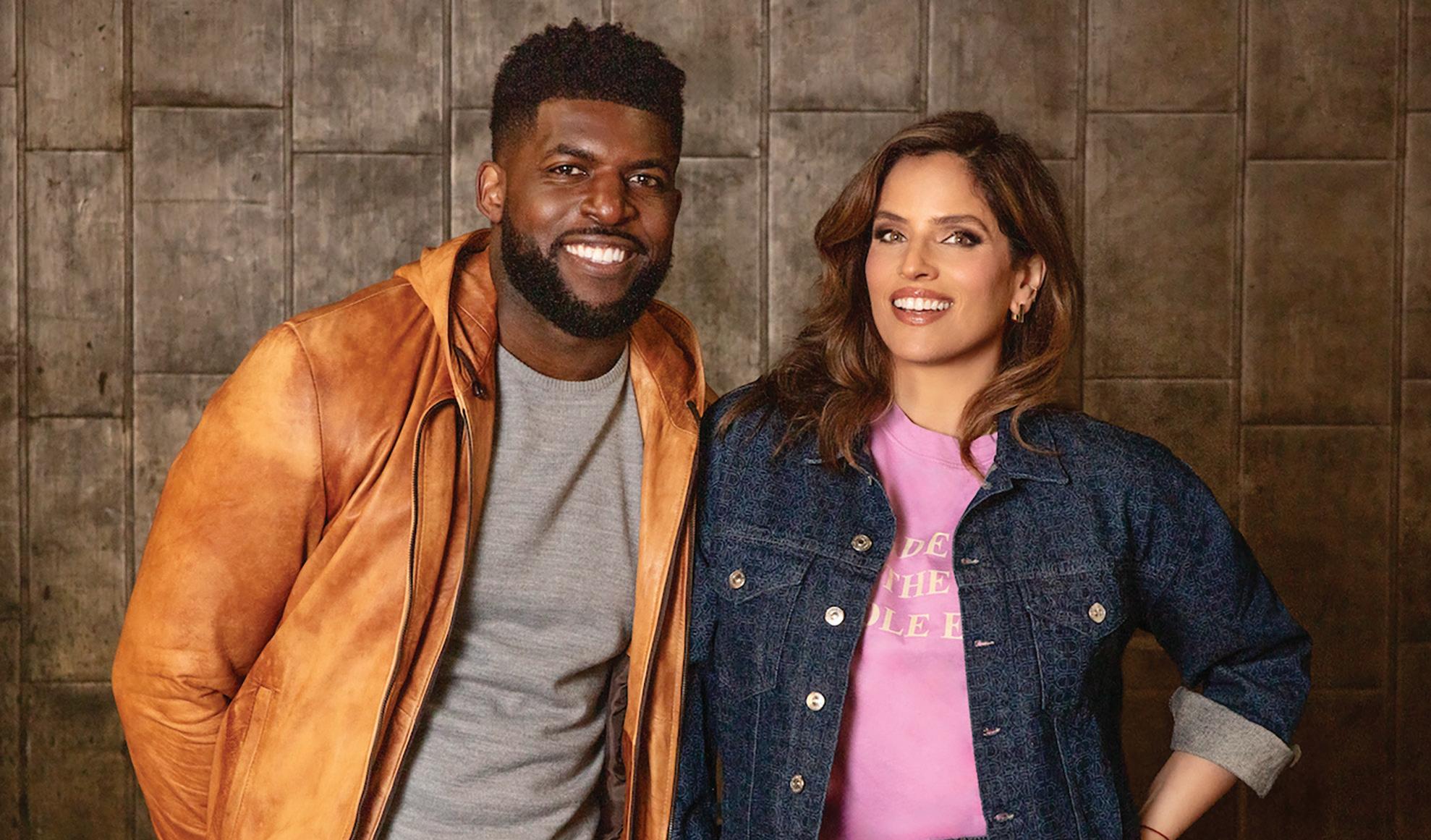 Tishby and co-author Emmanuel Acho
Tishby and co-author Emmanuel Acho
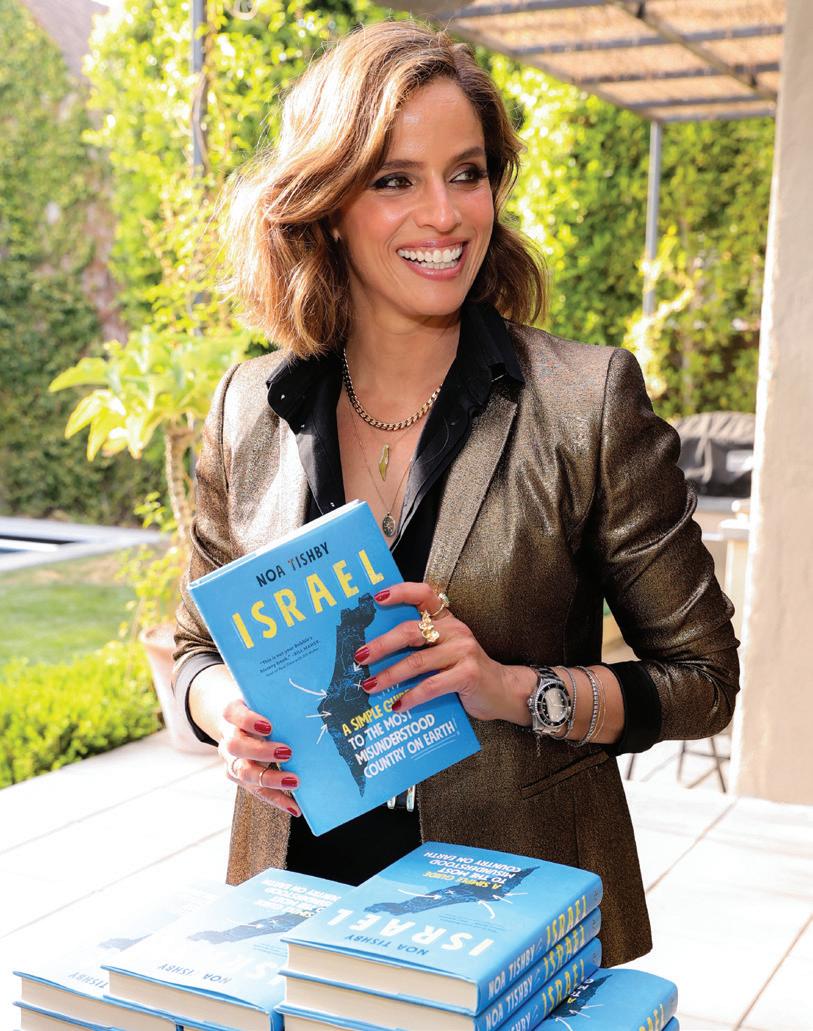
apprehended by Israeli authorities that he had raped a woman on the day of the invasion; and despite a March United Nations report indicating that rape and gang rape had likely occurred on that date.
“The world is still quiet,” Tishby said, her voice dropping with an audible quiver. “The anti-Israel sentiment has seeped into society so deeply that everybody is equivocating. And it’s just heartbreaking.”
She said she is especially dismayed by the growing rift with Israel among the younger generations and on college campuses. She defines the problem as “a psychosis of a moral higher ground that doesn’t actually allow for free speech or dissenting views.” The way to fix it, she believes, is to ban groups like Students for Justice in Palestine and efforts calling for BDS—boycott, divestment and sanctions against Israel. This, Tishby said, is “not about freedom of speech. This is about incitement for violence. These organizations are not about progressivism, or human rights or freedom or peace. They are about taking down Israel by all means necessary, like we saw on October 7.”
She comes down hard on campus protesters who are “waving the Palestinian flag now right after Israel’s been through the worst massacre
since the Holocaust and is dealing with an enemy that is explicitly calling for Jewish genocide,” she said. “If you are demonstrating [for Palestine] right now, you’re pro-Hamas, because Hamas has won the Palestinian elections [in Gaza] and since then, has been not just holding the population hostage, but also brainwashing them for 20 years to massacre Jews.”
At the same time, Tishby rejects the expectation that a person has to choose a side in this war. She has often self-identified as being simultaneously pro-Israel and pro-Palestine, separating “Palestinians” from “Hamas.” In her recent book, Uncomfortable Conversations with a Jew, she writes—as she has repeated in dozens of interviews and videos since October 7—“Absolutely Free Palestine. Free Palestine from Hamas.”
Although her current activism is independent of any one organization, Tishby served for a brief period as an official representative of the Israeli government. The shortlived coalition led by Naftali Bennett and Yair Lapid that took office in June 2021 appointed her as its inaugural special envoy for combating antisemitism and delegitimization. In that capacity, she advocated for Israel at the United Nations, in Congress and elsewhere.
She continued in the post through the arrival of Prime Minister Benjamin Netanyahu’s administration at the end of 2022. But after speaking out publicly against one of the ruling coalition’s controversial proposed laws to overhaul the judicial system, she was dismissed.
“I knew it might cost me the position and I was O.K. with that,” she said. “Having or not having that position made no difference. I just
continued doing my work.”
Part of that work is mobilizing Hollywood to engage with Israel, a two-decades long battle because, until now, Tishby asserted, “the majority of Hollywood didn’t want to touch Israel or Jewish identity.”
“The fact that we [now] have all these celebrities, Jewish and otherwise, that are standing by the Jewish community and Israel, and [who] say something to the effect of ‘Well, I don’t necessarily support all of Israel’s political factions, but I don’t want to see Israel destroyed,’ is extraordinary.”
Some of the bigger names in that celebrity community include actors Bialik, Debra Messing, Tiffany Haddish, Emmanuelle Chriqui, Tomer Capone, Brett Gelman and Michael Rapaport. There are also popular influencers creating content supporting Israel, like Montana Tucker, Lizzy Savetsky and Caroline D’Amore.
Tishby was among some 1,000 Jewish signatories to a letter condemning the acceptance speech by director Jonathan Glazer, whose film The Zone of Interest, about daily life going on next to Auschwitz during World War II, won two Academy Awards in March. In his speech, which got much applause, Glazer said: “Right now we stand here as men who refute their Jewishness and the Holocaust being hijacked by an occupation which has led to conflict for so many innocent people.”
Tishby called a counter letter in support of Glazer and also pushing for a ceasefire and the return of all hostages, signed by some 150 Jews in the entertainment industry, “extraordinarily unhelpful” at a time when “Jewish people suffered the worst massacre since the Holocaust and Jews are in danger all over the world.”
But, she added, she has seen a shift in Hollywood in recent years. “A lot
of people in the Jewish community have woken up to and gotten smart about antisemitism and anti-Zionism and anti-Israel as it is manifested today,” she said.
Tishby’s collaboration with Acho for Uncomfortable Conversations with a Jew continues her focus on fostering understanding, communication and relationship-building. In creating the book, the two would meet at one of their houses to talk about hot-button issues in sessions that lasted four to six hours, Acho told Hadassah Magazine. The book is written transcript-style, with the co-authors asking and answering each other’s questions, even if—as the book’s title promises—it got uncomfortable.
“Everything I thought of, I asked,” said Acho. “And when it got tense, we had an uncomfortable conversation. I love having uncomfortable conversations as long as there’s respect.”
A conversation about whiteness, for example, stretches over several chapters, as the co-authors wrestle with white privilege and why “Jewish” is not a racial identity.
In a chapter titled “Soul Food Shabbat,” Tishby writes that there are many who “feel that the Black community has slowly turned their backs on the Jewish community,” and that one of the reasons she wanted to write this book was “to rebuild the bridge between our communities.”
Acho replies that he “did see the anger of the Black community toward the Jewish community and the pain that existed in both groups,” and wanted to show the Jewish community that Kanye West, Kyrie Irving and others who were saying “ignorant and hurtful things” didn’t represent all Black people.
“We should be walking out of
that tunnel, arms locked, ready to do battle against our shared opponents— against hate, against marginalization, against oppression,” Acho writes.
Another chapter, “How This Book Almost Didn’t Happen,” centers on a conflict the co-authors had regarding his October 15 interview with Tishby for his Uncomfortable Conversations YouTube series. They had already started collaborating on their book when the October 7 massacre occurred. Acho then invited her to be on his series to talk about it. Acho told her he would be including a Palestinian perspective, Tishby said, but didn’t name the person.
When the trailer arrived, Tishby was “devastated,” she said, to see her comments interwoven with those from Noura Erakat, a Palestinian American activist and Rutgers University professor whom Tishby said is “a well-known anti-Israel activist.” Erakat, Tishby writes in the book, “rejected the description of the atrocities as ‘barbarism’ and appeared to defend the actions of Hamas.”
She asked Acho not to air the interview, but he did anyway, with Tishby as Part 1 and Erakat as Part 2, and Tishby walked away from the book project.
“We each stepped away and took some time to process,” she writes in the book. “But ultimately I think we recognized each other’s heart, and realized where respect and love exist, disagreement can’t triumph.”
“Ultimately, I know Noa cares about me. Noa knows that I care about her. We’ve built that relationship over the course of time,” Acho said in the interview. “A true relationship can withstand disagreement, so long as there is respect.”
When he announced the upcoming publication of their book in early April, Acho began receiving a lot of

Since October 7, Mayim Bialik has appeared with Tishby in several social media videos that call out antisemitism and advocate for Israel.
negative comments about his partnership with Tishby. Commenters criticized her as a “propagandist” and defender of the Israeli government.
He took to Instagram to read a section from the book that conveys his intentions: “I won’t necessarily agree with everything that Noa has to say, and we may not come to a uniform point of view, but that’s not the point. That’s not how real conversations work anyway. I want to learn more, to see things differently, and I want the aperture of my mind to be opened to a new perspective.”
And Tishby is similarly adamant on this point: Always have the conversation.
“Have an honest conversation that comes from an authentic place,” Tishby said. “We just have to shore up our attitude and dig our heels in the ground and be defiant in the most loving of ways, and we’ll be fine.”
Esther D. Kustanowitz is a Los Angeles-based writer, editor and consultant. She also co-hosts The Bagel Report podcast.

Every week, sari kosdon lights Shabbat candles at her home in Los Angeles. It’s a ritual that Kosdon, a pediatric psychologist, has adopted only recently. “I’ve really made it a goal,” she said. “I felt like I needed to do it to cope because I’m so anxious.”
Kosdon credits much of that anxiety to the rising tide of antisemitism—in the world, on social media and within her therapeutic profession, especially since Hamas’s October terror attack in Israel and the ensuing war in Gaza.
“As an antidote, I turned to my Jewish community,” said Kosdon, whose 2021 doctoral dissertation, The Experience of Being Jewish: Living With Antisemitism, focused on the mental health impacts of antisemitism. “I honestly feel those are the only people who I’m safe around.”
Kosdon is among the many Jewish Americans for whom the surge in antisemitism has become a very real, very personal mental health issue. They include children being harassed in school hallways with chants of “Free Palestine”; college students navigating anti-Jewish bullying on campuses; 20- and 30-somethings hyperfocused on the anti-Israel vitriol on social media; and Jewish artists
and writers now aware that including their heritage in their work can negatively impact their careers. This list also includes Jewish therapists, like Kosdon, confronting their own personal and professional concerns even as they find ways to help their patients.
For Jews of every age, according to mental health professionals and researchers, the global conflagration of anti-Jewish hate has been a triggering event, touching off the kind of unsettling thoughts that disrupt sleep and erode social and professional relationships. The relative sense of security that Jews have long felt in American society and the deep-seated reassurance of a well-protected homeland in Israel have been violently upended.
Indeed, recent reports from the Anti-Defamation League reveal that one in three Jewish Americans has had trouble sleeping after experiencing anti-Jewish harassment, and multiple studies over the years have found higher rates of depression among Jews in particular.
But how many of those mental health issues are traceable to antisemitism, which has been on the rise in recent years?
According to experts, it’s signifi-
cant, yet impossible to quantify.
“I like to use data, but we don’t have very good data on this because it hasn’t been studied properly yet,” said Zalman Abraham, director at the Wellness Institute, a New York-based youth mental health organization affiliated with the Chabad Lubavitch movement. “What we do know is mostly anecdotal.”
Launched in March 2020 to address the escalating youth mental health crisis in America that has also impacted the Jewish community, the institute says that it has trained nearly 30,000 North American teachers, clinicians and parents in coping skills. It has done so through partnerships with K-12 schools, synagogues and community organizations across the Jewish community.
Building self-esteem is a cornerstone of the institute’s approach, a bulwark against “the feedback young people are getting from the world around them, which can be super negative,” Abraham said. Confronted by widespread hate and distressing imagery from the Israel-Hamas war, he recommends thinking “only about things you can do something about— not things that are out of your control.”
Among the specific techniques Abraham has used is cognitive behavioral therapy (CBT), which he said can help combat antisemitic triggering. “You receive a text message or see something on social media,” he offered by way of example. CBT “helps you decide how to react.”
At the Brandeis School of San Francisco, a private Jewish K-8 institution, Sivan Tarle, the director of its middle school, is piloting the Wellness Institute’s new CBT-based Cultivating Resilience curriculum. She hopes to roll it out more broadly next year.

“We know that building a sense of resilience at this age is important,” Tarle said. She points out that even just addressing the issue has been helpful for 11- to 13-year-old students. “One of the best things you can do with children right now is normalize the fact that [antisemitism] is something challenging.”
BaMidbar, with locations in Colorado and Massachusetts, is another mental health organization that has a Jewish-informed curriculum and therapy program aimed at the young.
With the teenagers through 20-somethings who are BaMidbar’s target audience, “there’s also identity exploration,” said Gabriella Lupatkin, a social worker who directs the group’s Boston-based clinical services, including individual and group therapy. Negative messaging around Israel and Jews, Lupatkin explained, can undermine young Jews’ confidence as they question the political, social and group alignments they consider core to their sense of self.
Asimilar unease is prompting Jews of all ages to seek out therapists who are Jewish— even if they wouldn’t necessarily have in the past. “There’s a feeling,” Lupatkin said about a number of her patients, “that another Jew would understand the nuances of what I’m going through.”
The Jewish Therapist Collective, a 4-year-old online platform, has seen accelerating demand since October 7 for its some 4,500 member
counselors. “Folks are saying, ‘The non-Jewish therapist whom I’ve trusted for so long suddenly feels like a stranger,’ ” said founder Halina Brooke, a Phoenix-based therapist.
Brooke has heard from college students who have felt “gaslighted” when they’ve shared fears about antisemitism on campus and from parents worried their children’s eating disorders will reappear because of anxieties around antisemitism. Many of those seeking referrals for varying mental health considerations— dealing with ADHD or grief, for example—now realize they need a therapist who also “gets their Jewish side,” Brooke said.
And it’s not only patients craving Jewish solidarity. Therapists are feeling it, too. The collective was born out of a troubling incident on an internet professional forum in 2020—around the time of heightened protests in the wake of the killing of George Floyd—when a therapist queried colleagues about culturally appropriate services and support for a Jewish client.
The response to the query was negative. “One person jumped in and said, ‘It is inappropriate to center Jews right now, because we shouldn’t be centering white people,’ ” Brooke recalled.
The first therapist then expressed contrition for even making the request. Brooke and other Jews on the forum were shocked by the antisemitism and by the callousness displayed toward a therapist and
her patient. The Jewish practitioners started their own Facebook group, and it mushroomed into the collective, with mental health and wellness professionals in 15 countries, the majority in the United States.
In addition to matching clients and therapists, the collective coordinates training and retreats—including a planned December solidarity mission to Israel—and has waded into advocacy. They’ve lobbied to remove what they see as antisemitic content from a national therapy licensure exam, counseled Jewish graduate students on navigating campus tensions and even advised a Toronto Muslim community on establishing a similar therapists’ collective.
The sting of colleagues’ betrayal has eroded some Jewish counselors’ well-being, say those involved. “Jews are very aligned with social justice and supporting other marginalized communities,” Brooke observed. “But there’s been such intense vitriol and exclusion in our professional spaces, such lack of peer support, that therapists are anxious and fearful.”
Ronni Troodler, the program manager for Orthodox social services at the Jewish Family & Children’s Services of Greater Philadelphia, affirmed that impression. She also lamented that the widespread movement for diversity, equity and inclusion has often excluded Jews as a minority category. Such internecine tensions, Troodler said, “feel unprecedented in a profession built on human relationships.”
COURTESY OF HALINA BROOKE Halina Brooke, founder of the Jewish Therapist Collective, leads an educational session for fellow mental health professionals.Since October 7, Troodler said, she has witnessed signs of heightened mental health distress among her Orthodox Jewish clients, many of whom are aware that they can be targeted because of their outwardly Jewish appearance, including hair coverings and clothing choices. The signs include increased hyperarousal, disordered eating and sleeping and loss of executive function.
Those clients, however, have one advantage, Troodler said. Their close-knit communal bonds provide support and refuge.
That was Kosdon’s own finding while pursuing her Ph.D. at the Wright Institute graduate school of psychology in Berkeley, Calif. “Research shows that the more you involve

yourself in a Jewish community, the less likely you are to experience these negative impacts of anxiety and depression,” said the Los Angeles psychologist whose dissertation was on the mental health impacts of antisemitism. “It’s a protective factor.”
Her very thesis was controversial in progressive Berkeley, where complaints recently filed with the United States Department of Education against local public schools allege that the schools failed to stop teachers and students engaging in “severe and persistent” harassment and discrimination against Jewish children. The concerns about antisemitism, and implicit Jewish victimization, at the core of Kosdon’s thesis ran counter to prevailing notions on her campus that as white people, Jews were too powerful to be victims. When she tried to talk about the dissertation with peers, “I was told, ‘Be careful about what you say. Try not to offend people,’ ” she recalled.
Her research—and subsequent experiences as a practitioner—has revealed the toll of that dynamic. “People hide their identities,” Kosdon said. “They figure out whether or not a person is safe or not to tell that they’re Jewish. All that is associated with anxiety and depression.”
After october 7, ashley, a patient of Brooke’s, the founder of the Jewish Therapist Collective, was spending significant time defending Israel on the social media platform Reddit—and feeling her mental health deteriorate from the vitriol she encountered there.
Like many Jews in the United States, the 33-year-old Chicago native, who did not want to reveal her last name, has significant ties to Israel. She made aliyah at 16 but returned a year ago, moving to

Phoenix to be with her family. Even though she was living in America, Ashley did not delete her Israeli emergency-alert app from her phone.
Listening to those alerts on October 7, “I couldn’t eat. I couldn’t get food down. I couldn’t sleep,” she recalled. The anxiety, depression and eating disorders she’d battled for years flared up, and from October through January, Ashley was in a deep depression, using pot and smoking cigarettes while watching news from Israel.
She praised her therapists, including Brooke, for getting her past that low by upping her antidepressant dose and urging her to impose a 30minute daily limit on social media.
Affirming Kosdon’s findings, Ashley said she has been most helped by connecting with her local Jewish community. Indeed, while her secular family never understood her connection to Israel, which Ashley said came from her summers at Jewish camp, after October 7, she found solace volunteering at the local Jewish community center.
“I needed to be around other Jews,” she said, “people who understood and were going through the same emotions.”

The Jews of Summer Summer Camp and Jewish Culture in Postwar America
Sandra Fox
Stanford Studie S in Jewi S h h i S t ory and Culture
The surprising history of a summer ritual
Coca-Cola, Black Panthers, and Phantom Jets
Israel in the American Orbit, 1967-1973
Oz Frankel
A transnational history charting the influence of US culture in Israel, from everyday life to the halls of power

The Guide to the Perplexed A New Translation
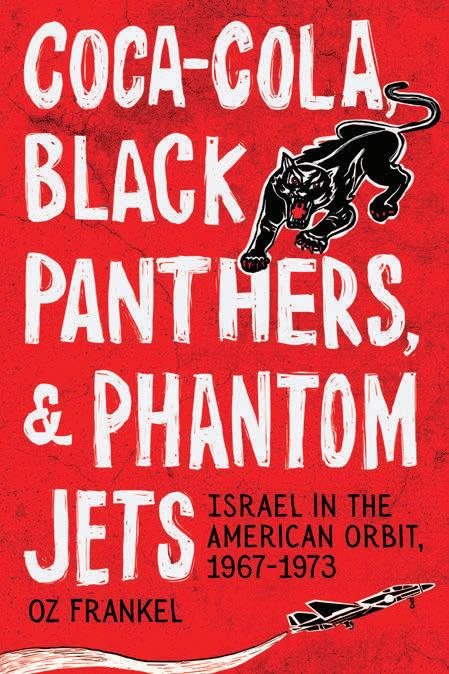
Moses Maimonides, Translated and with Commentary by Lenn E. Goodman and Phillip I. Lieberman
A landmark new translation of the most significant text in medieval Jewish thought
Daughter of History
Traces of an Immigrant Girlhood
Susan Rubin Suleiman
Stanford Studie S in Jewi S h h i S t ory and Culture
A compelling journey of resilience that reconciles intimate memories with the violent history of the twentieth century


A22-year-old escaped unhurt from the Nova music festival but, crushed by survivor’s guilt, months later he still has difficulty leaving his bed. A 13-year-old who fearfully kept his siblings silent in their safe room through 11 long hours while terrorists surrounded his home is in therapy at a post-trauma clinic. At a hotel near Jerusalem, a family forced to evacuate from one of the southern kibbutzim struggles to help their child whose severe ADHD is impacted by the overcrowded living conditions.
These people are among those being helped by the Hadassah Med-
As Hadassah’s End the Silence campaign to speak out against the weaponization of sexual violence by Hamas gains traction (see story on page 32), Hadassah On Call: New Frontiers in Medicine tackles the issue. In a recent episode, Dr. Dvora Bauman, director of the Bat Ami Center for Victims of Sexual Abuse at the Hadassah Medical Organization, delves into the implications of sexual violence during and after the October assault on Israel, and the challenges ahead. For this and other episodes, go to hadassah.org/ hadassahoncall or wherever you listen to podcasts.
ical Organization and its psychiatry and trauma departments in an agonizing snapshot of the mental health fallout in the months following Hamas’s deadly attack on Israel.
“Even those indirectly impacted by the horrors that began on October 7 feel exposed, unprotected, violated,” said Dr. Esti Galili-Weisstub, senior psychiatrist and immediate past director of the Herman Dana Department of Child and Adolescent Psychiatry at Hadassah Hospital Ein Kerem. “And if they haven’t lost anyone dear, they know people who have.”
The Israeli Pediatric Association reports that 84 percent of Israeli children are experiencing emotional stress, and studies by the Hebrew University of Jerusalem, Columbia University and Israel’s Shalvata Mental Health Center warn that up to a half million Israelis could develop post-traumatic stress disorder— although Dr. Galili-Weisstub cautions that these statistics can be misleading or underestimated.
HMO’s mental health staff are seeing significant increases in symptoms of acute stress disorder, which are stress reactions that continue for about a month. (PTSD is defined by acute symptoms still present after a year.) Self-medication with sleeping pills and antidepressants has leapt, along with increased cannabis use.
“We’re at the beginning of a collective national trauma whose ramifications will be with us for a generation,” said psychiatrist Dr. Amit Lotan, director of Hadassah’s Department of Adult Psychiatry at Hadassah Ein Kerem.
Trauma is a normal reaction to a devastating physical or psychological event, explained Dr. Lotan, “but when fear or agitation persist, when there’s chronic fatigue, sleep disorders, nightmares, anxiety, flashbacks and depression, it can become problematic, damaging formation of stable relationships, study and enjoyment of life.”
With the Israel Defense Force’s well-established mental health system responsible for soldiers, HMO has been caring for other groups directly impacted by the attacks, prominent among them Nova music festival attendees and evacuees from Gaza envelope communities.
The young man who escaped the Nova festival remains overwhelmed by guilt, despite the survival of his girlfriend and their friends. He remains at home, unable to care for himself. With the help of a visiting team from HMO, he is making progress. Weeks of cognitive behavioral therapy, support and reassurance from the Hadassah team have allowed him to take a first step: getting out of bed once daily to walk his dog.
HMO psychologists and therapists also visit evacuees who are still living in hotels near Jerusalem for group and individual interventions. One family has been struggling with their 10-year-old son whose severe ADHD was challenging even prior to the carnage. Housed together in a single hotel room, with no organized support system and the boy’s medication no longer effective, they were in great distress. HMO’s team has adjusted
the ADHD medication and provided therapy to help the family stabilize in their new reality.
Challenging in a different way is the 13-year-old boy, also from the South, who spent 11 hours in a safe room calming his 5- and 8-year-old siblings, while his mother held the baby and his father guarded the door with a kitchen knife. The boy is attending an HMO post-trauma clinic where “his treatment isn’t yet a success story, but he’s on his therapeutic journey,” said psychiatrist Dr. Amit Shalev, who succeeded Dr. Galili-Weisstub as head of Child and Adolescent Psychiatry one week before the Hamas attack.
“The human mind and spirit are very strong,” Dr. Shalev said, “and the emotional tools and resources that keep us emotionally healthy are inbuilt. But following October 7, many people—because of the intensity of their trauma, the magnitude of their injury or loss or psychological predisposition—need specialized help to move on.”
Development of PTSD remains a major threat. Unresponsive to conventional therapy, those with PTSD strain for productive lives and functional relationships, and are at higher risk of heart disease, stroke and dementia. Psychiatrist Dr. Ronen Segman, who heads HMO’s Ambulatory Psychiatry Services, is hopeful that research underway at Hadassah Hospital Mount Scopus’s Molecular Psychiatry Lab will enable both prediction of the syndrome and effective treatment. The project is testing survivors of the October 7 attacks for irregular hormone and immune biomarkers as possible red flags for developing PTSD.
“In an earlier study, we showed that child survivors of suicide bombings in Jerusalem over a decade ago
who later developed chronic PTSD have distinct gene expression abnormalities in their immune inflammatory system,” explained Dr. Segman. “These abnormalities

Vibrant illustrations from the Bezalel art school celebrating the Israeli communities in the Gaza envelope attacked on October 7 are now on display for patients and visitors at Hadassah Hospital Ein Kerem’s Charlotte R. Bloomberg Mother and Child Center. For the full story, go to hadassah.org .
may point to new ways of targeting stress-related inflammation. We’re also embarking on a pioneering proof-of-concept study for treating chronic intractable PTSD with a psychedelic drug—psilocybin.”
The war with hamas presents extraordinary challenges for HMO’s psychiatrists, psychologists, psychiatric nurses, therapists and social workers.
“Our job is helping patients contain their pain and anger,” Dr. Galili-Weisstub said. “But this is different. We’re part of their same experience. We have to ensure we react as professionals.”
The initial massive military call-up left the department critically shortstaffed. In the past few months, significant time and money have been invested in extending training and supervision of mental health professionals, both at HMO and countrywide, to ensure there is additional expertise at hand.
A different challenge has been that 15 percent of HMO’s mental health staff—psychologists, social workers and psychiatrists—are Israeli Arabs. Initially, some Jewish patients refused to be treated by them, and tensions emerged between longtime Jewish and Arab colleagues.
“The therapeutic bond is a trust relationship, and trust can’t be built if patients are afraid of or hostile toward their therapist,” Dr. Shalev
said. “We’ve worked hard to support Arab staff who’ve experienced antagonism from patients, and to reinforce relationships between Jewish and Arab co-workers. Particularly successful are our dialogue groups, where two senior therapists meet with Arab staff to discuss fallout from the Israel-Hamas conflict, validate feelings and consider opposing perspectives.”
Dr. Shalev notes that healing, or at least helping, keeps him emotionally buoyed through the long hours and taxing work. Neither he nor most Israelis, however, is likely to emerge unscathed from the horror of October 7.
“It took Israel a full generation to recover from the trauma of the Yom Kippur War, and what we’re experiencing now is far worse,” Dr. Galili-Weisstub said. “Exposure to trauma transmits down the generations at a biological level in changes in gene expression. This new barbarism joins millennia of expulsions, pogroms and butchery embedded in the Jewish psyche.
“Along with this, however, there’s collective hope,” she added. “The Jewish experience has shown the possibility of post-traumatic growth, of changing the reality for the better, both for ourselves and for future generations.”
DAVID HARRIS Wendy Elliman is a British-born science writer who has lived in Israel for more than four decades.For a second year, Hadassah is honoring 18 women who have made Zionism an integral part of their personal and professional lives. The 2024 cohort (hadassah.org/18women) represents the diversity and vibrancy of Israel’s supporters. They are Jewish and Christian, Ashkenazi and Sephardi, journalists, writers, entertainers, public policy experts and campus activists.
These leaders “exemplify what it means to be strong Zionist women in 2024,” said Hadassah Zionist educator Diana Diner, whose own advocacy has earned her a spot on this year’s list, along with Luisa Narins, co-coordinator of Hadassah’s engagement division. “It’s more important than ever today to show Zionism’s diversity and resilience, celebrate Jewish identity and honor the values we hold dear as well as lift up the voices of Zionist women,” four of whom are profiled here.
Destiny Albritton did not meet many Jewish people in her hometown of Columbus, Mo., but she did learn about ancient Israelites from her mother’s bedtime Bible stories. Her favorite? The tale of Esther, a Jewish woman who saved her people.
“That story stayed with me,” the 31-yearold said. “I realized when I got to college and began learning about the Middle East and modern Israel that Esther’s people lived on and still need help.”
At the University of Missouri-Columbia, where she majored in international studies, Albritton became president of a chapter of Christians United for Israel (CUFI). It was in college, Albritton said, that she “realized that I had always been a Zionist but did not know it because I had not been acquainted with modern Israel.”
After spending a year in Israel, where she received a master’s degree in politi cal science from Tel Aviv University, Albritton made it her goal to introduce new generations
of college students to Israel. She has brought many groups of Christian and Jewish students to Israel through her work at the Israel on Campus Coalition and CUFI, and now serves as the senior director of Next Gen at CUFI.
After the October 7 terror attacks, Albritton has redoubled her efforts to advocate for Israel. “My entire mission at CUFI is to ensure that the next generation of Christian leaders support Israel,” she said.
In her social media bios, Eve Barlow describes herself as “Journalist, Zionist, Feminist, Scottish.”
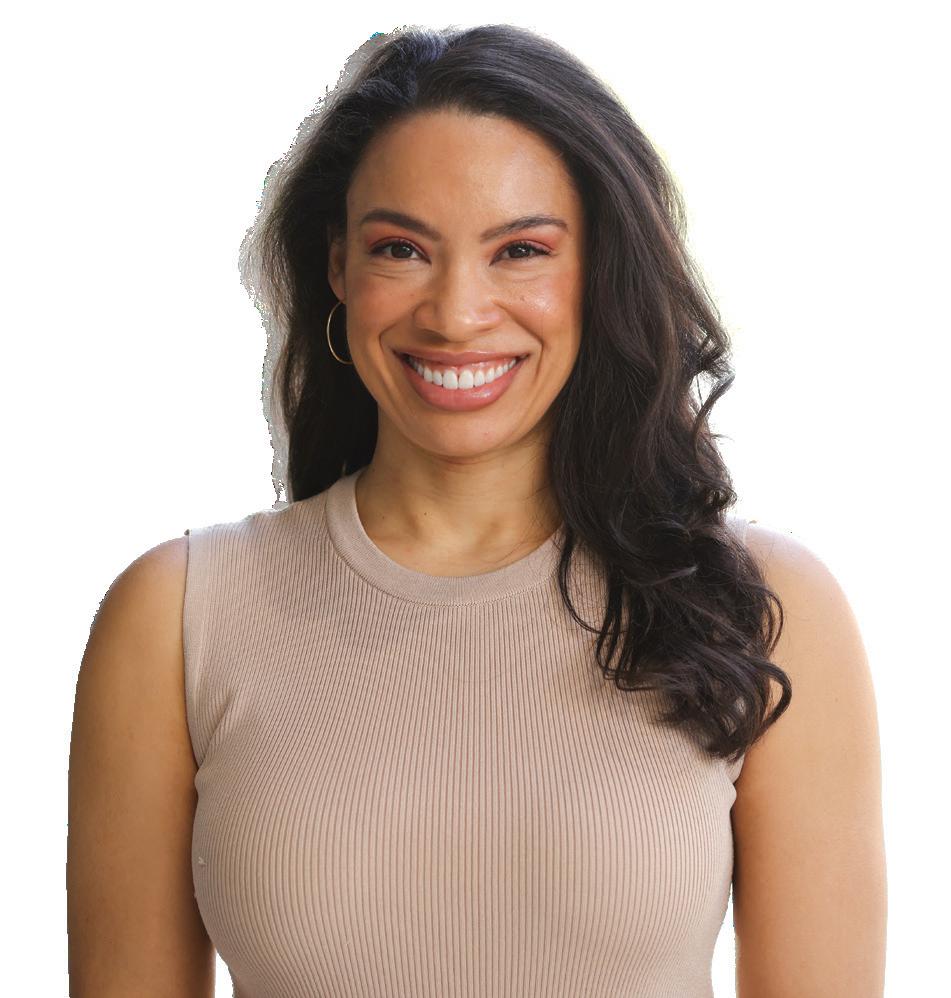
The 37-year-old grew up in Glasgow, where her identity was shaped by keep ing kosher at home and attending shul, but
magazine and listening to her father’s records.
After graduating from University College London with a law degree in 2008, Barlow decided to instead pursue her true passion, music journalism, and began writing for major publications.
In 2014, Barlow moved to Los Angeles to write about the American music scene. In May 2020, during the Black Lives Matter riots that erupted after George Floyd’s murder, Barlow took to Twitter to condemn the vandalism of synagogues in Los Angeles. Her defense of Jewish property and the community, she said, was met with scorn by many in the entertainment industry, and she lost work overnight.
“We were living in a moment of grand radicalization, and we were suppressed by groupthink,” Barlow said. “I am the type of person who does not do well with the feeling that I am being silenced.”
From that experience, Barlow has emerged as a strong advocate for Israel and is willing to call out antisemitism on social media and podcasts. She also contributes to media watchdog groups like Honest Reporting and her own blog, Blacklisted.
“I feel like I do change hearts and minds all the time,” Barlow said. “I have become emblematic of the Jew that fights back. There’s a heavy burden and a heavy responsibility to that. But I continue to do it because I think that people are listening.”


Adela Cojab grew up in Deal, N.J., in a tight-knit community her parents called “Little Jewish Syria.” She attended day school, where she sang “Hatikvah” every day. But she wasn’t born in Deal. The 27-year-old was born in Mexico, where her parents had met. Her father hails from Syria and her mother from Lebanon. When she was 5 years old, her family no longer felt safe in Mexico and immigrated to the United States.
“I grew up in a Jewish community where everyone


is Zionist,” Cojab said about Deal. As a freshman at New York University, she joined the student group Realize Israel and eventually became its president.
Cojab’s tenure coincided with the rise of anti-Zionism on campus in 2018. During a Yom Ha’atzmaut celebration in Washington Square Park coordinated by Realize Israel, a number of anti-Zionist students burned an Israeli flag and tore others to shreds.
Cojab said that she had repeatedly approached the NYU administration to take action because she did not feel safe on campus. In 2019, after her appeals went unheard, she filed a complaint against NYU with the United States Department of Education’s Office of Civil Rights for failing to protect Jewish students. The suit led to a settlement that acknowledged antisemitism as a form of discrimination under Title VI of the Civil Rights Act.
Today, Cojab attends Cardozo School of Law and works with Jewish students facing harassment on campus. “Every Jewish student will have to decide: Do I stand up or do I keep my head down and graduate? I tell them that you must stand up,” she said. “I’m a living example of that.”
Growing up in Livermore, Calif., Ashira Solomon would listen to her grandmother’s

“As soon as I landed, I was like, wow, I am home,” the 32-year-old said.
After she completed the program at the University of Haifa, Solomon kept returning to Israel for a fellowship and graduate studies—until 2022, when she decided to make her home in Jerusalem. She also chose to undergo an Orthodox Jewish conversion.
Solomon is now a talk show host on the Jewish News Syndicate’s The Quad, where she discusses current events with Fleur HassanNahoum, deputy mayor of Jerusalem; activist and journalist Emily Schrader; and Canada’s former ambassador to Israel, Vivian Bercovici.
Solomon uses her unique platform and personal history to advocate for Israel. “What’s effective about me is, yes, I’m Black, I’m Jewish, I’m a woman and I’m an American,” she said. “When I put my face and voice to something, people listen.”
She recently helped launch a Black leaders roundtable in collaboration with Israel’s ambassador to the United Nations, Gilad Erdan. She also helped coordinate a delegation of Black Jewish Israelis to travel to New York to meet with African American politicians of Muslim and Christian backgrounds. Eventually, Solomon said, she wants to create similar dialogues at historically Black colleges and universities.
“We want to bring back the human connection piece,” she said.
Alexandra Lapkin Schwank is a freelance writer for several Jewish publications. She lives with her family in
Shai Albrecht | Virtual fitness trainer and Israel advocate
Destiny A lbritton | Senior director of Next Gen, Christians United for Israel
Eve Ba rlow | Music journalist and social media advocate for Israel
Emily Briskman | Associate vice president of campus affairs, JUF of Metropolitan Chicago, and executive director, the Hillels of Illinois
Valeria C hazin | Co-founder and board chair, Students Supporting Israel
A dela C ojab | Cardozo law student and Israel activist
Diana Diner | Zionist educator, Hadassah, The Women’s Zionist Organization of America
Virag Gulyas |Hungarian-born Zionist, author and speaker
Jennifer Handel | Director of Israel Engagement, the Jewish Federation of Greater Atlanta
Toby Klein | Program director, A Wider Bridge
Aviva Klompas | Writer, strategist and co-founder, Boundless Israel
Debra Messing | Emmy-award winning actress and Israel activist
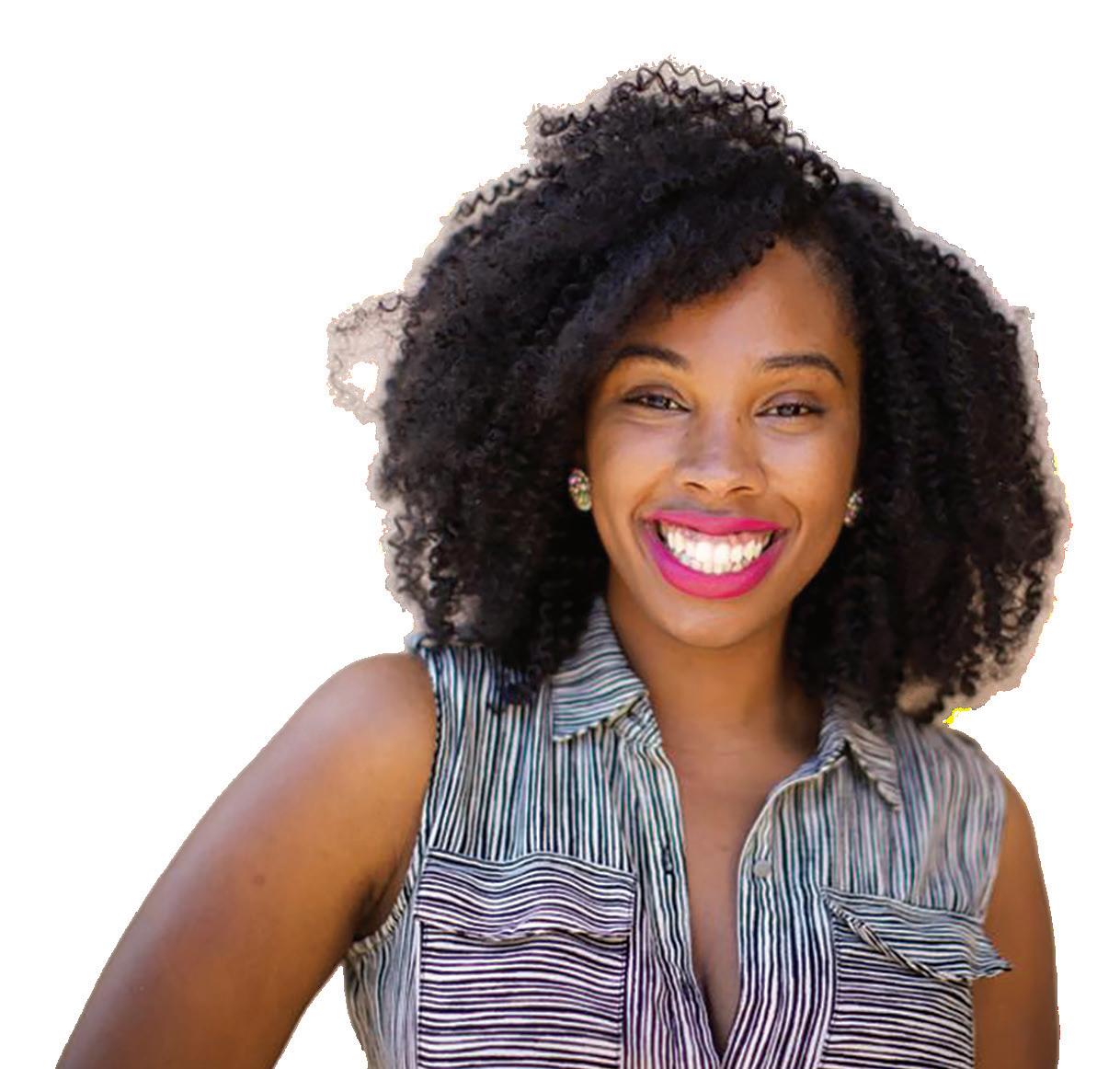
Luisa Narins | Actor, fitness instructor and co-coordinator, HWZOA engagement division
Tova Ricardo | Poet, writer and Black Jewish advocate
Michelle Rojas-Tal | Director of strategic partnerships, Sixpoint Media
Ashira Solomon | JNS television host and political commentator
Samantha von Ende | Co-founder and executive director, AMICUS Institute for Governance
Gila Zarbiv | Hadassah Medical Organization nurse-midwife
Adela Cojab Ashira Solomon
When israeli women paid a distinct and devastating price during Hamas’s October 7 terror attack and in the resulting war in Gaza, Israeli feminist organizations leapt into action— some with the financial backing of the Hadassah Foundation.
“Our hotline volume doubled with women asking for help,” said Tal Hochman, CEO of the 40-yearold Israel Women’s Network, whose current foundation grant began last year. On top of the trauma of mass rape, kidnapping and murder, “their husbands were called up from the reserves, and childcare and schools closed. But women were still expected to go to work.”
Lobbying and legal advocacy are at the heart of the network’s mission of promoting gender equality. Within days of the attacks, Hochman’s team had drafted a position paper— co-signed by some 40 Israeli women’s rights organizations—urging Prime Minister Benjamin Netanyahu and his coalition government to promote policies to meet women’s wartime needs and demanding greater female representation in government.
Such advocacy exemplifies the mission of the Hadassah Foundation to advance gender equity in both the United States and Israel. The foundation was established in
1998 with a $10 million endowment from Hadassah, The Women’s Zionist Organization of America, to extend Hadassah’s reach through novel partnerships and support for impactful programs.
That mission has taken on new urgency since October 7. Within days, the foundation, which operates as an independent nonprofit with its own board of directors, made a $36,000 emergency grant to the Hadassah Medical Organization for “the extraordinary work they were doing in leading trauma care,” said Stephanie Blumenkranz, the foundation’s director since 2019. An additional $30,000 in emergency grants went to organizations addressing Israelis’ immediate needs, including $10,000 for Jewish Federations of North America.
After the attack, the foundation’s chair, Audrey Weiner, announced a partnership with Elluminate, a Jewish women’s philanthropic initiative. The two groups created a portfolio of 10 American Jewish women’s funds “to address the critical issue of advocacy around ‘the day after’ the war, and the need to have women at all the decision-making tables in Israel,” Weiner said in an email from Israel, where she and Blumenkranz were leading the foundation’s March solidarity mission.

With funding coming from its 18-person board, 74 alumni board members and other donors, the foundation’s annual awards have grown substantially since Blumenkranz became director—from $500,000 a few years ago to $650,000 last year and a projected $750,000 next year. In its first 25 years of operation, the foundation has supported 105 organizations: 64 in Israel and 41 in the United States.
Grantees have run the gamut from grassroots outfits to august institutions, and they cater to myriad constituencies— from Arab teachers and progressive rabbis in Israel to LGBTQ+ Jews, Israeli Bedouins and domestic violence victims.
In Israel, grantees have included Isha L’Isha-Haifa Feminist Center, Israel’s oldest grassroots feminist organization; Olim Beyahad: Rising Up Together, which integrates Ethiopian Israeli college graduates into the workforce; the Rackman Center, a feminist legal and policy institute at Bar-Ilan University; and QueenB, a group dedicated to increasing female representation in high tech.
American grantees have been similarly diverse, including teen initiatives like jGirls+ magazine, college-based organizations such as UCLA Hillel and Yeshivat Maharat, the first Orthodox seminary to ordain women.

Roni Schwartz, HWZOA’s liaison to the foundation, observed that women’s rights have been increasingly imperiled over the past several years, giving new urgency to the foundation’s mission. She cited rising antisemitism and rollbacks of reproductive rights in America and, in Israel, a government that increasingly cedes power over women’s lives to all-male religious courts.
“Over the past 25 years,” Schwartz said, “we’ve helped build and nourish a powerful network of Israeli and Jewish feminist organizations. Our responsibility now is to help them succeed by ensuring they get the resources they need to take on today’s enormous challenges.”
About five years ago, according to Blumenkranz, the foundation consciously altered its focus from bolstering women—through initia-
tives like leadership training—to changing the culture itself so that it is more equitable.
“There’s nothing in women that’s missing,” Blumenkranz explained of the paradigm shift. “Rather, there are things put together incorrectly in society. Bringing people together to analyze how it got that way, and what we can do to address it, has been a changing factor in the work we do.”
Blumenkranz said the foundation has been gratified to see how organizations it nurtures have risen to meet post-October 7 challenges.
For example, Moving Traditions, a longtime American grantee, used its expertise around the teen mental health crisis to address youth anxiety over rising antisemitism and the war in Israel. Moving Traditions CEO Shuli Karkowsky quickly updated the feminist-infused wellness curricula used in 200 synagogues, camps and day schools nationally with prompts “to address classroom dynamics and a basic framework for understanding the war,” she said, “and to give teens tools to untangle their complex feelings about this conflict.”
In Israel, Forum Dvorah, an organ-

ization that champions women’s participation in national security affairs, has lobbied to involve more women in decision-making around the war in Gaza and the hostage negotiations, and to open up more combat positions in the Israel Defense Forces to women.
“We’re funding them because we know they can be so much more,” Blumenkranz said. She extended that sentiment to all the foundation’s grantee that are, she said, “creating a world that’s more equitable and raising women up.”
Hilary
With misinformation and anti-Zionist sentiment spreading on social media, it is crucial to share the accurate history of Jews’ connection to the Holy Land. Test your knowledge in determining if these statements are true or false.
1. The term “Palestine” is derived from the Philistines, an Aegean people who settled along the coastal plains of the Land of Israel and the Gaza area in the 12th century BCE.
2. All Jews were forced into the Diaspora after the Roman destruction of the Second Temple in Jerusalem in 70 C.E.
3. The violent 12th century Crusades convinced many Jews in Europe not to move to the Holy Land since their chances of survival there were considered remote.
4. Prior to the 1947 United Nations Partition Plan for Palestine, most Arabs living in the region did not consider themselves to have a separate Palestinian identity.
See answers on page 32

Since october 7, hadassah has spoken out about Hamas’s weaponization of sexual violence, launching its largest-ever global campaign, End The Silence (hadassah.org/endthesilence), to demand action, accountability and justice. More than 130,000 people from 118 countries—plus 116 organizations—have signed Hadassah’s letter to United Nations Secretary-General António Guterres demanding an unbiased investigation.

1. True: Ancient language scholars believe that the Romans Latinized Philistine to Palaestina.
2. False: The Jewish people have maintained continuous ties to their homeland for more than 3,700 years. Though the destruction of the Temple was the start
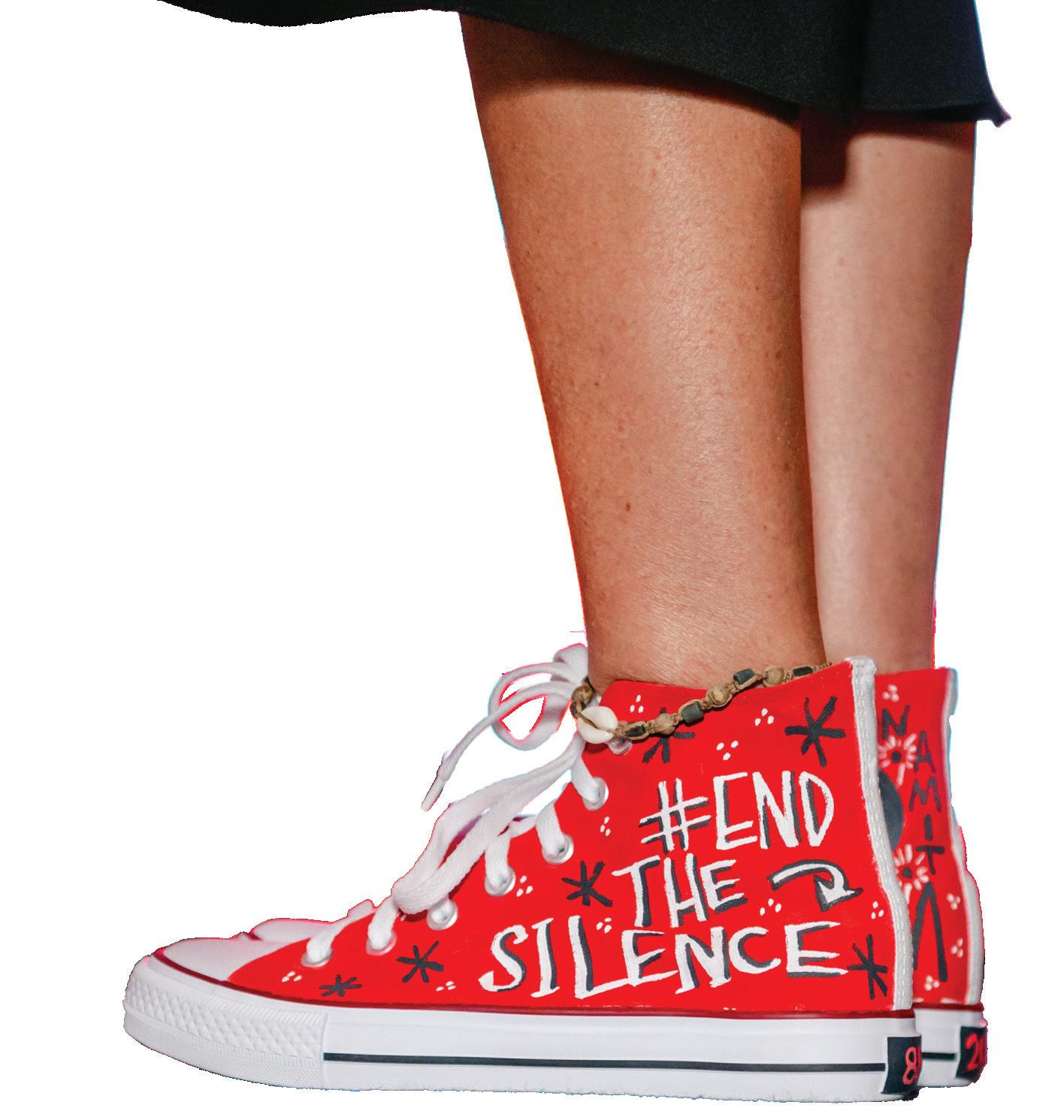
On International Women’s Day on March 8, Hadassah supporters organized 190 events in 17 countries and online to #EndTheSilence, including at rallies in Paris (above) and in Santiago, Chile (top, right). By mid-March, the campaign had garnered 400,000 social media engagements.

of the Diaspora, archaeological evidence proves that communities remained in the Holy Land after 70 C.E.
3. False: During the Crusades, Jews were massacred in Europe and in the Land of Israel. But the communities rebounded and, over the next two centuries, many rabbis and Jewish pilgrims immi -
grated to Jerusalem and the Galilee region. By the early 19th century, over 10,000 Jews lived throughout what is today Israel.
4. True: The Palestinian identity as understood today largely emerged in 1948, after the establishment of the State of Israel.
At the 1919 First Congress of Muslim-Christian Associations in
Jerusalem, for example, a resolution was adopted that stated, “We consider Palestine as part of Arab Syria, as it has never been separated from it at any time. We are connected with it by national, religious, linguistic, natural, economic and geographical bonds.”
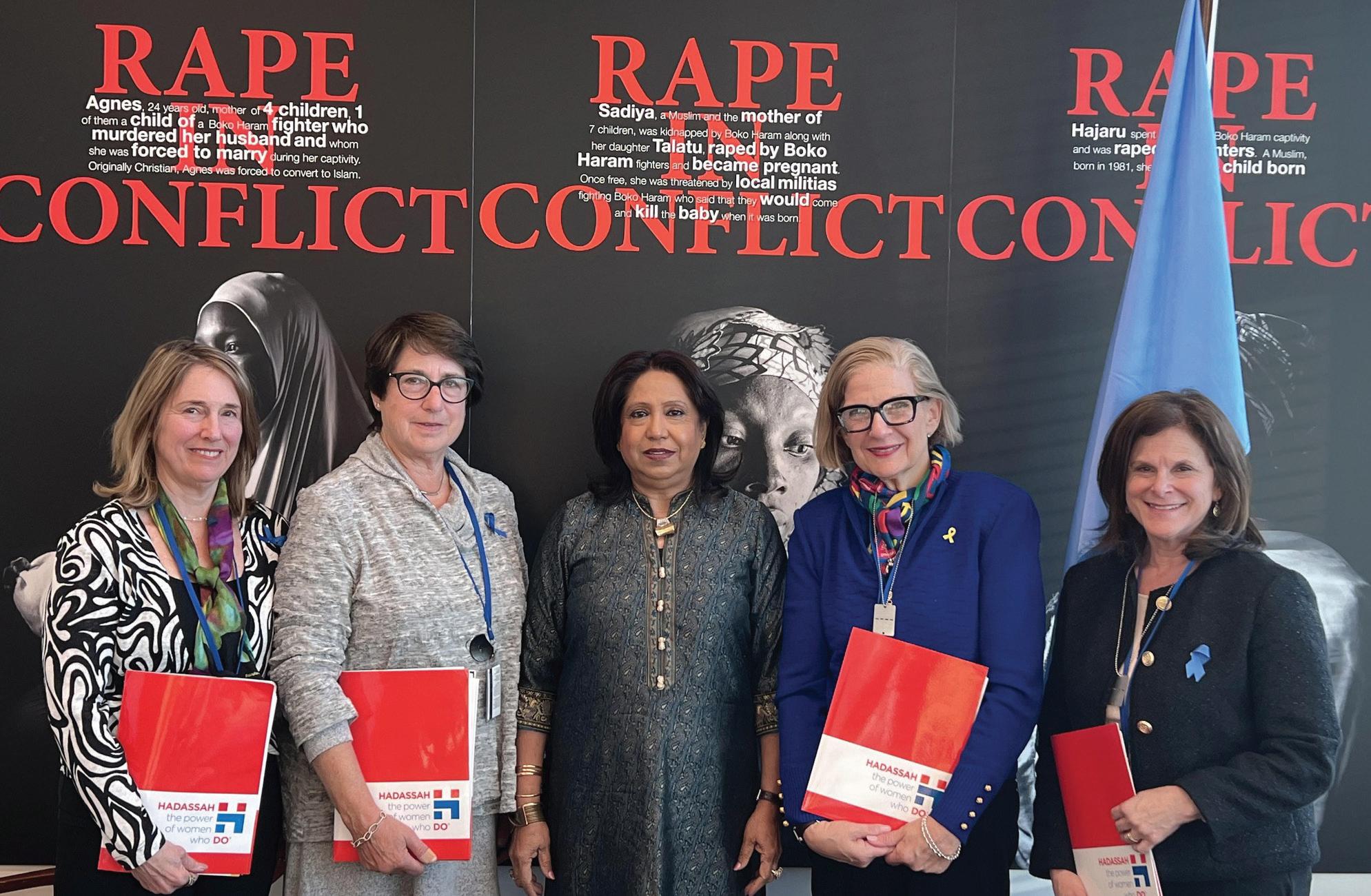

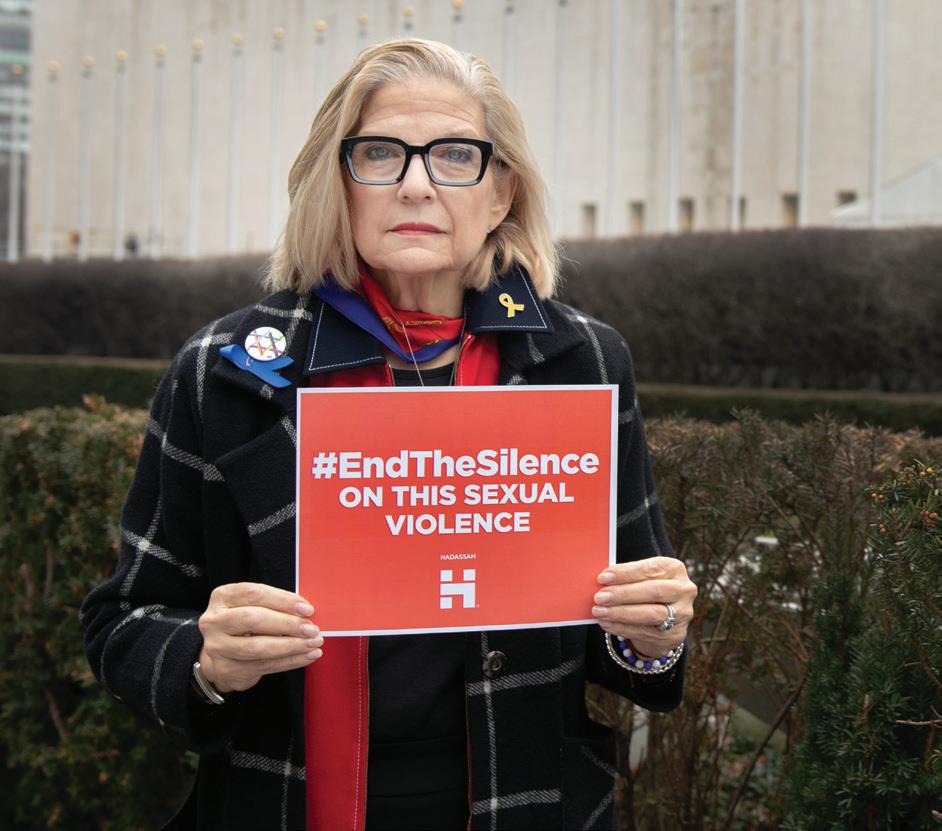

Transamerica Life Insurance Company offers term life insurance policies, which guarantee that the premiums you pay will remain level for 10, 15, 20, or 30 years. (5326) **No quotes are final until underwriting is completed.
Equivalent premiums are available for other underwriting classes, ages, face amounts and payment modes
Trendsetter® Super 10, Trendsetter® Super 15, Trendsetter® Super 20, and Trendsetter® Super 30 are term life insurance policies issued by Transamerica Life Insurance Company, Cedar Rapids, IA 52499 Premiums increase annually starting in year 11 for Trendsetter Super 10, in year 16 for Trendsetter Super 15, in year 21 for Trendsetter Super 20, and in year
are limited only to the return of premiums paid Suicide is no defense to payment of life insurance benefits, nor is suicide while insane a defense to payment of accidental death benefits, if any, under this policy where the policy is issued to a Missouri citizen, unless the insurer can show that the insured intended suicide when s/he applied for the policy, regardless of any language to the contrary in the policy.
Transamerica Life Insurance Company is rated A (Excellent) by A.M. Best for financial strength as of September 12, 2019. A is the third highest of 16 ratings awarded by A M Best, a leading independent rating service that evaluates insurance companies’ financial strength and ability to meet obligations to policyholders Call The Leibowitz Group at 888-448-LEBO for a no obligation quote.**
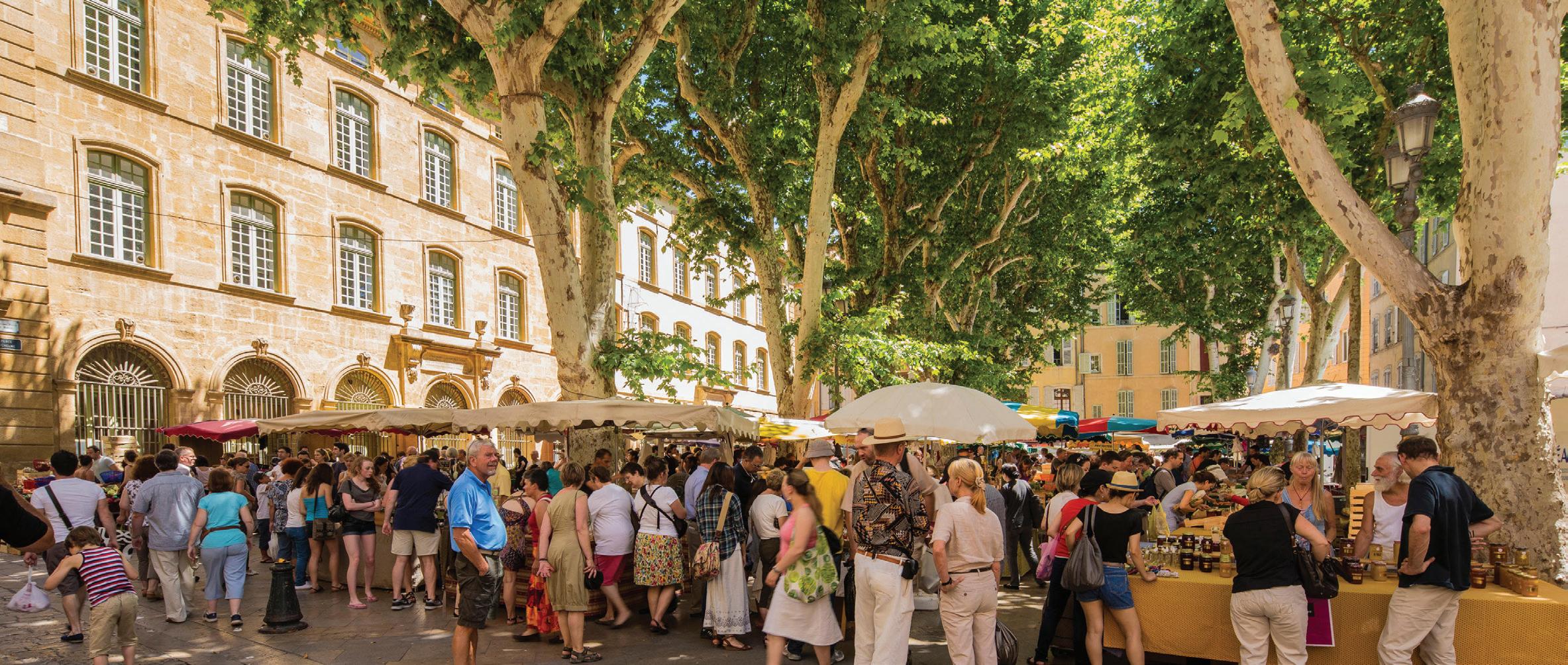
Provence is famous for its summer heat. But more than once, I’ve arrived in season to a cool wind blowing through the olive trees—the mysterious tramontane breeze from the North—or been nearly knocked over by the notorious Provençal mistral, a cold, often violent Mediterranean air current.
This mountainous corner of southern France is renowned not only for its moody gusts, but also for fields of olive trees, lavender bushes and grapevines, along with the PostImpressionist artists who made these landscapes famous. Lately, the area has also become known for celebrities like George Clooney and Brad Pitt, both of whom reportedly own vineyards here. And this summer, the coastal city of Marseille will play host to several Olympic events as well as the Tour de France.
But in the late Middle Ages, Provence was known as the center of French Jewish life, thanks largely to the Catholic authorities who moved the papacy from Rome to Avignon from 1309 to 1377. The Avignon popes protected Provençal Jews, allowing a community to flourish in that city and the surrounding villages,
even as Jews suffered expulsions and persecution in the neighboring Kingdom of France.
I came to Provence to explore that heritage in its medieval core, an area roughly bordered by the rivers Rhône to the west and Var to the east, stretching south to the Mediterranean Sea. (Following an administrative reorganization, the historic territory of Provence now lies at the heart of the modern region of ProvenceAlpes-Côte d’Azur, which stretches all the way to the Italian border.)
Punctuated by limestone massifs, including Mont Sainte-Victoire, the peak immortalized in the paintings of native son Paul Cézanne, the Rhône Valley is the heart of historic Provence. I found a vibrant Jewish community of a few thousand in the university town of Aix-en-Provence and some of France’s oldest (and prettiest) synagogues in Avignon, Arles, Cavaillon and Carpentras.
Les juifs du pape, as local Jews were known in the 14th century, spoke a JudeoProvençal dialect and traced their origins in the region to the first centuries of the Common Era. They
were lucky that Provence was not yet a part of France in 1394, when French King Charles VI expelled the Jews. His order was only the latest in the swirl of harsh and restrictive anti-Jewish measures that emanated from the Medieval Inquisition and its Catholicizing mandate.
The Popes’ Jews were permitted to settle in four towns—Avignon and its satellites Cavaillon, Carpentras and L’Isle-sur-la-Sorgue—that became known as the Arba Kehilot, or four holy communities. At its peak in the mid-1300s, the Provençal Jewish
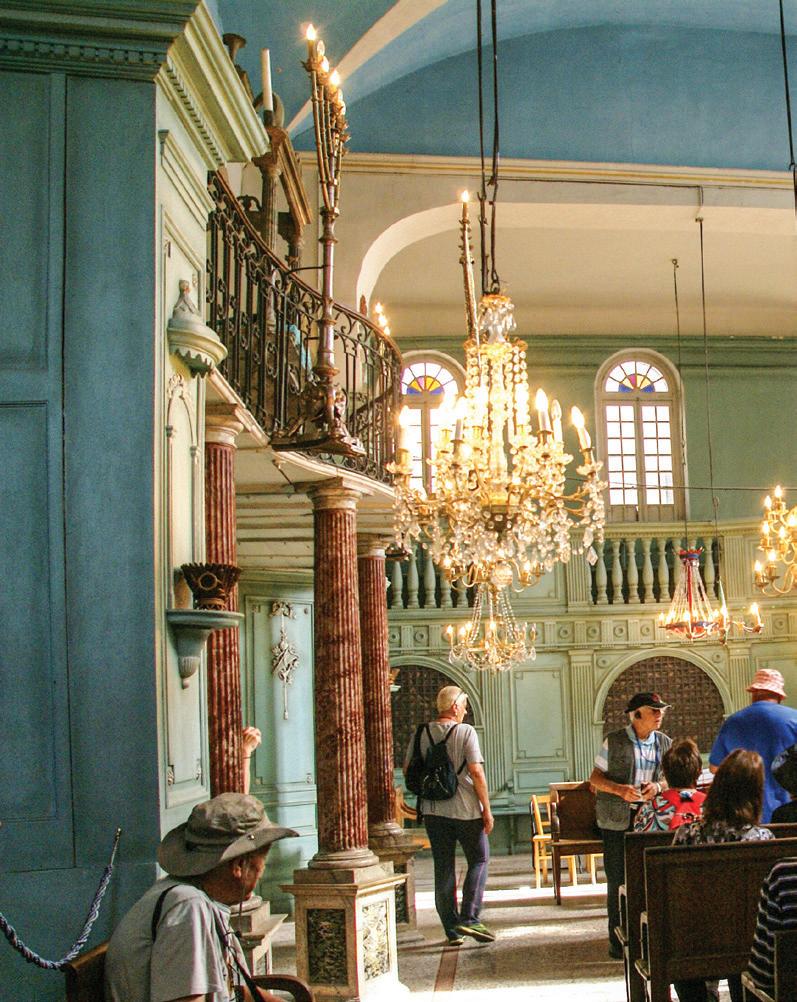

Provence is a sunny, laid-back slice of France. But because of the Olympics, the region expects record crowds this year, both on the roads—the area is best visited by car—and in the museums. The coastline is jammed with Hamptons-style traffic in summer, while festivals create logjams in cultural centers like Aix-en-Provence and Avignon.
Aix , as locals call it, and pronounced “X,” is the lively gateway to this region. Art fans will enjoy walking in Paul Cézanne’s footsteps on a trail that links his studio to his family home, Bastide du Jas de Bouffan . The Darius Milhaud Cultural Center , on Rue Jérusalem, anchors a complex that includes the Synagogue of Aix-en-Provence, which is popular with tourists for its quintessentially Provençal pink-and-gold interior, and with locals for its daily minyan and kosher restaurant, Chez Johanna. Arles , along the southern Rhône, is a charming town that inspired 19th-century painters like Vincent van Gogh, who painted his second Sunflowers series here. Alas, its historic synagogue has closed, but there’s still much to encounter here. Pop into the Fondation Vincent van Gogh Arles to see a few of the master’s paintings, excellent rotating exhibits and a view over Arles from the museum’s roof deck.
1840s fire. Its nondescript façade makes it hard to find, but inside is a distinctive circular sanctuary featuring walnut accents and a spiral staircase.
Avignon’s satellite communities of Carpentras, Cavaillon and L’Islesur-la-Sorgue are each worth a visit for their papal-era synagogues, small-town French feel and weekly outdoor markets (Cavaillon’s is famous for its melons).
It’s thrilling to walk through the entrance arches of Avignon —and that’s your only option in the city, which is walled off from car traffic. The few nearby garages fill up early, leaving latecomers to park across the Rhône and shuttle into town. Avignon’s lively scene is best observed from the brasseries of tree-lined Place de l’Horloge. The nearby Avignon synagogue , tucked into a side street off Place Jérusalem, was rebuilt after an
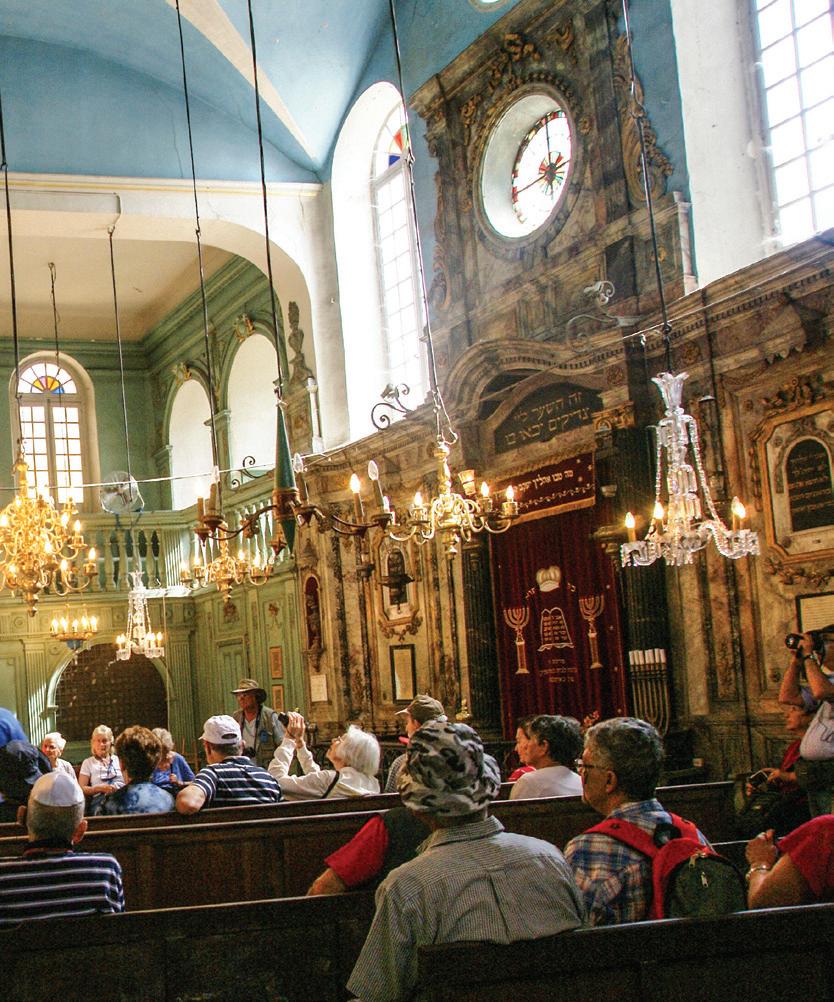
The 18th-century Cavaillon synagogue , on Rue Hébraïque, is more baroque than the one in Carpentras, with its Barbie-pink walls and blue-and-gold filigree. While there is no longer a congregation, visitors can enjoy its historical museum, with vintage photos of Provençal Jewish life and a bygone matzah bakery.
On a pleasant square, the nondescript exterior of Carpentras’ circa-1367 synagogue belies a turquoise jewel-box of a sanctuary built in the style of Louis XV. After 21st-century restorations funded by the World Monuments Fund and the local municipality, the grand interior features a skyblue domed ceiling, cut-glass chandeliers and rose marble accents. Its small congregation maintains a nearby cemetery from the same era.
Along with Carpentras and Cavaillon, L’Isle-sur-la-Sorgue completes metropolitan Avignon’s Arba Kehilot, the four holy communities to which Jews were restricted in the post-papal period. Crisscrossed by canals and footbridges, L’Isle is the most charming of these three villages and is seeking UNESCO World Heritage status to enable ongoing restoration of its historic Jewish quarter, which includes a defunct synagogue and several residences. A well-preserved Jewish cemetery is just outside town.
 The 18th-century synagogue of Cavaillon
The papal palace rising above Avignon
(CLOCKWISE FROM TOP) SHUTTERSTOCK; ANDIA/ALAMY; RUTH HOFSHI/ALAMY
The circa-1367 synagogue of Carpentras
The 18th-century synagogue of Cavaillon
The papal palace rising above Avignon
(CLOCKWISE FROM TOP) SHUTTERSTOCK; ANDIA/ALAMY; RUTH HOFSHI/ALAMY
The circa-1367 synagogue of Carpentras

population numbered about 15,000.
But while generations enjoyed relative peace and integration, antiJewish sentiment rose after Provence became part of France in 1481. A wave of exiled Spanish Jews sought refuge in the region in 1492, only to be caught up in King Louis XII’s expulsion of the Jews from Provence around 1500.
Jewish life essentially went on pause for centuries, not only in Provence, but throughout France. Jews began trickling back into the country in the 17th and 18th centu-
ries, benefiting from Enlightenment ideas that led to their full legal incorporation into French life in 1831.
By then, Jewish communities had been re-established in Marseille and Avignon—but opportunity beckoned in the more prosperous North, and Paris, not Provence, became the dominant center of French Jewish cultural life.
After World War II, immigration to Israel was offset somewhat by an influx of Jews to France from former French colonies across the Mediterranean, namely Tunisia, Algeria and



Morocco, the North African region known as the Maghreb.
Marseille, the region’s major city, is a bustling, multiethnic port and has France’s second-largest Jewish community after Paris. The roughly 80,000 individuals, or 10 percent of the city’s population, support dozens of synagogues. With another 30 percent of locals having Arab origins—largely, like the Jews, hailing from the Maghreb—the metropolis features distinct North African flavors that overlap between Jewish and Muslim communities.

Some of those flavors are found in the egg and tomato dish shakshuka, which, before it defined Israeli cooking, originated among North Africans. Its aromatic profile—thanks to spices like harissa and cumin—is typical of the cuisine shared by Arab and Jewish residents and is found on many local menus.
But Jewish history is more evocative inland. Driving along the Rhône from Carpentras to Avignon, the fabled bridge of the French children’s song, “Sur le Pont d’Avignon,” comes into view across the river. Fortress walls encircle Avignon, where, inside, the transformative imprint of 14thcentury papal wealth remains evident in boulevards of monumental scale, myriad churches and the magnificent Palais des Papes.
Rue de la Vieille Juiverie—“Street of the Old Jewish Quarter”—runs

alongside the papal palace complex, revealing the literal as well as figurative proximity of medieval Jews to Catholic power. French popes relied on Jewish tailors, bookbinders and other trusted professionals, who in turn worshiped at the neighboring synagogue.
If nearby Aix-en-Provence looks familiar, it might be because the city and its surrounding mountains were a favorite subject of the Post-Impressionist painter Cézanne, whose house museum opens to the public this summer. Across Provence this year, art venues are celebrating the 150th anniversary of France’s Impressionist movement.
Aix-en-Provence’s other artistic giant was the influential 20thcentury composer Darius Milhaud, whose family laid the cornerstone for the city’s modern synagogue. Before he became an important figure at the Paris Conservatory and a mentor to experimental Jewish composers such as Steve Reich and Philip Glass, the Marseille-born Milhaud was the scion of a family whose Jewish Provençal roots date to Roman times.
In the surrounding countryside, I discovered the oldest functioning synagogue in France. Tucked into the Roman-era enclave of Carpentras, this sanctuary was authorized by a papal nephew in 1343 and still has a small congregation of fewer than 200.
That such tiny communities continue to exist amid the fields and vineyards of southern France, far from the urban scrum of Paris or Marseille, is testament to how— despite increasing antisemitism that is driving a growing number of French
Jews to immigrate to Israel—Jewish life is as enduring a feature of Provence as the sunshine, the lavender and those gusty winds.
Hilary Danailova writes about travel, culture, politics and lifestyle for numerous publications.
CHARITABLE SOLICITATION DISCLOSURE STATEMENTS
HADASSAH, THE WOMEN’S ZIONIST ORGANIZATION OF AMERICA, INC.
40 Wall Street, 8th Floor – New York, NY 10005 – Telephone: (212) 355-7900
Contributions will be used for the support of Hadassah’s charitable projects and programs in the U.S. and/ or Israel including: medical relief, education and research; education and advocacy programs on issues of concern to women and that of the family; and support of programs for Jewish youth. Financial and other information about Hadassah may be obtained, without cost, by writing the Finance Department at Hadassah’s principal place of business at the address indicated above, or by calling the phone number indicated above. In addition, residents of the following states may obtain financial and/or licensing information from their states, as indicated. DC: The Certificate of Registration Number of Hadassah, The Women’s Zionist Organization of America, Inc. is #40003848, which is valid for the period 9/1/2023-8/31/2025. Registration does not imply endorsement of the solicitation by the District of Columbia, or by any officer or employee of the District. FL: A COPY OF THE OFFICIAL REGISTRATION AND FINANCIAL INFORMATION FOR HADASSAH, THE WOMEN’S ZIONIST ORGANIZATION OF AMERICA, INC. (#CH-1298) AND HADASSAH MEDICAL RELIEF ASSOCIATION, INC. (#CH-4603) MAY BE OBTAINED FROM THE DIVISION OF CONSUMER SERVICES BY CALLING TOLL-FREE 1-800-HELP-FLA, OR ONLINE AT www.FloridaConsumerHelp.com. KS: The official registration and annual financial report of Hadassah, The Women’s Zionist Organization of America, Inc. is filed with the Kansas Secretary of State. Kansas Registration #237-478-3. MD: A copy of the current financial statement of Hadassah, The Women’s Zionist Organization of America, Inc. is available by writing 40 Wall Street, 8th Floor, New York, New York 10005, Att: Finance Dept., or by calling (212) 355-7900. Documents and information submitted under the Maryland Charitable Solicitations Act are also available for the cost of postage and copies, from the Maryland Secretary of State, State House, Annapolis, MD 21401 (410) 974-5534 MI: Hadassah, The Women’s Zionist Organization of America, Inc. MICS #13005/Hadassah Medical Relief Association, Inc. MICS # 11986/ The Hadassah Foundation, Inc. MICS #22965. MS: The official registration and financial information of Hadassah, The Women’s Zionist Organization of America, Inc. may be obtained from the Mississippi Secretary of State’s office by calling 1(888) 236-6167. NJ: INFORMATION FILED BY HADASSAH, THE WOMEN’S ZIONIST ORGANIZATION OF AMERICA, INC. AND HADASSAH MEDICAL RELIEF ASSOCIATION, INC. WITH THE NEW JERSEY ATTORNEY GENERAL CONCERNING THIS CHARITABLE SOLICITATION AND THE PERCENTAGE OF CONTRIBUTIONS RECEIVED BY THE CHARITY DURING THE LAST REPORTING PERIOD THAT WERE DEDICATED TO THE CHARITABLE PURPOSE MAY BE OBTAINED FROM THE ATTORNEY GENERAL OF THE STATE OF NEW JERSEY BY CALLING (973) 504-6215 AND IS AVAILABLE ON THE INTERNET AT www.njconsumeraffairs.gov/charity/chardir.htm. NC: FINANCIAL INFORMATION ABOUT HADASSAH, THE WOMEN’S ZIONIST ORGANIZATION OF AMERICA, INC. AND A COPY OF ITS LICENSE ARE AVAILABLE FROM THE STATE SOLICITATION LICENSING BRANCH AT 919-8145400 OR FOR NORTH CAROLINA RESIDENTS AT 1-888-830-4989. PA: The official registration and financial information of Hadassah, The Women’s Zionist Organization of America, Inc., Hadassah Medical Relief Association, Inc., and The Hadassah Foundation, Inc. may be obtained from the Pennsylvania Department of State by calling toll free, within Pennsylvania, 1(800) 732-0999. VA: A financial statement of the organization is available from the State Division of Consumer Affairs in the Department of Agriculture & Consumer Services, P.O. Box 1163, Richmond, VA 23218, Phone #1 (804) 786-1343, upon request. WA: Hadassah, The Women’s Zionist Organization of America, Inc., Hadassah Medical Relief Association, Inc. and The Hadassah Foundation, Inc. are registered with the Washington Secretary of State. Financial disclosure information is available from the Secretary of State by calling 800-332-GIVE (800-332-4483) or visiting www.sos.wa.gov/charities. WV: West Virginia residents may obtain a summary of the registration and financial documents of Hadassah, The Women’s Zionist Organization of America, Inc. from the Secretary of State, State Capitol, Charleston, WV 25305. WI: A financial statement of Hadassah, The Women’s Zionist Organization of America, Inc. disclosing assets, liabilities, fund balances, revenue, and expenses for the preceding fiscal year will be provided to any person upon request. ALL STATES: A copy of Hadassah’s latest Financial Report is available by writing to the Hadassah Finance Dept., 40 Wall Street, 8th Floor, New York, New York 10005. REGISTRATION DOES NOT CONSTITUTE OR IMPLY ENDORSEMENT, APPROVAL, SANCTION OR RECOMMENDATION BY ANY STATE. Charitable deductions are allowed to the extent provided by law. Hadassah shall have full dominion, control and discretion over all gifts (and shall be under no legal obligation to transfer any portion of a gift to or for the use or benefit of any other entity or organization). All decisions regarding the use of funds for any purpose, or the transfer of funds to or for the benefit of any other entity or organization, shall be subject to the approval of the Board or other governing body of Hadassah. The Hadassah Foundation, Inc. is a supporting organization of Hadassah, The Women’s Zionist Organization of America, Inc. September 2023
If joan nathan’s new memoir had been written to even half its 443-page length and covered far less than the 81 years of her welllived life, it would still be one of the most engrossing and heartfelt reads of the year.
“My editor had to cut the manuscript down by 30,000 words,” said Nathan, the celebrated Jewish food writer who spoke to me by phone from her home in Washington, D.C., just before the recent release of My Life in Recipes: Food, Family, and Memories.
Our interview occurred as Nathan was preparing for a book tour, which would include conversations with such food luminaries as Jake Cohen, Pati Jinich and Ruth Reichl, the former editor in chief of Gourmet Magazine.
“Joan is fearless and has more energy than anyone I’ve ever met, and more curiosity,” Reichl said. “That’s what makes her such a great writer. She loves people and will keep asking questions until they’ve told her all their secrets.”
Those traits have served her well in a Zelig-like career that has spanned 50-plus years, research trips to multiple continents, two television series, 12 cookbooks and countless accolades, including three prestigious James Beard Awards.
She also broke ground as the first superstar Jewish food writer, helping


to popularize a style of Jewish food writing that incorporates travel and cultural exploration. In the process, she has served as a role model and mentor for those who have followed, including myself. I first wrote about Nathan for Hadassah Magazine in 2010, and we have developed a friendship over the past 15 years.
“Whether they know it or not, today’s generation of Jewish food writers owes a significant part of their careers to Joan’s pioneering research and writing,” said Leah Koenig, a cookbook author whose most recent work is Portico: Cooking and Feasting in Rome’s Jewish Kitchen. “More than once in my career someone has said to me, ‘You’re the new Joan Nathan!’ I definitely take it as a compliment, but I also reject the premise. She is a singular force.”
Born to ernest, a german Jew who sailed to the United States via first-class cabin in 1929 with valuable chemical patents in hand, and Pearl, a Barnard College graduate who loved a stiff cocktail until her death at age 103, Nathan spent a charmed childhood in Larchmont, N.Y., and Providence, R.I. Her culturally Jewish but not religious family belonged to a Reform
congregation in Rhode Island and celebrated Jewish holidays with seders that included classic family recipes like leg of lamb with mint jelly as well as unconventional flourishes like cocktails before the seder.
“A startling aberration, I learned later, from Jewish tradition,” Nathan writes in her new book.
The memoir is filled with thousands of laser-sharp details and anecdotes thanks to a treasure trove of correspondence, photos and ephemera Nathan spent years reviewing—not to mention a copy of virtually every article she ever wrote (including hundreds for The New York Times, where she has been contributing since the late 1970s, and several for Hadassah Magazine).
After attending the University of Michigan—including a junior year in Paris that would jumpstart a lifetime of Francophilia that culminated in her book Quiches, Kugels, and Couscous: My Search for Jewish Cooking in France, published in 2010— Nathan worked in New York City for a few years before developing a serious case of wanderlust. That resulted in her first visit to Israel in 1969. Six
Serves 4 to 6
2 small Persian cucumbers
1 s mall onion, or the white parts of 2 scallions (about 1⁄4 cup diced)
2 radishe s
1 ⁄3 cup currants or dried cranberries
1 ⁄3 cup dried apricots, diced
1⁄3 cu p walnuts, roughly chopped
6 sprigs fre sh mint, chopped
4 tablespoons fresh dill, chopped
Kos her salt and freshly ground black pepper, to taste
Abo ut 1 cup plain yogurt
2 tablespoons fresh cilantro, chopped (optional)
1. Dice the cucumbers, the onion and the radishes and put them into a ceramic bowl. Add
Serves 4 to 6
1 1/2 teaspoons kosher salt, plus 2 tablespoons for the pasta pot
1 poun d Japanese eggplant, sliced into 1⁄2-inch rounds
4 c loves garlic
Lea ves and tender stems from 1 bunch fresh basil
1 cup blanched almonds
1 cup extra-virgin olive oil, plus more if needed
1⁄2 c up grated Pecorino, Romano or Parmesan cheese
Fr eshly ground black pepper, to taste
12 o unces busiate, or other pasta of your choice
the currants, apricots and walnuts with half the mint and half the dill, and salt and freshly ground pepper to taste. Spoon the yogurt on top just to cover, and stir it in. Cover, and let the salad sit in the refrigerator for a few hours or overnight.
2. Just before serving, sprinkle the salad with the
remaining mint and dill and, if you want, cilantro. Serve it chilled.
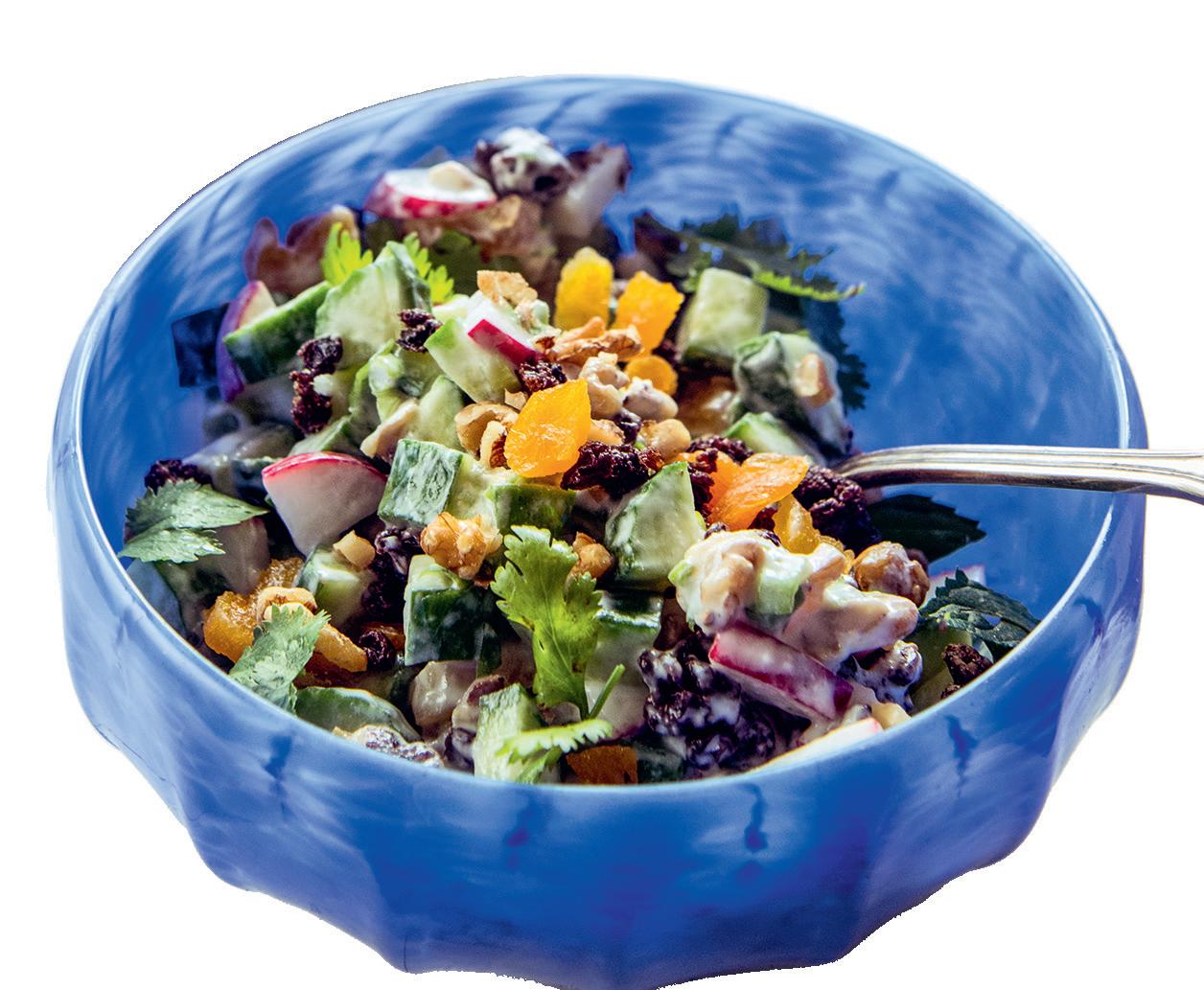
8 o unces string beans, broccoli and/or zucchini, cut into 1-inch pieces
1 cup fresh cherry tomatoes, halved
1. Sprinkle about 1⁄2 teaspoon of the salt over the eggplant slices and let them sit in a single layer on a paper towel for about an hour.
2. To make the pesto, put the garlic, all but a few leaves of basil, all but 2 tablespoons of the almonds and 1 teaspoon of salt in a mortar or food processor. Slowly add 3⁄4 cup of the olive oil and all but a tablespoon of the cheese. Pulse just a few times in the food processor, or work the mortar with a pestle, to grind until the sauce is rich and crunchy yet spreadable and the nuts are grainy in texture and still slightly crunchy; add a little more oil if desired. Adjust seasonings to taste.
over medium-high heat. Add the eggplant rounds and cook until they’re golden on both sides. Drain them on paper towels and sprinkle them with pepper to taste. Fry the remaining almonds until they’re golden, then drain them.
4. Bring a large pot of water to a boil, add the pasta with 2 tablespoons of salt, stir and cook until al dente, stirring occasionally. When the pasta has been cooking for a minute or so, add the snipped beans, broccoli and/or zucchini and cook until done, or steam the vegetables in a colander over the pasta and cook until they are both al dente.


Blot the eggplant dry. Put the remaining 1⁄4 cup of the olive oil into a frying pan and warm it
5. Strain the vegetables and pasta and transfer them to a bowl. Gently stir the pesto into the pasta and vegetables until everything is thoroughly combined. Sprinkle with the remaining tablespoon grated cheese, the remaining basil leaves and the fried almonds. Decorate with the eggplant rounds and halved cherry tomatoes. Serve warm or at room temperature.
months later, she returned to Israel and took a job as a press attaché for the legendary Jerusalem Mayor Teddy Kollek.
Living in the newly reunified Jerusalem, she explored the local cuisine, delving into then-exotic dishes like falafel and hummus and spices like cumin and coriander. She channeled that inspiration into her first cookbook, The Flavor of Jerusalem, written with Judy Goldman and published in 1975, after Nathan’s return to the United States. The book features people and recipes from a large cross-section of Jerusalem life—Jewish and Arab, observant and secular. Little, Brown, the publisher, made the mistake of featuring the non-kosher book’s recipe for shrimp sukiyaki in a brochure advertising Nathan’s avail-


ability to speak to Hadassah chapters.
“Not great publicity,” Nathan writes in My Life in Recipes about the mishap.
It was during her two years in Israel that she met Allan Gerson, a young attorney who was the son of Holocaust survivors. After returning to New York, the two married in 1974, Joan in a dress sewn by Gerson’s dressmaker mother. Gerson would become known for his successful suit against the Libyan government for the 1987 Lockerbie terror attack, where 259 people were killed onboard Pan Am Flight 103. He helped win a $2.7 billion settlement for victim families.
“Allan was a traditionalist in some ways, but he was always proud of me and encouraged me to pursue my career and do what I want,” Nathan said of her husband, who passed away in 2019. “What more could you ask for?”
In 1979, while living in Boston and studying public policy and government at the Harvard Kennedy School while Gerson taught law nearby, Nathan sold the idea for The Jewish Holiday Kitchen to Schocken Books. Her time in Israel had opened her eyes to Jewish food beyond Ashkenazi traditions, and her inclusion of dishes like Moroccan baked fish and lamb
tagine helped widen the road for Jewish foodways and expose home cooks to people and stories they may otherwise not have encountered. “I always say that you don’t have to live in Israel, but Israel teaches you how to live,” Nathan told me.
That is true “especially now,” she said. “Even back in my early years living in Israel, I remember soldiers going off to fight and being killed or injured. Now it is happening again.”
As her career and reputation continued to grow, so did her bibliography, cementing her status as the grande dame of Jewish cooking. More instant-classic titles followed, notably Jewish Cooking in America in 1984 and The Foods of Israel Today in 2001.
Over email, Nathan recalled traveling to Sri Lanka to research the cinnamon harvest for King Solomon’s Table, which came out in 2017.
“I was so intent about learning about cinnamon after…having read about Maimonides’ brother David, who was lost at sea off the coast of Sri Lanka trafficking cinnamon, that I wanted to see how it was harvested and what people ate with cinnamon,” said Nathan, who was hosted in the home of a cinnamon farmer whose cooks served cinnamon-infused rice. “I chanced on the most delicious cinnamon bread—that reminded me of cinnamon babka—at a roadside stand when we were driving in the countryside…. Our driver got the recipe for me, and someone from the Sri Lanka Embassy in Washington helped me make the bread, which ended up in the book.”
“The ultimate satisfaction of my work,” Nathan said, “has been to find a recipe—a good recipe—and through that recipe to recognize an otherwise unrecognized human being and to share it with my readers.”
Nathan says her greatest joy has been her children. Today, her daughter Daniela and son David live in Los Angeles with their spouses. (Daniela and her wife, Talia, are parents to Nathan’s grandchildren, 6-year-old twins Alma and Aviv.) Her daughter Merissa is a rabbinical student in Philadelphia.
It was during the Covid-19 pandemic, soon after Gerson died of a degenerative brain disease, that Nathan went to quarantine with Merissa, who was then living in New Orleans. On endless walks, thinking about her life and going through source material, often falling asleep with documents on her pillow, My Life in Recipes began to take shape. These days, Nathan’s curiosity
endures. Her next project, a children’s cookbook called A Sweet Year, which her grandchildren helped her with, is slated to come out at the end of the year.
“After that, I’m not sure I am going to write any more books,” Nathan told me. “These days, I’m more interested in reading a book than making one.”
More than ever, Nathan relishes her summers on Martha’s Vineyard, with her daily swims, long walks and the relaxed cooking and entertaining she does there for friends and family. “That’s my happy place,” Nathan said. “I can’t wait for summer.”
Until then, her springtime pesto pasta and Persian cucumber salad (page 39) should be top contenders
Jo in us on Thursd ay, June 20 at 7:00 PM ET when Hadassah Magazine Executive Editor Lisa Hostein interviews Joan Nathan, the grande dame of Jewish cooking in America and author of the new memoir, My Life in Recipes: Food, Family, and Memories . Register using this QR code or online at hadassahmagazine.org .

for your dairy Shavuot menu.
Adeena Sussman is the author of Shabbat: Recipes and Rituals from My Kitchen to Yours and Sababa: Fresh, Sunny Flavors from My Israeli Kitchen. She lives in Tel Aviv.



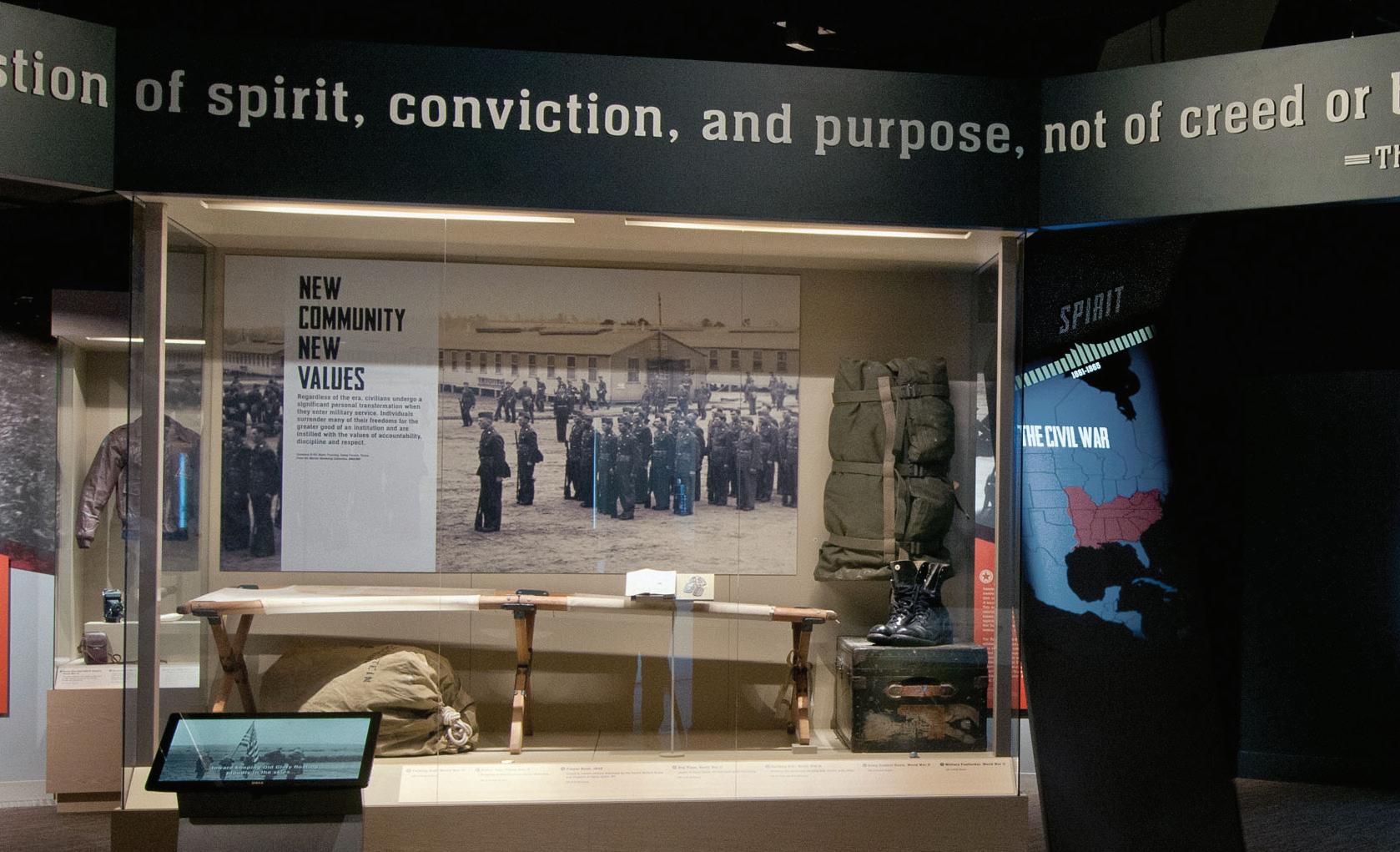
The Jewish men and women who embody ‘spirit, conviction and purpose’
| By Adrienne Wigdortz AndersonThe unassuming brick exterior of the National Museum of American Jewish Military History, located in the Dupont Circle area of the nation’s capital, belies the wealth of information found inside. Its carefully curated core exhibition leads visitors through the history of American conflicts by focusing on the vital military role Jews have played from colonial days to the present.
It’s impossible to provide the exact number of Jews in the armed forces past or present—one of the most frequently asked visitor questions, according to Pam Elbe, the museum’s head of acquisitions. “The government doesn’t require service members to provide their religious affiliation,” she said. “There are currently about 8,000 self-identified Jews in the military although there could be more who haven’t declared. What we do know is Jews have served from day one.”
Written on the wall at the opening to the core exhibition, titled simply “Jews in the American Military,” is a quote from Theodore Roosevelt: “Americanism is a question of spirit, conviction, and purpose, not of creed or birthright...”
His message resonates throughout the intimate museum and its core exhibition, exemplified by individual stories of Jews who served. These include immigrants who joined the military in appreciation of their new
country, such as Polish-born Lt. Frances Slanger, who came to the United States as a child. She was one of the first nurses to wade ashore at Normandy shortly after the D-Day invasion on June 6, 1944.
The core exhibition, which includes interactive displays as well as documents, photos and artifacts such as war diaries and religious objects from kippot to Torah arks, occupies the entire main floor. Its five sections are largely organized chronologically—Answering the Call (pre-Civil War), Spirit (Civil War through World War I), Conviction (World War II), Purpose (Cold War to present) and Leaving the Service (life as a veteran). Smaller permanent exhibits, including the Hall of Heroes, which showcases recipients of the Medal of Honor, are located on the lower level.
Founded by the Jewish War Veterans of the USA and opened in 1988, the museum is funded by private donations and memberships. While it provides an excellent overview of American military history, the individual narratives are what best highlight the contributions of Jewish service members.
“History comes to life with a personal touch and a human face,” said Elaine Bernstein, the museum’s president. “The artifacts are no longer just ‘things’ in a glass case. They represent
real people with real tales of valor.”
Among the tales are the stories of 30 female veterans.
Slanger, who is mentioned in the Conviction section, was one of the first nurses to die in Europe during World War II. She was posthumously awarded the Purple Heart. Hours before she was shot by the enemy, she sent a letter to Stars and Stripes magazine praising G.I.s for their bravery: “These soldiers stay with us but a short time, from ten days to possibly two weeks. We have learned a great deal about our American boy and the stuff he is made of….”
The story of the first Jewish female military chaplain, Rabbi Bonnie Koppell, appears in Purpose. She joined the United States Army Reserves in 1978 and was ordained in 1981 by the Reconstructionist Rabbinical College. She served in Operation Desert Storm (1991) and Operation Noble Eagle (2003), and, over the course of her military career, was deployed to Iraq, Kuwait and Afghanistan to conduct religious services. Now retired from the military, Koppell, who rose to the rank of colonel and received many awards, is associate rabbi at Temple Chai in Phoenix.
To specially honor Jewish servicewomen, the museum is planning an exhibition focused on their narratives in 2025.
The stories in the museum, from the heroic to the everyday, serve to debunk antisemitic tropes such as

Back in the 1970s, Bella Abzug, the feisty Jewish lawyer-turnedpolitician nicknamed “Battling Bella,” was a force to be reckoned with. “She was one of the most recognizable faces in Congress due in part to her trademark branding—her iconic hats,” said documentary filmmaker Jeff L. Lieberman. His recent film, Bella! This Woman’s Place Is in the House ( bella1970.com ), explores the life and legacy of the influential Jewish activist, from her early days growing up in an Orthodox Jewish household in the Bronx and her work as a civil rights lawyer to her career as a politician and activist for liberal causes. She was elected at age 50 to the House; her campaign slogan, referenced in the title of the documentary, was “This woman’s place is in the House...the House of Representatives!”
It is hardly surprising that Lieberman was drawn to Abzug. The 45-
Why is a documentary about Abzug important now?
At this moment in our country’s history, when the great experiment of democracy is being given its biggest stress test, Abzug is a timely figure. Throughout her many decades, Abzug advocated against the misuse of power, spoke out against gender inequality and marched for reproductive freedom. She fought for protections for LGBTQ people, and she felt nobody’s rights were secure until everybody’s rights were achieved.
People used to ask, “What would Bella do?” One only has to watch the documentary to know the answer. She would be organizing daily marches and protests to ensure that these issues do not fade from our attention. She would be working her kitchen telephone

year-old writer and director was raised “in a community filled with strong Jewish women,” he said of his childhood in Vancouver, Canada. Growing up, Abzug’s “orbit filled my 1980s home,” said Lieberman, who now lives in New York. “The books of Letty Cottin Pogrebin and Anita Diamant lined our bookshelves; we sang the songs of Debbie Friedman and were proud to see Gloria Steinem on the evening news.”
Indeed, both Pogrebin and Steinem are interviewed in the film. And so are many other friends of Abzug who talk about her impact on their lives, including politicians Nancy Pelosi and Hilary Clinton and actors Barbra Streisand, Lily Tomlin and Shirley MacLaine. Abzug’s daughters, Eve and Liz, share personal stories from their family’s life as well as newly unearthed home movies.
For all her influence, “how is it that so few people know her name, her story or her contributions to the betterment of the world?” Lieberman said. “It’s one of the many reasons I set out to make this film—that, and a suggestion from my mother.” This interview has been edited for brevity and clarity.
encouraging good people to run for office.
Why was she such a strong advocate for Israel?
From an early age, Abzug, who was part of the Zionist youth organization Hashomer Hatzair, learned of the importance of a Jewish state as a place of refuge for Jews. Abzug was an advocate for Israel but also a huge peace advocate. As Israel continued to militarize in the 1960s and 1970s, Abzug felt she had an important role speaking out about the important values of Israel maintaining its independence, but also maintaining a peaceful coexistence with its neighbors. She felt the same way about the United States, speaking out against the Vietnam War and nuclear proliferation.
Abzug was one of the founders of the National Women’s Political Caucus. Why was feminism so important to her?
Abzug saw a huge injustice in the world based on gender lines. She knew that women unifying, organizing and demanding equality was the only way change would take place. Not just for her generation, but for future generations. She learned that through the lessons of the Suffragist movement and through the power achieved through Women’s Strike for Peace (a group that demonstrated against nuclear weapons testing). Feminism showed women that they were equal, valuable and deserving of every right available to men.
Susan L. Hornik is a veteran entertainment and lifestyle journalist.“Jews aren’t patriotic” and “Jews don’t serve.” Indeed, Jewish War Veterans was established in 1896 by Union Army veterans to combat accusations that Jews didn’t fight in the Civil War. In truth, thousands of Jews fought on both sides, said Bernstein.
“With the surge in antisemitism, the museum’s mission is more important now than ever,” she added.
The museum houses over 5,000 objects that represent Jewish participation in almost every American conflict, from the colonial era until today. Among those objects, for example, are a soldier’s handbook from the Spanish-American War and a camouflage kippah made of tent material and provided to Jewish



Marines for High Holiday services during the Vietnam War.
“Artifacts are a tangible connection to the past,” said Elbe, head of acquisitions. “Our goal is to chronicle the experiences of service members of every rank and military branch. We look for artifacts that uniquely define life in the military.”
In a display of wartime souvenirs is a coconut mailed from Guam during World War II by airman Seymour Silverman to his daughter Marita.
“Coconuts were exotic then,” Elbe explained, “and it speaks to deployment thousands of miles from family.”
Marita Silverman Bowden followed her father into the military. She served as a captain in the Army Nurse Corps
in Vietnam in the early 1970s; her service is also chronicled in the museum. Now 80, Bowden remembers how her friendship with other Jewish military personnel in Da Nang lifted her spirits on Shabbat after long hours working at the hospital.
“I’m grateful the museum included me with the other military women,” she said in an interview from her home in a Tucson, Ariz., suburb. “It’s important to preserve stories, otherwise our experiences can be lost to time and conjecture.”
Adrienne Wigdortz Anderson is a Southern California-based freelance writer. The cloth-covered journal her father, Louis T. Wigdortz, kept when a prisoner-of-war in Stalag Luft III is on display in the National Museum of American Jewish Military History.





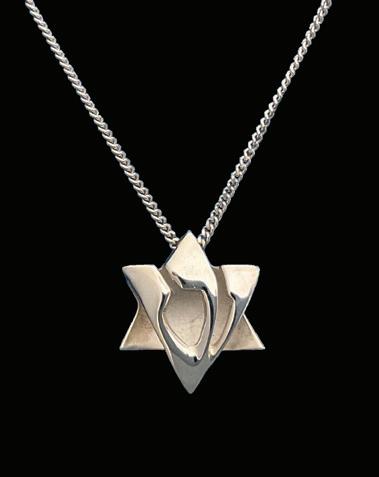





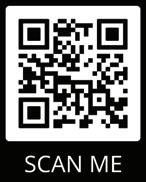
Across Emulate a stereotypical Jewish mother
___ trip, that same mother's favorite form of travel?
Former Japanese capital
It's ___ cause (you should up)
"It's ___ much for me"
Crude group?
Mother of feminism with unusual beliefs about mothering
"...owed by so many ___
___ heart out (envy)
Future fledgling
Middling mark
Kate Hudson's bubbly Jewish mother
Sport-__ (athletic apparel)
Florida's Miami___ County Arctic bird
She plays Rachel Bloom's Scarsdale-based mom in "Crazy Girlfriend"
Was humbled Ukrainian river Alphabet trio
Lengthy, mournful complaint
Gastronomes
Criticize, slangily
Theater section
Successful bounty hunters
Big-hearted Bronx matriarch
Church nook
Lukas of "Witness"
Stiller whose mom converted to Judaism
What moms are sometimes accused of

‘Poetry is central to Jewish liturgy and the Bible’
|By Judy Bolton-Fasman
When poet jessica jacobs first conceived of an organization dedicated to Jewish poets and poetry, she did not foresee that the nonprofit literary group she would create would become a lifeline.
Based in Jacobs’ hometown of Asheville, N.C., Yetzirah: A Hearth for Jewish Poetry takes its name from Jewish mysticism. According to the Kabbalah, existence is composed of four worlds. Yetzirah is the world of formation, where things that are created by man take their form and shape. Jacobs and her board found inspiration from that kabbalistic notion to explore poetry, helping Jewish writers transform language into art. The organization coordinates poetry readings, maintains a database of Jewish poets and helps poets working with Jewish themes identify literary journals open to publishing their work.
Earlier this year, Yetzirah also provided a safe physical space for Jewish writers. During the February 2024 conference of the Association of Writers & Writing Programs (AWP)
in Kansas City, Mo., a major annual event, a group called the Radius of Arab American Writers had urged all panel moderators and bookfair attendants “to acknowledge the ongoing genocide in Gaza,” according to the group’s social media, and, with other groups, mounted a vocal antiIsrael protest.
Yetzirah’s presence became indispensable at the bookfair, said poet Yerra Sugarman, whose 2022 poetry collection, Aunt Bird (Four Way Books), about her aunt who had died in the Krakow Ghetto, was a National Jewish Book Award finalist. Yetzirah’s table was a “welcoming space for Jewish poets and writers who sought a place of refuge from AWP’s antisemitic atmosphere,” she said. Sugarman, who lives in New York City, was working at the table, and noted that many Jewish writers gathered there to commiserate.
While Yetzirah officially launched in 2022, its “groundwork was laid during the Trump era, in the aftermath of the Unite the Right rally in Charlottesville, when it seemed vital to have a space in which Jewish writers
felt welcome to show up as their full selves, as poets and Jews,” said Jacobs, who chairs Yetzirah’s board. She has just released her own book of poetry, unalone: Poems in Conversation with the Book of Genesis (Four Way Books), a lyrical commentary on the 12 Torah portions in Genesis.
“Since October 7, this community has felt even more essential,” she added.
The anti-israel sentiment at the AWP conference and Yetzirah’s added mission highlight two trends impacting the Jewish literary world. One is the rise of antisemitism in the arts world,


grown more prevalent in the aftermath of Hamas’s attack on Israel on October 7, with individuals and groups in fields from film to literature taking sides in the conflict. The result is that Jewish creatives can feel uncomfortable in or are sometimes even shut out of arts spaces.
The protests at the AWP conference reflect a larger story “about the growing hostility toward Jewish writers in public spaces and on the page,” said Jehanne Dubrow, vice president of Yetzirah’s board, author of nine poetry collections, including her 2022 Taste: A Book of Small Bites (Columbia University Press), and professor of creative writing at the University of North Texas in Denton. (In response, the Jewish Book Council, one of the longest-running American organizations devoted to Jewish literature, is asking those in the book world to report to JBC any antisemitic literary-related incidents so they can track such occurrences.)
The second trend is a general surge of interest in poetry, a phenomenon that had a 2021 CNN digital article proclaiming a “new golden age for poetry.” According to a 2022 survey from the National Endowment for the Arts, reading and listening to poetry, generally a niche medium, has nearly doubled over the past 10 years. With the help of Yetzirah and other literary organizations, that interest has extended to the Jewish world.
Despite the troubling arts environment for Jewish writers, Dubrow is optimistic about the future of Jewish poetry and Yetzirah. She said the group inspired her to “rededicate” herself to writing Jewish poems. “Yetzirah has fired up the Jewish poetry community,” Dubrow said. “We are seeing so many more Jewish literary events answering the need to support and mentor Jewish poets at
all stages of their careers.”
Indeed, Yetzirah’s online listings point to Jewish literary festivals and organizations that showcase poetry collections, such as the Jewish Book Council; Voices Israel, a space for Israeli poets who write in English; and the Jewish Poetry Project of Ben Yehuda Press, which publishes contemporary poetry on Jewish themes.
What makes a poem jewish? “What we say in Yetzirah’s reading series,” Jacobs, Yetzirah’s founder, asserted, is that “Jewish poets write Jewish poems. If you had asked me 10 years ago if my first two books were Jewish books, I would have said no. But looking back at those poems, I realize I was absolutely looking through a Jewish cultural lens.”
Her compilation unalone, however, is steeped in the midrashic tradition of creating commentary on Jewish texts. The opening poem, “Stepping Through the Gate,” begins with the line, “Make a fence, said the rabbis, around the Torah.” The fence evokes protection and guardianship of the Torah, aiming to keep Torah and its values at the center of people’s lives.
Near the end of the poem, Jacobs describes opening a metaphorical gate in that fence, one with “an easy latch and well-oiled hinge” to allow for personal interpretations of seminal Jewish texts.
In the poem “Why There Is No Hebrew Word for Obey,” Jacobs presents visceral images of Isaac bound up
as his father, Abraham, imagines the horror he is visiting on his child: his legs, wrenched back his arms, knotted his ankles to his wrists, and laid him on that altar like a child falling through the sky.
Later in the poem, Jacobs memorializes the 11 victims of the Tree of Life massacre in Pittsburgh on October 27, 2018. The Torah portion that Shabbat morning included the binding of Isaac.
For Deborah Leipziger, a Bostonbased poet and founder of the 15year-old New England Jewish Poetry Festival, “Poetry is central to Jewish liturgy and the Bible. It’s part of Jewish DNA.”
This year, Leipziger is both a Community Creative Fellow, as selected by the Massachusetts-based Jewish Arts Collaborative, and the 2024 poet in residence at the historic Vilna Shul in Boston. She is also a proud mother of three daughters, an accomplished baker and a climate activist. All these identities feature prominently in her poems. Her latest collection, Story & Bone (Lily Poetry Review),


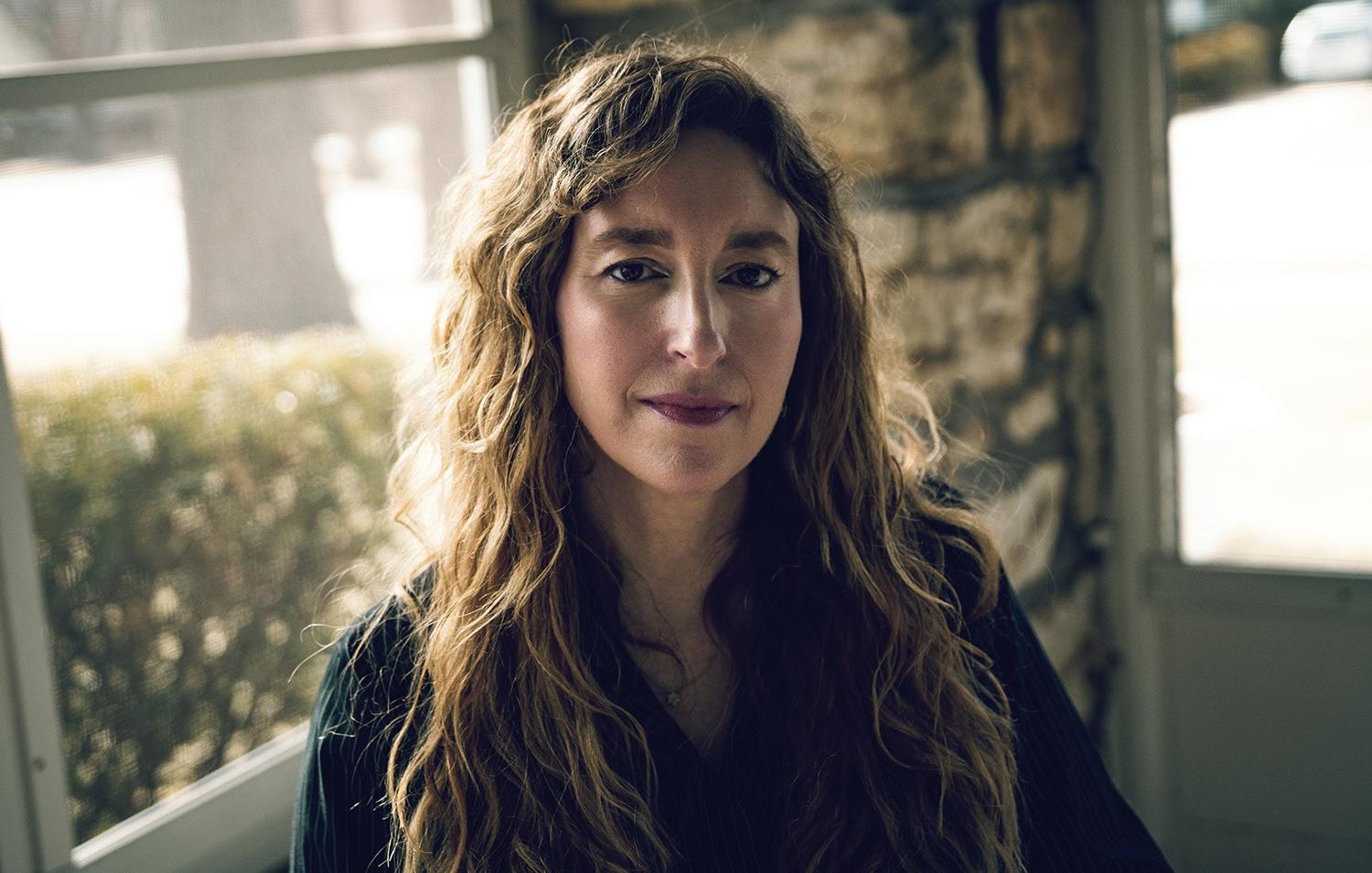
includes lyrical, reflective poems about family, identity and nourishment.
Among the standout poems in the collection is “How to Make Challah.” That piece, Leipziger explained, reflects her fascination with recipes and their accompanying rituals. She made challah weekly with her daughters when they were young, and came to know the recipe by heart:
Bring the biggest bowl you have, large enough to contain your whole week. You’ll need to wrestle with angels.
Begin in the place of knowing, the place that venerates.
Kavannah
“There is a renewed interest in Jewish identities, and that feeds into Jewish poetry,” said Hadara BarNadav, a professor at the University of Missouri in Kansas City and the recipient of a National Endowment for the Arts fellowship in poetry and the Lucille Medwick Award from the Poetry Society of America as well as other honors.
The titular poem of Bar-Nadav’s new book, The Animal Is Chemical (Four Way Books), alludes to the global refugee crisis. Other poems address her medical trauma. BarNadav has four herniated discs, which can leave her unable to walk
present, while also celebrating Jewish joy and resilience.”

for weeks or months at a time. Her poem “Ventriloquist” begins: The old wound is speaking again through my back, carving its blood alphabet. She transformed the acknowledgements section of her book into a poetic memorial to her grandmother’s 11 siblings murdered in the Holocaust, their specific causes of deaths unknown. Bar-Nadav said it was the only way she could imagine honoring these family members. In addition, she gave them a proper burial in her prose poem “Mindfield,” declaring: No history here. No death. No sibling. Eleven who never disappeared in the Camps. I did not know them. They were never born. Eleven nameless question marks.
Bar-Nadav, who credits Yetzirah for the current renaissance in Jewish poetry, praises the organization for its acceptance of Jewish poets from across the political spectrum. Indeed, in its effort to be inclusive, its events have showcased works reflective of different Jewish denominations and from poets at different points in their careers. And the organization validates the Jewish community’s collective trauma after October 7.
“We want to acknowledge the lineage of Jewish trauma,” said Jacobs, “as well as the fraught ache of the
“Yetzirah needed to offer insight and support,” Dubrow said. “Poetry is not an art form of hot takes, but an art form of deep meditation. The board took the time to figure out how we could support Jewish writers in a time of crisis and still be useful to all Jewish poets regardless of their political perspectives.”
Among such initiatives was a guide that Yetzirah developed to help Jewish poets run in-person poetry salons, helping poets create a local nurturing community and making them feel less isolated.
Under Jacobs’ leadership, Yetzirah continues to build community. It launched a membership program in September 2023 and now has a subscriber list of over 1,300. The organization held its inaugural literary conference last summer in Asheville, with over 50 people attending in person; its second conference is scheduled for early July. Dubrow says the conference served as a cornerstone for the organization.
Hundred have also attended, via Zoom, the Yetzirah Reading Series, which features readings by mainstays in the Jewish poetry community such as Grace Schulman, Alan Shapiro and Jacqueline Osherow.
Dubrow captured the spirit of Jewish poetry when she said, “A Jewish poem is full of argument and inquiry. It offers a complex vision of the world, and it doesn’t necessarily have to engage with overtly Jewish subject matter. The idea that where there are two Jews, there are three opinions, is a Jewish poem, too.”
To Be a Jew Today: A New Guide to God, Israel, and the Jewish People
By Noah Feldman (Farrar, Straus and Giroux)
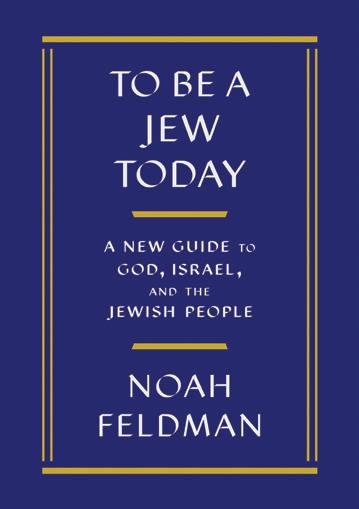
Writer and legal scholar Noah Feldman’s new book To Be a Jew Today is an extraordinary and unique work that demands to be read by all who want to understand the complexity of the Jewish people— where we have been, where we are today and, crucially, where we may be heading. Virtually every chapter is worthy of careful reflection.
In the first section, Feldman, the Felix Frankfurter Professor of Law at Harvard Law School, eschews traditional Jewish denominations of Orthodox, Conservative, Reform and Reconstructionist. Instead, he establishes an innovative foundation for the rest of the book by identifying four distinct Jewish attitudes toward
Noah Feldman
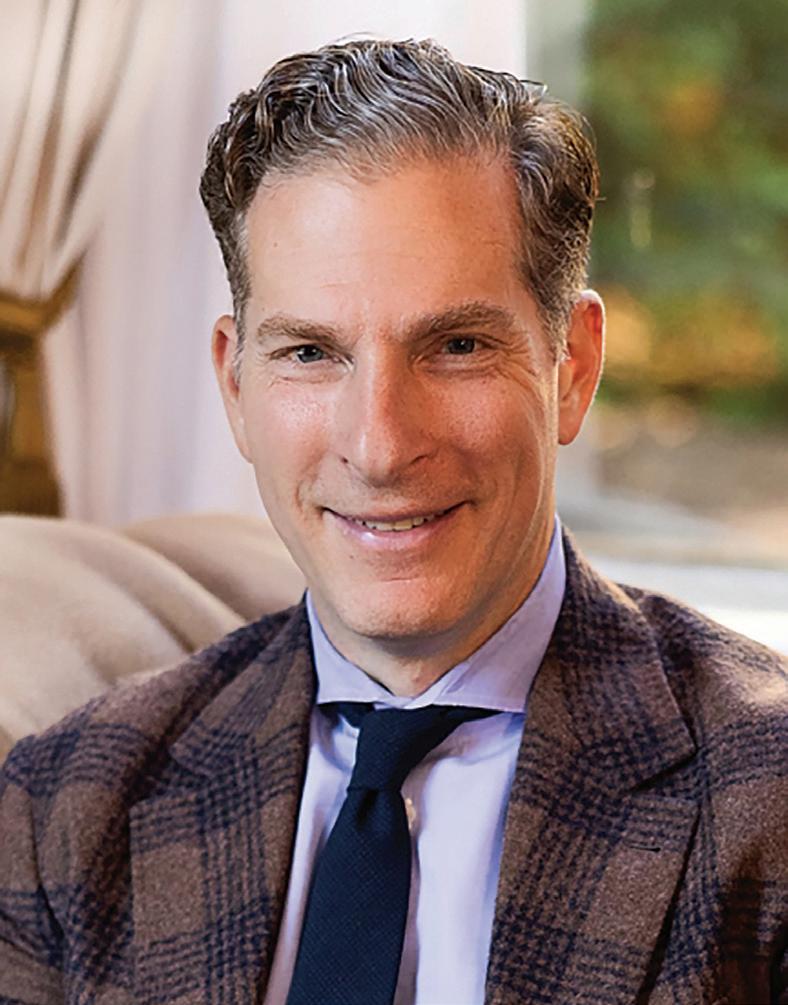
Lolita at Leonard’s of Great Neck and Other Stories from the Before Times
By Shira DickerIn this debut collection of stories, Shira Dicker, a self-described daughter of the first wave of feminism, portrays bold Jewish women in a New York world that is post-Vietnam war and pre-pandemic. She writes energetically, capturing a time and place so well, not with nostalgia but with clarity, compassion and humor. Dicker gets the details just right, like the maraschino cherry-topped whiskey sours at the catering hall named in the title.
To & Fro By Leah Hager Cohen (Bellevue Literary Press)
Leah Hager Cohen’s latest is an intriguing and beautiful novel of two intersecting worlds. The two separate stories follow the interior lives of Ani and Annamae, both unusual and soulful young women searching for understanding of themselves and the world. Opening the book from one side, “To,” gives readers Ani’s story; turning it around and flipping it over gives readers “Fro,” Annamae’s tale. This is a novel of questions, philosophical insights, Talmudic stories and the longing for connection.
The Safekeep By Yael
van der Wouden (Avid Reader Press)Set in the Netherlands in 1961, when traces of the Holocaust and World War II persist, this debut novel follows two very different women whose paths cross in a house in the Dutch countryside. One lives by herself and experiences a loneliness “that arrived without the prospect of leaving.” The other is vivacious, like “a bee stuck in a room with all the windows shut.” Dutch Israeli author
Yael van der Wouden spins a compelling and suspenseful tale that explores concepts of home, love and history.
Polish-born journalist Shmuel Leib Shneiderman arrived in Spain in 1936 at the start of the Spanish Civil War. He was the first Jewish war correspondent in Spain (and likely the premier Yiddish war correspondent anywhere). First published in Yiddish in 1938, this account, now in English, is rich with color and analysis, filled with voices of peasants, workers, officials and members of the International Brigade, such as a Jewish tailor from Paris fighting on the barricades. Shneiderman’s wife, Eileen, was his editor and researcher throughout his career. Included are photos by her brother, pioneering photojournalist David “Chim” Seymour.
On Bette Midler: An Opinionated Guide
By Kevin Winkler (Oxford)A curator and archivist at the New York Public Library, former professional dancer and author of books on theater, Kevin Winkler is also an unabashed fan of Bette Midler, the Divine Miss M, who was born in Honolulu to transplanted New Jerseyites and named for Bette Davis. She moved to New York City in 1965 and worked as a typist, hatcheck girl and go-go dancer before getting her first breaks in theater. This extensively researched book for both fellow fans and theater lovers covers the trajectory of her singular career across the performing arts as well as her Jewish, feminist and environmental sensibilities.
Sandee Brawarsky is a longtime columnist in the Jewish book world as well as an award-winning journalist, editor and author of several books, most recently of 212 Views of Central Park: Experiencing New York City’s Jewel From Every Angle.
God: Traditionalists, the belief that “God’s authority is primary, primordial, and absolute,” an attribute that describes many haredi groups; Evolutionists, the belief that “the rabbis, not God, are in charge of the law’s interpretation, thus capable of evolution,” which encompasses some Modern Orthodox thought; Progressives, the belief “in a divine moral order whose eternal truths of justice and love unfold in progress through history, rather than being fixed in unchanging authority,” which describes much of liberal Jewish thinking; and Godless Jews, a “state of struggling to deny God,” including those who follow a Marxist or secular humanist ideology.
The second, extraordinarily timely section, deals with how these four types of Jews relate to Zionism and Israel. In Feldman’s view, for all four of his categories, in very different ways, “Israel has become a defining component of Jewishness itself.”
This broad assertion is meant to be descriptive, but it is more correctly aspirational, especially in terms of the younger generation whose connection to Israel has undeniably weakened. Progressives, Feldman notes, are most challenged by the political situation in Israel as its dual Jewish and democratic identity is increasingly in tension. Of particular importance is his examination of Traditionalists and Evolutionists, especially the Religious Zionists, given the outsized influence they have exerted in recent years on Israel’s domestic and foreign policies.
The third section, on Jewish peoplehood, grapples with difficult and complex concepts and seeks to answer the age-old question of who is inside and outside the Jewish tent. Not a race, or a nation, or a religion, Feldman defines the Jewish people as most resembling “a large extended
family.” His ambition is not only to help us answer the question of who a Jew is but also, more importantly, why be a Jew.
To answer that question, Feldman draws on the biblical story of Jacob, who grappled all night with a divine entity and survived, only to be renamed Israel. Subsequently, he is embraced by his brother Esau despite their fraught history. To be a Jew, Feldman posits, is both to struggle with and embrace God, Israel and our people.
The conscientious reader who grapples with the wealth of material and ideas in this book, clearly a labor of love for Feldman, no doubt will be enriched by it.
—Martin J. Raffel
family were destroyed by the Nazis. In flashbacks, readers learn about how the Aryan-looking Bina/Lena survived the Warsaw Ghetto, worked as a spy, vanquished her enemies, supplied weapons to the fighters—and lost her true love.
The Goddess of Warsaw
By Lisa Barr (HarperCollins)It’s a strange time to be reading fiction about the Holocaust, as many of us are wondering if we might be living in the days before the next one. That is how it feels to be immersed in The Goddess of Warsaw, a captivating new work of historical fiction by New York Times best-selling author Lisa Barr, whose previous book, Woman on Fire, was a One Book, One Hadassah selection.
In Barr’s latest novel, when a young Hollywood newcomer wants to direct a film about legendary Golden Age film star Lena Browning, Lena is threatened by a Nazi from her past.
Before she became a star, Lena was Bina Blonski, a wealthy Polish Jewish actress whose tony life and prominent
One of the enjoyable aspects of reading The Goddess of Warsaw is that we know that our hero survives, but how she survives and at what cost to her friends, family and to her humanity are the questions fictional—and real-life—survivors must grapple with. And, as an author’s note explains, Goddess is rooted in actual history: In the ghetto, there were uprisings, smugglers, female spies and survivors to tell the tales. (That Lena survived to exact payback on hidden Nazis in America, however, may be conflating true stories with revenge tales like the film, Inglorious Basterds.)
Part steamy love story, part suspense tale and part revenge fantasy, Goddess is at its best when describing Lena’s past, her life before the Nazi occupation of Poland and in the ghetto: “We should have left Poland long before the invasion in September 1939. We knew better. We saw the signs; small Jewish businesses targeted and destroyed. We were educated, worldly—we knew. But my mother insisted

“An
empowering spin on the biblical story of Tamar... a welcome and gripping portrait of the unsung courage of a biblical heroine.” A

Miriam Feinberg Vamosh

Ravaged by one brother, silenced and betrayed by another, and abandoned by her father, Tamar—once beloved daughter of King David—suddenly finds herself in exile, fleeing for her life. But the story continues where the biblical narrative ends.
Also available online with purchasing links. Go to hadassahmagazine.org and click on Guide to Jewish Literature.

Stephan R. Frenkel
This critically acclaimed bestseller presents the captivating story of Clara Prinz, a remarkable woman forced to leave her native Berlin in 1939. As Clara traveled alone on a voyage into the unknown, she turned to memories of her adolescence during La Belle Époque – the Beautiful Era filled with optimism and cultural transformation at the dawn of the twentieth century. Through Clara’s chance encounters with notable personalities of the period, Clara’s Secret weaves an unforgettable tapestry of personal and historic events. Clara’s Secret is ultimately a compelling story of the advancement of humankind and the survival of its decline.
LIMITED TIME OFFER: Throughout June, Clara’s Secret Kindle Version is available on Amazon for $0.99.

Lisa Barr
From the New York Times bestselling author of Woman on Fire, the harrowing and ultimately triumphant tale of a Jewish WWII assassin turned Hollywood star ... The Goddess of Warsaw is the enthralling story of a legendary Hollywood screen goddess with a dark secret past during the Warsaw Ghetto Uprising. When the famous actress is threatened by someone from her past, she must put her skills into play to protect herself, her illustrious career, and those she loves, then and now. Glamorous and gut-wrenching, Goddess is one woman’s hunt for revenge and pursuit of justice no matter the cost.
Available from Bookshop.org.
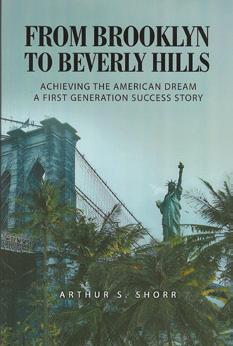
Arthur S Shorr
All fi rst-generation Americans and their immigrant parents should read this book. It is a roadmap and chronicle of how to achieve the American dream from the experiences, successes and failures growing up in a middle-class Jewish Brooklyn ghetto dealing with the pressures to fit into the American culture. Teenagers and young adults will appreciate how education and mentorship a ects planning a career. Through the author’s journey and zany adventures, readers will identify with the stresses and insecurities of growing into adulthood, assuming responsibility for oneself, and the delicate balance between personal, family, and professional issues while achieving the American dream. Available on Amazon.

Delphine Horvilleur
A MAJOR INTERNATIONAL BESTSELLER. A timely, powerful reflection on our relationship to death and an invitation to accept loss and vulnerability as essential and enriching parts of life, from France’s most prominent female rabbi. Horvilleur recounts stories collected during the years she has spent caring for the dying and their loved ones. From Elsa Cayat, the Charlie Hebdo columnist killed in the terrorist attack, to Simone Veil and Marceline Loridan, “the girls of Birkenau”; from Israeli Prime Minister Yitzhak Rabin, to Myriam, a New Yorker obsessed with planning her own funeral. Horvilleur addresses death and dying with intelligence, humor, and compassion.
Available in hardcover, audio and e-book on Amazon, Bookshop.org or wherever you buy your books.
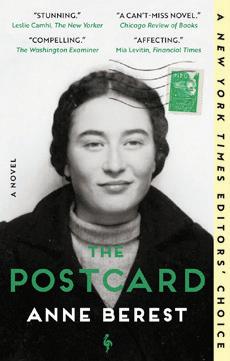
Anne Berest NOW AVAILABLE IN PAPERBACK. A National bestseller. Selected a best book of the year in 2023 by NPR, The New Yorker, and TIME Magazine. An enthralling investigation into family secrets, and a poignant tale of a Jewish family devastated by the Holocaust and partly restored through the power of storytelling. “Powerful” —The New York Times. “Stunning” —The New Yorker. “Moving... Let’s hope that a book like this, which encompasses both the monstrosities of the past and the dangers of the present, will guard us from complacency.”—The Wall Street Journal. Available in paperback, audio and e-book on Amazon, Bookshop.org or wherever you buy your books.
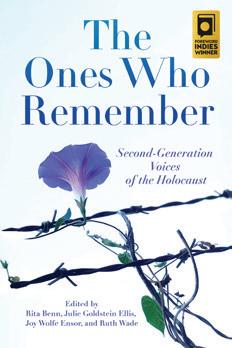
Edited by Rita Benn PhD, Julie Goldstein Ellis, Joy Wolfe Ensor PhD, Ruth Finkel Wade
How do you talk about and make sense of your life when you grew up with parents who survived unimaginable horrors of family separation, systematic murder and unending inhumanity? Sixteen authors reveal the challenges and gifts of living with the aftermath of their parents’ experiences during the Holocaust. Their parents’ traumas seeped into their souls – whether they knew their parents’ stories or nothing at all. This award-winning book is ultimately inspirational, showing the triumph of the human spirit over adversity.
Available on Amazon and wherever books are sold. www.secondgenerationvoices.com

Carol Matas
The media has discovered Zevi’s secret psychic abilities—and it’s ruining his life! He wants to be known as an actor, not a psychic. When fi lm star Robert Lemon comes to town to shoot a movie, Zevi hopes this is his big chance. Until he begins to sense that the star’s life may be in danger and it’s up to Zevi to save him. Orcabook.com.
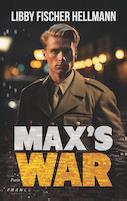
Libby Fischer Hellmann
Libby Fischer Hellmann’s 18th novel fictionalizes the littleknown story of the Ritchie Boys, a group of 2,200 German Jewish immigrants who fled Hitler and joined the US Army to fight Nazis. Both a coming-of-age and WWII novel, Max’s War is based on historically accurate information and loosely follows her late father-inlaw’s experiences during the war.
Widely Available.

Marsha Lee Berkman
From the opening vignette in which a photograph is a silent witness to history to the powerful coda “Miracles,” a novella set against the vibrant panorama of the Yiddish theater in America, the fifteen memorable narratives in The Girls of Jerusalem and Other Stories span continents and eras as they chronicle love and loss, piety and heresy, mysticism and rationality to reinterpret ancient tropes of exile, dislocation, and profound change, revealing a new understanding of Jewish history and memory. “Luminous tales of exile and loss that bequeath new life” Kirkus Reviews (starred review). A best book of the year selection.
Available on Amazon and wherever books are sold.

Elaine Serling
A musical story celebrating the relationship between grandparents and grandchildren. This book features fresh lyrics and a toe-tapping melody. The colorful illustrations mirror the joy of this special bond. Use the QR code printed inside the book to download the song. Prepare to make memories to last a lifetime—listening, reading and singing together! Available on Amazon or at www.elaineserling.com. 800-457-2157; $19.95 + $3 shipping.
we stay, believed that our friends in high places would shield us….”
And even after, when Lena sees her old home while acting as a spy for the resistance, she ruminates: “We used to be secular, cultural Jews, mingling with the upper echelon of Warsaw society. We used to speak only Polish—not Yiddish, like most of the ghetto inhabitants. A maid used to wash my hair, and another used to lay out my clothes. Our so-called friends used to be loyal, until they eagerly handed us over to the Nazis like Beluga caviar on a platter.... We aren’t just Jews... we are inhabitants of a planet called Used to Be.”
As an American Jew after October 7, I read those lines wondering if my

Corie Adjmi
Forced to return to her parents’ roots in the Orthodox Syrian Jewish community in Brooklyn, Casey Cohen faces two opposing worlds as she explores the unfamiliar culture and fi nds love. “...a read-alike for Meg Wolitzer’s The Wife and Melissa Bank’s A Girl’s Guide to Hunting and Fishing and sets the weight of familial, romantic and cultural expectations against the terrifying freedom of the unknown.”—Booklist.
Available on Amazon and Bookshop.org, www.corieadjmi.com.

Steven Moscovitz
Kill Brothers is a pulse-pounding, cold case thriller that delivers page-turning twists and turns, weaving together historical fi ction (World War II) and modern-day DNA analysis.
Will NYPD’s Detective Mills murder investigation link him back to Greta Weber’s shocking secret of nearly a century before? From the 1920s Germany to 2018 in Brooklyn, Kill Brothers will keep readers racing through the pages until its mind-bending conclusion.
Available on Amazon and www.stevendmoscovitz.com.
community is filled with inhabitants of the “planet called Used to Be.”
Hopefully not. But if we are, we can imagine take-no-prisoner heroes like Lena to help us. “With love from the Warsaw Ghetto,” as she says with every Nazi kill.
—Amy KleinAmy Klein is a freelance writer and the author of The Trying Game: Get Through Fertility Treatment and Get Pregnant Without Losing Your Mind.
In the spirit of Anita Diamant’s The Red Tent, Israeli author Esther Goldenberg weaves together familiar biblical stories with her own creative

Ruth Behar
Spanning over 500 years, awardwinning author Ruth Behar’s epic novel tells the stories of four girls from di erent generations of a Jewish family, many of them forced to leave their country and start a new life. Author Sandra Cisneros said, “Paths of milk and honey for this new book. It sings with poetry and history and story all at once.”
Available on Bookshop.org, and wherever books are sold.

Ronnie Grinberg
Write Like a Man by Ronnie Grinberg explores how virility and Jewishness became hallmarks of postwar New York’s combative intellectual scene. “Ms. Grinberg’s insightful survey persuasively shows that some of the country’s most brilliant midcentury writers cultivated manliness to counter what they saw as their fathers’ meek marginality and thereby forged new ways of being American and of being Jewish.”—Benjamin Balint, Wall Street Journal
Available in both hardcover and ebook editions from Princeton University Press. Purchase your copy today!

liberties to build a thoughtful, feminist midrash of sorts. The first installment in an expected trilogy, The Scrolls of Deborah centers around matriarch Rebekah and her nursemaid Deborah (not the Deborah you might have been expecting!). We read about Deborah as a child, her journey to Rebekah and her life spent serving the matriarch.
The chapters are organized into seven “scrolls,” each with several sections, and all told from Deborah’s viewpoint: “I am Deborah.

Susan Weissbach Friedman
It is May 2014, and Professor Klara Lieberman receives a letter from her estranged mother. Her long-ago-disappeared father, she learns, is buried in Warsaw. As the Polish government is giving financial reparations for land it stole from its Jewish citizens during WWII, Klara’s mother wants her to go to Poland to collect it, while Klara is determined to go fi nd answers about her father.
Available from Bookshop.org.

Dr. Larry S. Milner
Dr. Larry S. Milner, an authority on infanticide, asks: will abortion-right reversals (Roe v. Wade) lead to infanticide? In his book, Hardness of Heart – Hardness of Life: The Stain of Human Infanticide, he investigates why infanticide has been present in every form of human society throughout history, to understand how the loss of these rights will a ect Americans as well.
Available on Amazon and Kindle.
To advertise here, please call Randi O’Connor at (212) 451-6221, or email roconnor@hadassah.org. Space is limited.

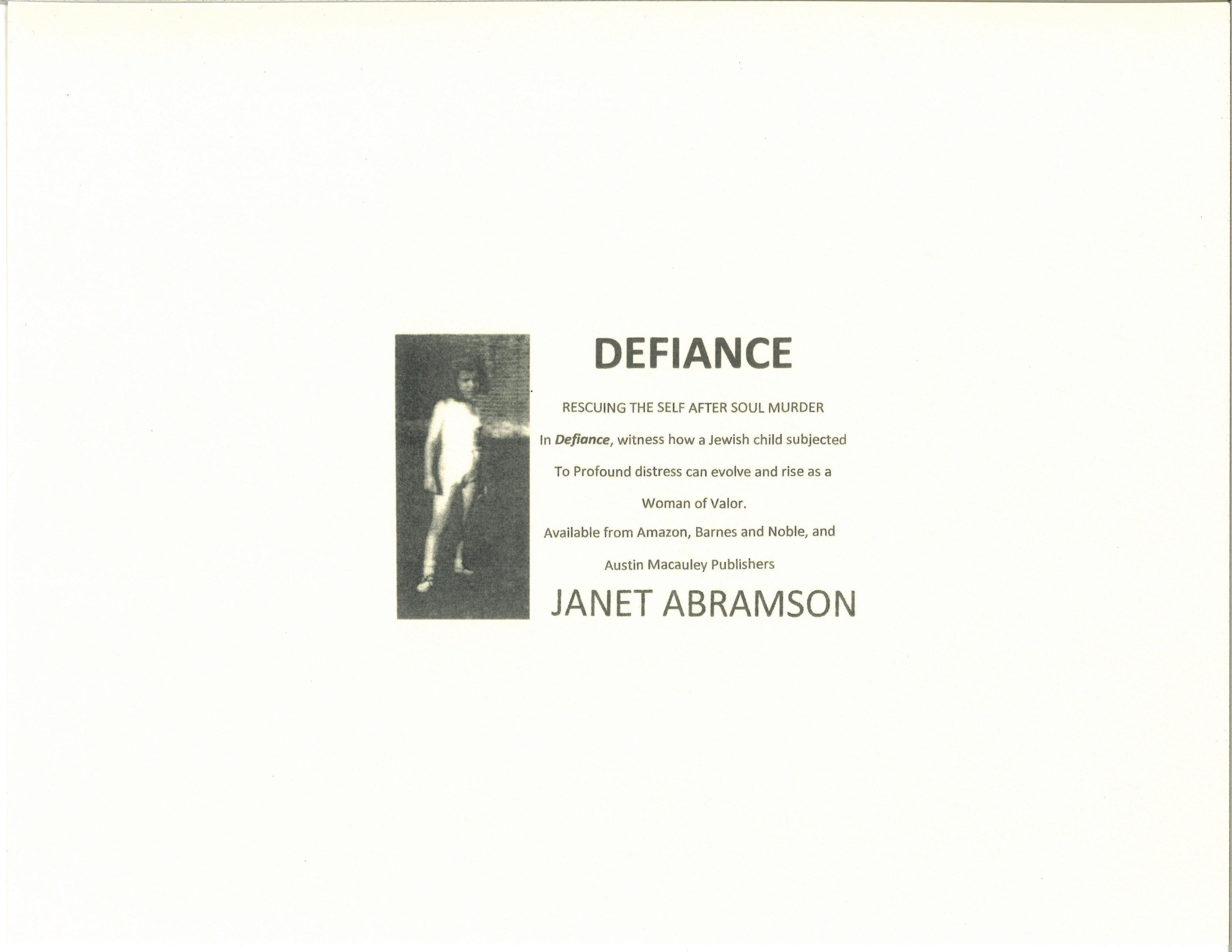
Daughter of Daganyah. Daughter of Hallel. Daughter of Sarah,” she says by way of introduction in the opening scroll, telling readers from the start that this will be a matriarchal story.
Though many streams of Judaism have become more egalitarian, and more and more women are joining the clergy and studying Jewish texts,
Jewish biblical fiction centered around female characters—by Jewish authors—are still welcome and needed. To say nothing of more feminist midrash and commentary on the Talmud.
Both Rebekah and Deborah are strong and independent; their relationship is nuanced and complicated.
“Rebekah taught me to be free again,” Deborah thinks. “She reminded me that I could experience safety and delight. And though I could not become a child again, I could become joyful again.”
Readers will enjoy glimpses of familiar biblical women like Rachel, Bilhah and Zilpah—in fact, this is where Goldenberg shines, highlighting rituals like the celebrations of the new moon and the relationships between the women.
I would suggest reading the author’s note at the end of the book before delving into the novel. There, she explains why she added characters of her own creation as well as her stylistic choices on how the text refers to God.
That being said, for me, Goldenberg’s repeated reference to God as “Yah,” as well as references to “YhWh,” or breathing exercises of “Yhhhhh Whhhh,” was a distraction. While I understood that the author made the choice to maintain a sense of authenticity, it felt a bit jarring to read and, at times, a bit excessive.
The Scrolls of Deborah is a welcome addition to the existing canon of Jewish biblical fiction, and I look forward to seeing what Goldenberg has in mind for the remaining two books of the trilogy.
—Jaime Herndon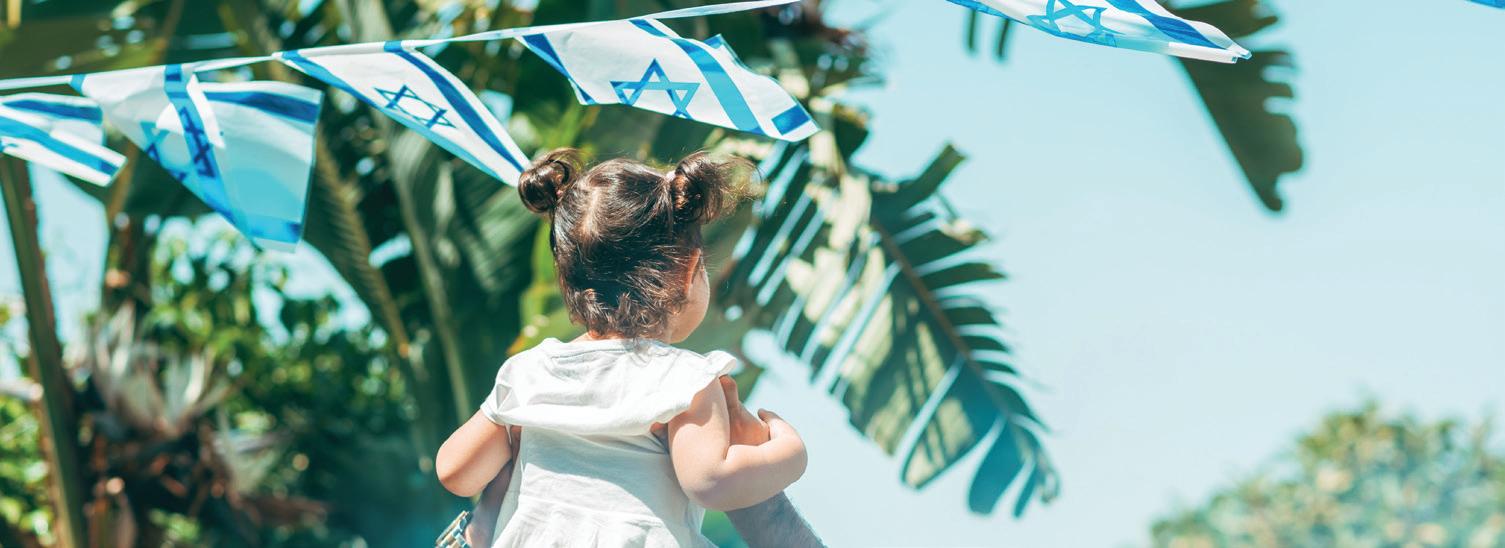
Several related zionist news items have made headlines in the past eight months: the horrific terror attack on Israel by Hamas; the criticism of Israeli government policies in rallies and by public figures; and, despite war and protests, the recent ranking of Israel as the fifth happiest country in the world. These events are also connected by the Hebrew root פ-ק-ת (tav, kof, feh), which means strength, including military might, and can be connected to valid passports, heart attacks, magazines and newspapers, couples counseling and the seasons of the year.
The root appears neither in the Five Books of Moses nor in the canonical books of the Prophets. It does occur, however, in the Hebrew Bible’s third section, the Writings—especially in those texts in which a monarchy’s תוּפיִקְתְּ (tekifut), strength, is central.
Queen Esther, after the defeat of Haman, sends two epistles to her subjects, one praising Mordechai for וֹתָרָוּבְגְוּ וֹפְּקתְּ (tokpo u-gevurato), his military prowess and heroism, the other confirming the ףֶקתְּ (tokef), halakhic status, of the newly created holiday of Purim. Daniel uses our root in an Aramaic word to interpret the dream of King Nebuchadnezzar. It is in vain, he says, that you תְּפקתוּ תַברָ (revat u-tekaft), “have grown and become mighty.”
For centuries, congregations have hearkened to our root as the cantor chants the central liturgical poem of the Days of Awe, ףֶקתְּ הֶנֶַּתְנְ וּ (u-netanneh tokef), “Let us proclaim the mighty power [of the holiness of this day].”
October 7, with its הָפקתה (hatkafah), surprise attack, by Hamas is already being viewed by Jews as a day to be solemnly memorialized. To give it additional gravity, perhaps, some reporters “upgrade” hatkafah to הָפקתִמִ (mitkafah), belligerent assault. Another derivation of our root, הָפיִקְתְּ (tekifah), attack, appears in reports of Israeli retaliatory strikes. More than one Israeli ןוֹפוּקְתְּ (tekufon , periodical, has reported that policies of the govern- ) ment הֶשֶָׁק וּפְקתנְ (nitkefu kasheh), have been vehemently condemned.
There are other types of attacks that make the news these days, including how to prevent a בֵלֵ ףֵקתה (hetkef lev), heart attack. In couples counseling, when discussions get overheated and confrontational, the therapist will sometimes guide the couple to a ןוּנִֶּצִ תַפוּקְתְּ (tekufat tsinnun), cooling-off period.
If, during ץִיַקַַּ ה תַפוּקְתְּ (tekufat ha-kayyitz), the summer season, you are planning a visit to the Jewish state, here’s a friendly reminder to check your passport to make sure that וֹפְּקוֹתְּ גְפּ אֺ לֵ (lo pag tokpo), it hasn’t expired. Once there, you’ll see how Israel’s vaunted Jewish communal spirit—especially during tough times—is always ףֶקתְבְּ (be-tokef), in force.

We’re more than a print publication!
Website
Hadassahmagazine.org
Monthly newsletter
Hadassahmagazine.org/ newsletter-signup
Large-print options issuu.com/hadassahmag
Social media
Search “Hadassah Magazine”






In times of crisis, ‘comedy is the way Jews cope’
| By Amy KleinJust a few days after october 7, veteran comedian and Hadassah life member Judy Gold posted on Instagram, “I now know who would hide me.” She wasn’t kidding. As someone whose father fought in World War II, whose parents knew many Holocaust survivors, she says that she is horrified by resurgent antisemitism.
“Generation to generation has dealt with antisemitism, and it’s our turn,” the 61-year-old said on her podcast, Kill Me Now, in a recent episode she recorded with fellow Jewish comedian Modi Rosenfeld. “It’s a terrible situation, but
What’s it like being a Jew in entertainment right now?
It’s sad. It’s infuriating. My mother would always remind us that everyone hates the Jews. My brother, sister and I are constantly saying, “She was right.”
People my age who are one generation from the Holocaust are dealing with that feeling of gloom. We learned a lot from the Holocaust, and we are fighting back. This time, we’re not victims. And I think people liked it better when they saw us as helpless.
Have you lost friends and followers over your support for Israel?
I posted myself on social media holding the sign “Bring our girls home now.” Within minutes, hundreds of followers gone. It’s pure and unadulterated antisemitism. People are so misinformed—it’s willful ignorance. It’s just so funny how if you mentioned Israel or the Middle East on October 6, people would say, “I really would love to know more about it,” but after
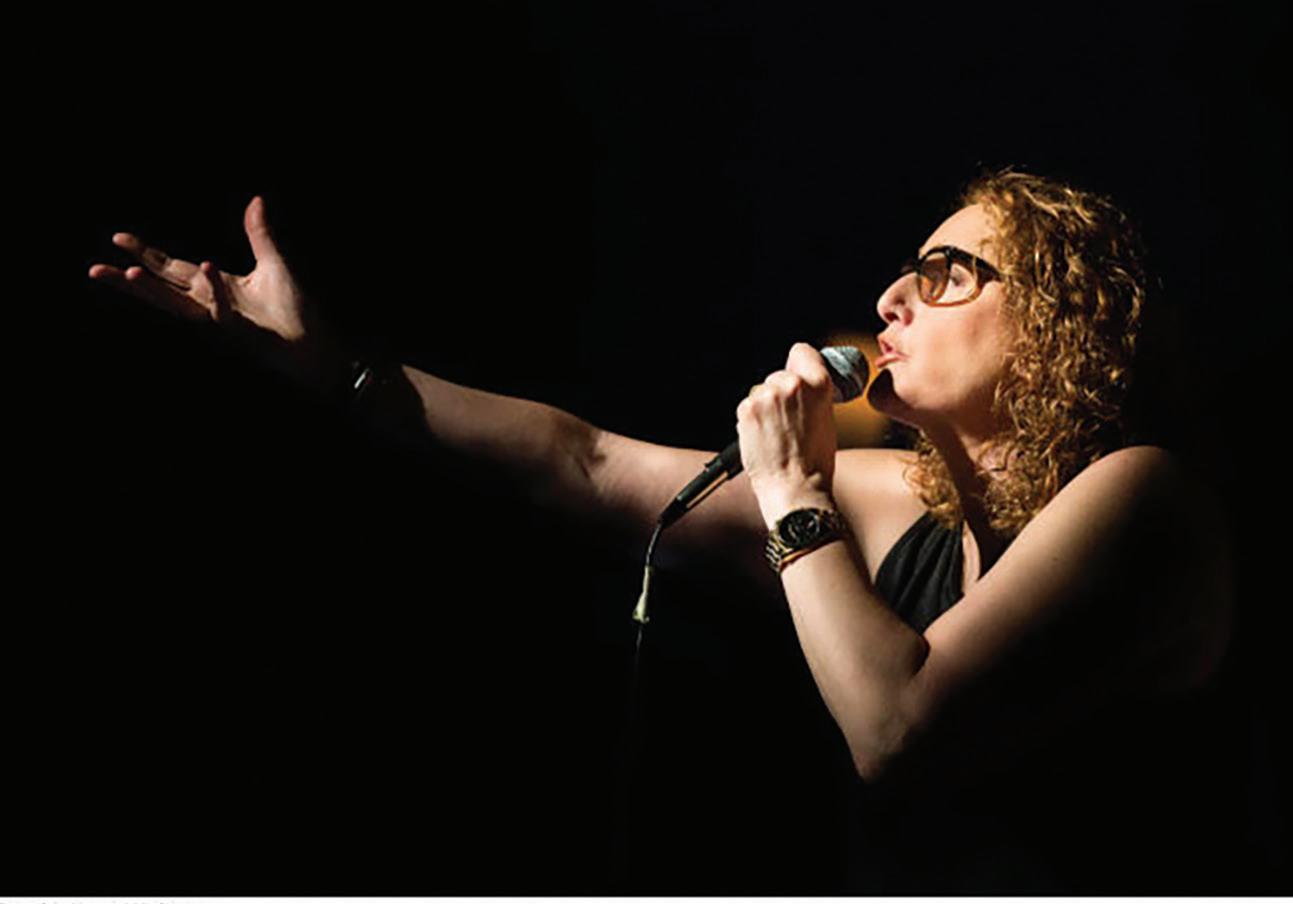
we’re going to survive, like we’ve survived before.”
Gold lives in Manhattan with her partner and is the mother of two adult sons. A two-time Daytime Emmy winner and author of Yes, I Can Say That: When They Come for the Comedians, We Are All in Trouble, Gold shares what it’s like to be Jewish in the entertainment world now, why she has no patience for famous people who eschew politics and how comedy is still a powerful weapon. This interview has been edited for brevity and clarity.
October 8, they were all experts.
Why do you think more celebrities aren’t defending Israel?
The people who are silent—shame on you! There are the people in Hollywood who say, “I don’t want to get into politics, I steer away from that, I don’t want to ruffle any feathers.” But this is different. I do believe people are scared of losing their material things, and I know for a fact that people who were outspoken had to stop because of their family’s safety. But to never address it—I don’t understand how you can sit and be silent.
As a gay person and LGBTQ+ advocate, how do you feel about groups like Queers for Palestine?
In Gaza, if you are gay, you are killed. That’s it. Last year, I went to Israel with A Wider Bridge, an organization that connects LGBTQ+ groups in Israel and the United States. We met a Palestinian social worker who dealt with Palestinians who escaped and came to Israel
because they’d be killed. They get shelter and medical care.
People here call it “pinkwashing” when you mention LGBTQ+ rights in Israel. It’s a democracy; they have four gay pride parades, one each Sunday in June. And these gay people are for Palestine? Please! Go there. Go to Gaza and see how long you last.
Is it hard to perform comedy at a time like this?
Comedy is the way Jews cope. If you think about it, we shouldn’t be here, but we are here. We have to laugh. At a recent Stand-up for Israel comedy show in Toronto, protesters called us “baby killers.” People who walked through those protesters to sit together and laugh were engaging in an act of defiance. Jews have used humor as a coping mechanism and a weapon for thousands of years. And we’re not about to stop.
Amy Klein is a freelance writer and the author of The Trying Game: Get Through Fertility Treatment and Get Pregnant Without Losing Your Mind.
Since the outbreak of war in Israel, Yad Sarah has aided in the rehabilitation and recovery of more than 2,500 soldiers.
“I will never forget when we came home from the hospital after Yahali was born, and again when he was reborn after he was wounded,” said Hadas Brazilai, the mother of Yahali Brazilai, a 13th Battalion Golani soldier injured in combat.
“Back then, we brought him a highchair. Now, we brought a wheelchair from Yad Sarah,” she continued. “And the excitement of seeing his first steps this time was even more inspiring.”
With more than 7,000 volunteers and 126 branches throughout Israel, Yad Sarah is here to support IDF soldiers and all the people of Israel.
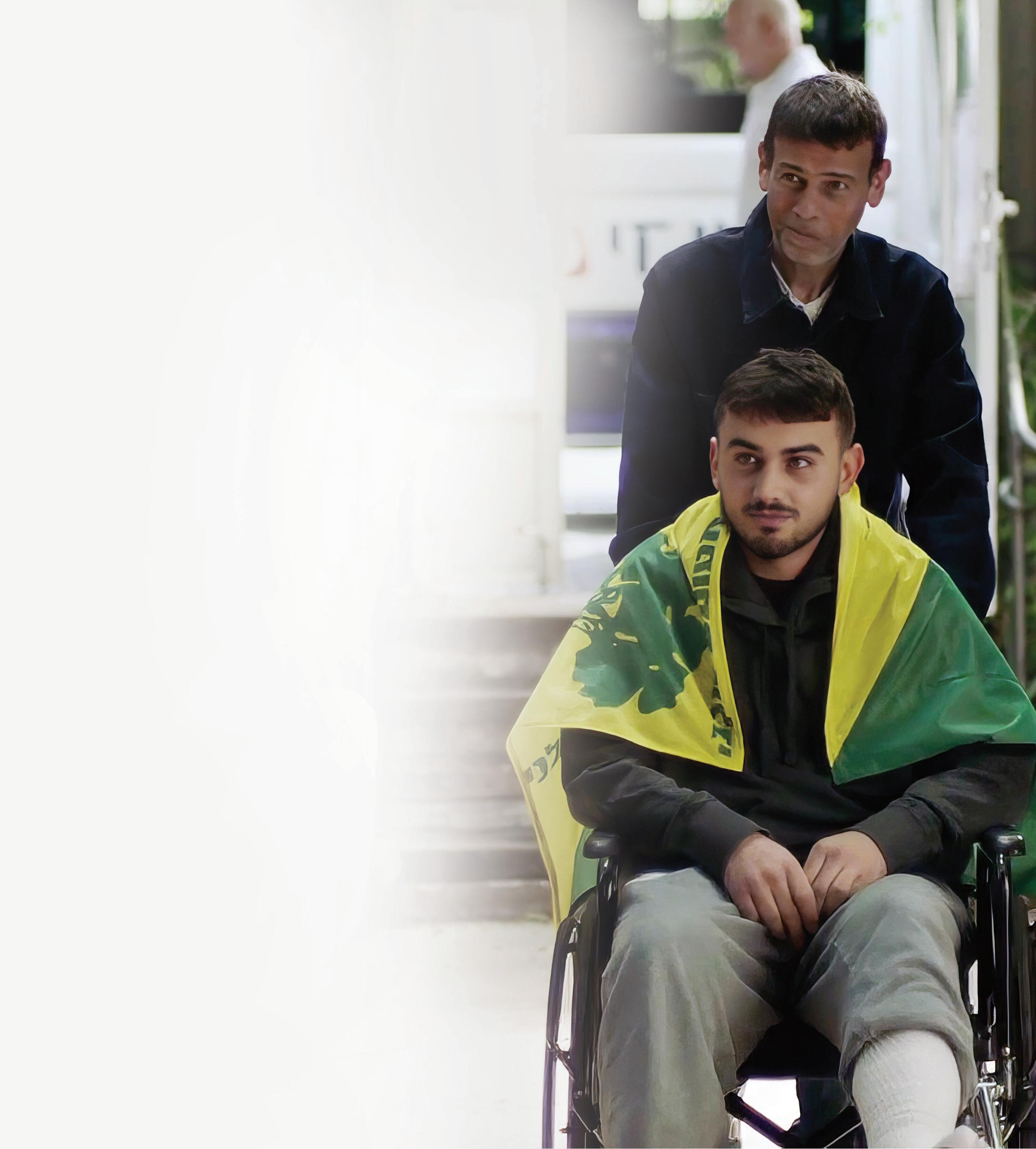 Brazilai IDF soldier, Yad Sarah client
Brazilai IDF soldier, Yad Sarah client

“Hadassah is the foremost organization that supports Jewish life, education and health care, both in the United States and abroad. Having both recently retired, we are now in a position to give back and we have decided to establish a charitable gift annuity with Hadassah.”
— Phyllis and Robert Wolff Rockville, Maryland, and Lakewood Ranch, Florida
Instilling Jewish values in future generations is deeply important to Phyllis and Army retired Lt. Col. Robert Wolff. A charitable gift annuity (CGA) allowed the Wolffs to make a contribution to Hadassah and, in return, receive steady payments for life. The Wolffs also support
Check out our new, higher rates!
Charitable Gift Annuity Rates


the West Point Jewish Chapel, where Robert serves as curator and as a member of the West Point Jewish Chapel Fund. He invites Hadassah members to visit the Chapel and learn more about Jews at West Point and the accomplishments of Jewish graduates.
The payments you and/or someone you designate will receive depend on your age (or the age of the annuitant) and the amount of your gift. Contact us for a personalized example or to learn about ways to include Hadassah in your estate plan.
1.800.428.8884 giving@hadassah.org plannedgiving.hadassah.org
NEW OPTION! You may be eligible to fund your CGA using your IRA. This option comes with special rules, so contact us to see if you qualify.
*Rates as of Jan. 1, 2024. Rates are fixed when annuity is established. Rates are also available for two-life gift annuities. Minimum age: 65 | Minimum contribution: $10,000. Charitable gift annuities are not available in all states.
The information and content contained herein are intended for educational purposes only and are not intended to provide legal, tax or other professional advice or to be relied upon. For such advice, please consult with an attorney, tax advisor or accountant. Figures cited in any examples are for illustrative purposes only. References to estate and income taxes include federal taxes only and are subject to change. State income/estate taxes and/or other state laws may impact your individual results.
The solicitation disclosure on page 37 is incorporated in this advertisement.
Charitable deductions are allowed to the extent provided by law. Hadassah shall have full dominion, control and discretion over all gifts (and shall be under no legal obligation to transfer any portion of a gift to or for the use or benefit of any other entity or organization). All decisions regarding the use of funds for any purpose, or the transfer of funds to or for the benefit of any other entity or organization, shall be subject to the approval of the Board or other governing body of Hadassah.
California residents: Annuities are subject to regulation by the State of California. Payments under such agreements, however, are not protected or otherwise guaranteed by any government agency or the California Life and Health Insurance Guarantee Association. Oklahoma residents: A charitable gift annuity is not regulated by the Oklahoma Insurance Department and is not protected by a guaranty association affiliated with the Oklahoma Insurance Department. South Dakota residents: Charitable gift annuities are not regulated by and are not under the jurisdiction of the South Dakota Division of Insurance.
HADASSAH, THE WOMEN’S ZIONIST ORGANIZATION OF AMERICA, INC.